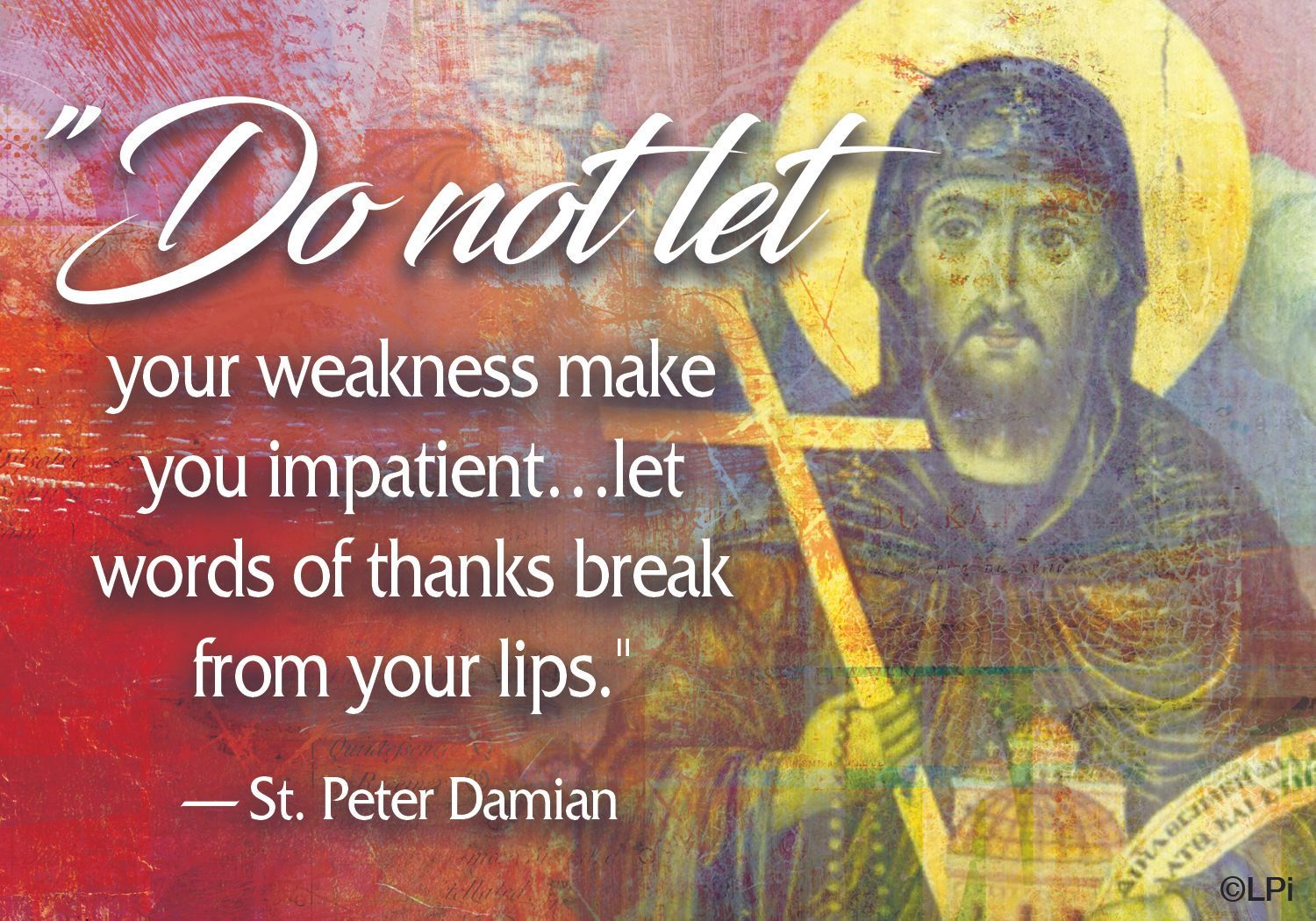SAINT OF THE WEEK
AND MANY MORE!
Visit the American Saint of the week page. Click the botton >>>>>
Saint Anthony Mary Zaccaria | July 5
On July 5, the Catholic Church remembers Saint Anthony Mary Zaccaria. A renowned preacher and promoter of Eucharistic adoration, he founded the order of priests now known as the Barnabites.
In 2001, the future Pope Benedict XVI, Cardinal Joseph Ratzinger, wrote the preface for a book on St. Anthony Mary Zaccaria, praising the saint as “one of the great figures of Catholic reform in the 1500s,” who was involved “in the renewal of Christian life in an era of profound crisis.”
The Italian saint, Cardinal Ratzinger wrote, “deserves to be rediscovered” as “an authentic man of God and of the Church, a man burning with zeal, a demanding forger of consciences, a true leader able to convert and lead others to good.”
Anthony Mary Zaccaria was born into an Italian family of nobility in Cremona during 1502. His father Lazzaro died shortly after Anthony's birth, and his mother Antonietta – though only 18 years old – chose not to marry again, preferring to devote herself to charitable works and her son's education.
Antonietta's son took after her in devotion to God and generosity toward the poor. He studied Latin and Greek with tutors in his youth, and was afterward sent to Pavia to study philosophy. He went on to study medicine at the University of Padua, earning his degree at age 22 and returning to Cremona.
Despite his noble background and secular profession, the young doctor had no intention of either marrying or accumulating wealth. While caring for the physical conditions of his patients, he also encouraged them to find spiritual healing through repentance and the sacraments.
Anthony also taught catechism to children, and went on to participate in the religious formation of young adults. He eventually decided to withdraw from the practice of medicine,
and with the encouragement of his spiritual director he began to study for the priesthood.
Ordained a priest at age 26, Anthony is said to have experienced
a miraculous occurrence during his first Mass, being surrounded by a supernatural light and a multitude of angels during the consecration of the Eucharist. Contemporary witnesses marveled at the event, and testified to it after his death.
Church life in Cremona had suffered decline in the late 15th and early 16th centuries. The new priest encountered widespread ignorance and religious indifference among laypersons, while many of the clergy were either weak or corrupt.
In these dire circumstances, Anthony Mary Zaccaria devoted his life to proclaiming the truths of the Gospel both clearly and charitably. Within two years, his eloquent preaching and tireless pastoral care is said to have changed the moral character of the city dramatically.
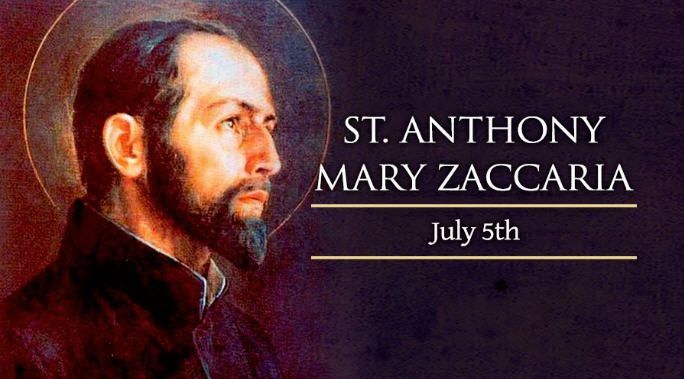
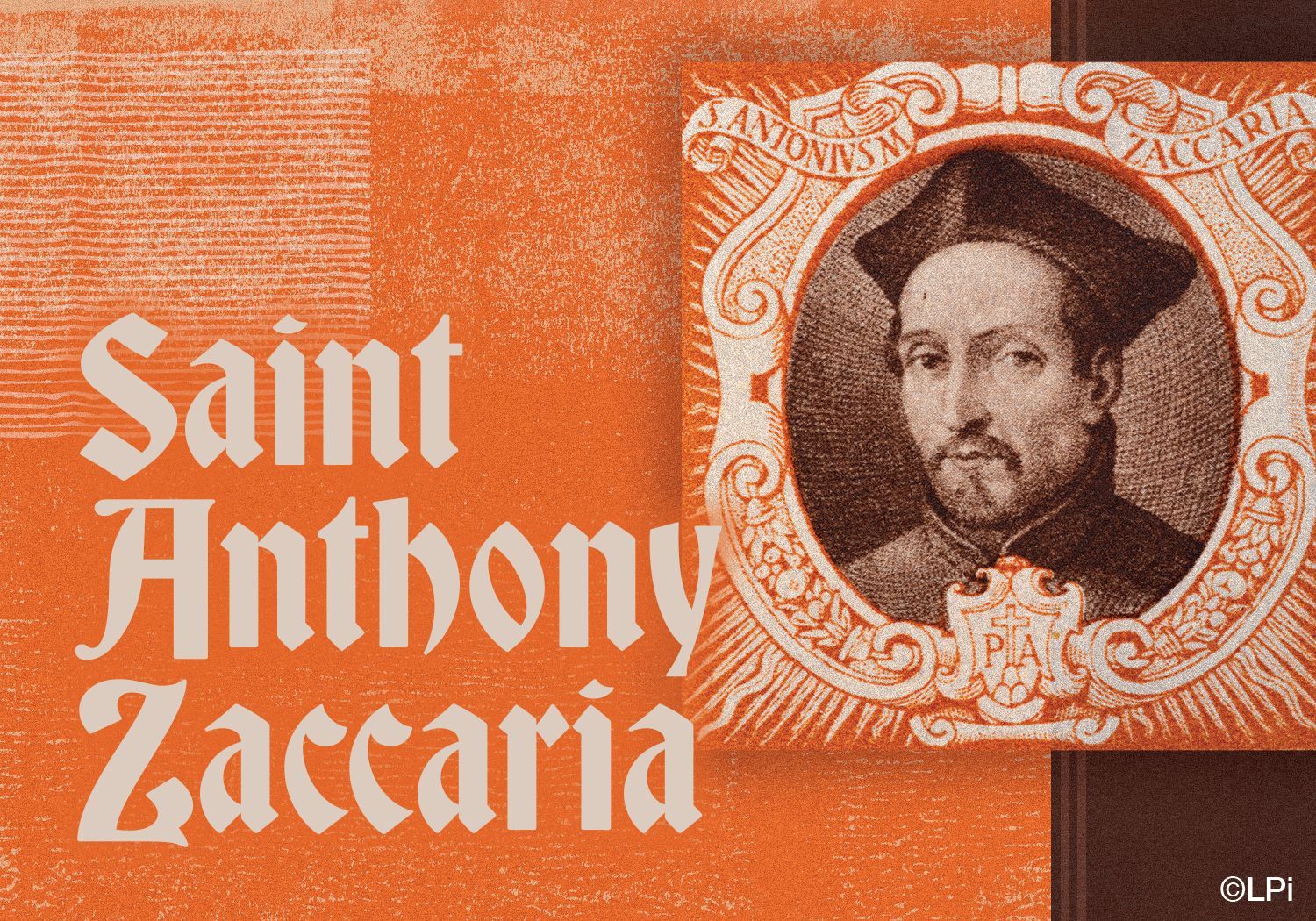
In 1530, Anthony moved to Milan, where a similar spirit of corruption and religious neglect prevailed. There, he decided to form a priestly society, the Clerics Regular of St. Paul.
Inspired by the apostle's life and writings, the order was founded on a vision of humility, asceticism, poverty, and preaching. After the founder's death, they were entrusted with a prominent church named for St. Barnabas, and became commonly known as the “Barnabites.”
The priest also founded a women's religious order, the Angelic Sisters of St. Paul; and an organization, the Laity of St. Paul, geared toward the sanctification of those outside the priesthood and religious life. He pioneered the “40 Hours” devotion, involving continuous prayer before the Blessed Sacrament.
In 1539, Anthony became seriously ill and returned to his mother's house in Cremona. The founder of the Clerics Regular of St. Paul died on July 5, during the liturgical octave of the Feast of Sts. Peter and Paul, at the age of only 36.
Nearly three decades after his death, St. Anthony Mary Zaccaria's body was found to be incorrupt. He was beatified by Blessed Pope Pius IX in 1849, and declared a saint by Pope Leo XIII in 1897.
Saint Elizabeth of Portugal | July 5
On July 5, the Catholic Church celebrates St. Elizabeth of Portugal, a queen who served the poor and helped her country avoid war during the 13th and 14th centuries.
Elizabeth of Portugal was named for her great-aunt, St. Elizabeth of Hungary, who was canonized in 1235. Their lives were similar in some important ways: both of them were married at very young ages, they sought to live the precepts of the Gospel despite their status as royalty, and finished their lives as members of the Third Order of St. Francis.
The younger Elizabeth was born in 1271, the daughter of King Pedro III of Aragon and his wife Constantia. Even in her youth, Elizabeth showed a notable devotion to God through fasting, regular prayer, and a sense of life's seriousness. While still very young, she was married to King Diniz of Portugal, a marriage that would put her faith and patience to the test.
King Diniz was faithfully devoted to his country, known as the “Worker King” because of his diligence. Unfortunately, he generally failed to live out the same faithfulness toward his wife, although he is said to have repented of his years of infidelity before his death. Diniz and Elizabeth had two children, but the king fathered an additional seven children with other women.
Many members of the king's court likewise embraced or accepted various forms of immorality, and it would have been easy for the young queen to fall into these vices herself. But Elizabeth remained intent on doing God's will with a humble and charitable attitude. Rather than using her status as queen to pursue her own satisfaction, she sought to advance Christ's reign on earth.
Like her namesake and great-aunt Elizabeth of Hungary, Elizabeth of Portugal was a devoted patroness and personal friend of the poor and sick, and she compelled the women who served her at court to care for them as well. The queen's bishop testified that she had a custom of secretly inviting in lepers, whom she would bathe and clothe, even though the law of the land barred them from approaching the castle.
Elizabeth's commitment to the Gospel also became evident when she intervened to prevent civil war in the kingdom on two occasions. Alfonso, the only son of Diniz and Elizabeth, resented the king's indulgent treatment of one of his illegitimate sons, to the point that the father and son gathered together rival armies that were on the brink of open war in 1323.
On this occasion, St. Elizabeth placed herself between the two opposing armies, insisting that Diniz and Alfonso come to terms and make peace with one another. In 1336, the last year of her life, she intervened in a similar manner to prevent her son from waging war against the King of Castile for his poor treatment of Alfonso's own daughter.
Following King Diniz's death in 1325, Elizabeth had become a Franciscan of the Third Order, and had gone to live in a convent that she had established some years before. The testimony of miracles accomplished through her intercession, after her death in 1336, contributed to her canonization by Pope Urban VIII in 1625.
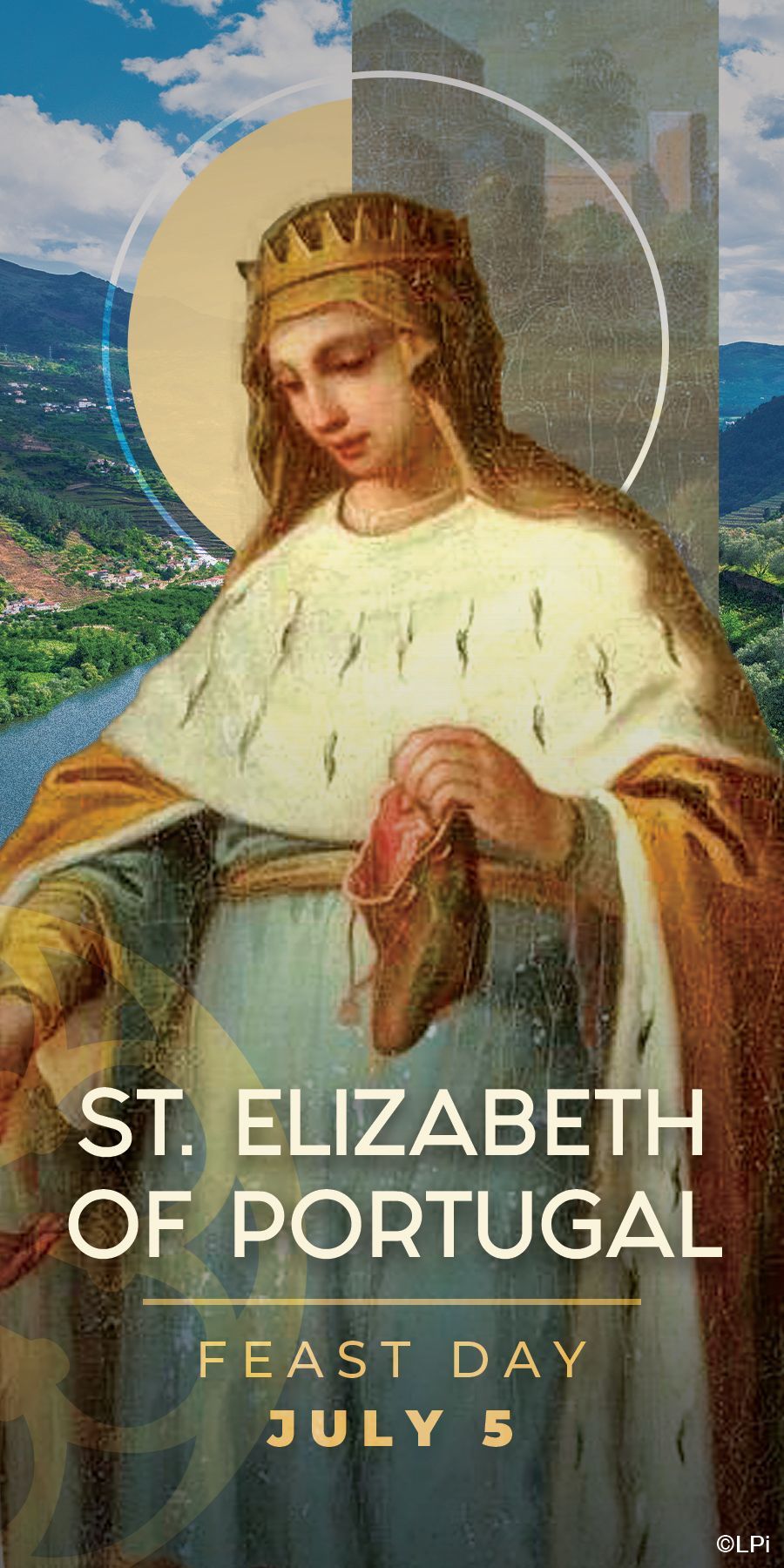
Saint Thomas Apostle | July 3
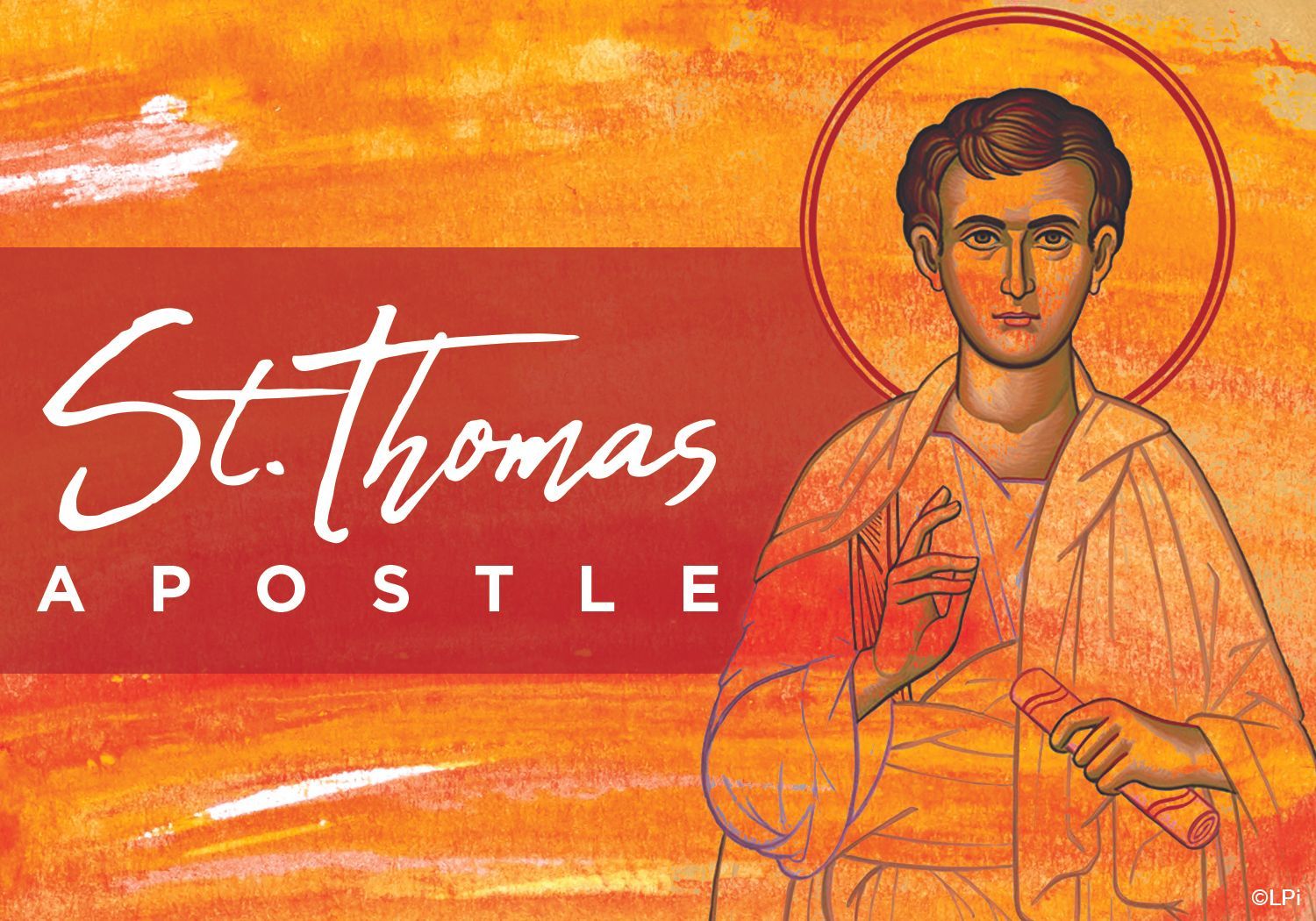
On July 3, the Church celebrates the feast day of St. Thomas the Apostle. Best known for his initial unwillingness to believe the other apostles in their claim that Jesus had risen from the dead, St. Thomas can teach the faithful about believing without seeing. As an apostle, Thomas was dedicated to following the Lord. Upon hearing that Jesus was returning to Judea, an area that would pose dangers due to the growing animosity of the authorities there, he immediately said to the other apostles, "Let us also go, that we may die with him" (Jn 11: 16).
Yet despite this determination, Thomas proved not only too weak to stand beside Jesus as he faced his crucifixion, but also doubted the Lord’s Resurrection when he was told about it by the other apostles. Denying their story, he told them, "Unless I see in his hands the print of the nails, and place my finger in the mark of the nails, and place my hand in his side, I will not believe" (Jn 20:25).
A week later, Christ appeared and said to Thomas, "Put your finger here and see my hands, and bring your hand and put it into my side, and do not be unbelieving, but believe." When Thomas did so he exclaimed, "My Lord and my God!"
In his general audience on September 27, 2006, Pope Benedict XVI spoke of St. Thomas, explaining that we can learn from his doubts, which show us "that Jesus can now be recognized by his wounds rather than by his face."
"The Apostle Thomas’ case is important to us for at least three reasons," said the Pope. "First, because it comforts us in our insecurity; second, because it shows us that every doubt can lead to an outcome brighter than any uncertainty; and, lastly, because the words that Jesus addressed to him remind us of the true meaning of mature faith and encourage us to persevere, despite the difficulty, along our journey of adhesion to him."
After Pentecost, St. Thomas is traditionally believed to have preached the Good News to the Persians and Medes, until he reached India, where he evangelized and was eventually martyred in 72 A.D.
St. Thomas’ feast day is July 3, and he is the patron of architects and builders.
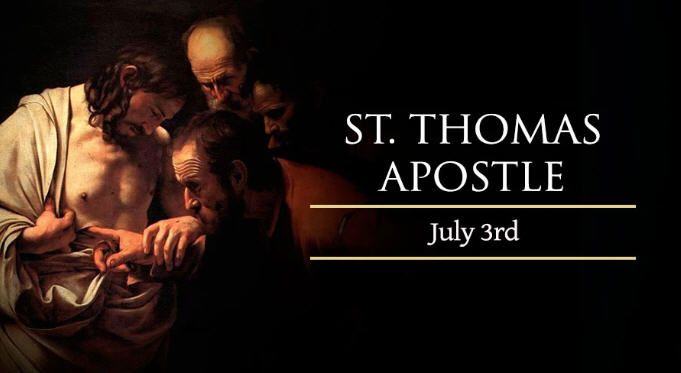
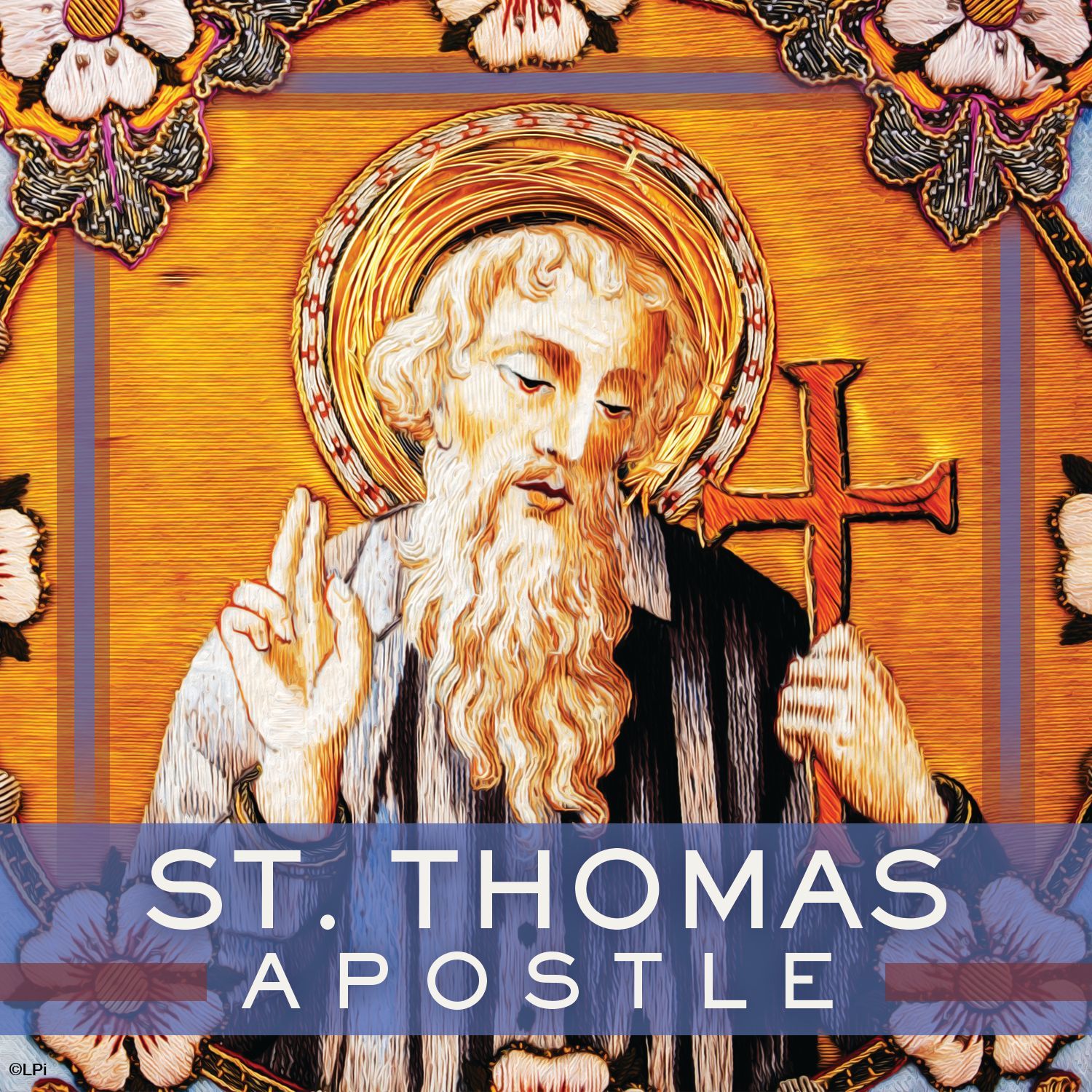

Saint Junipero Serra | July 1
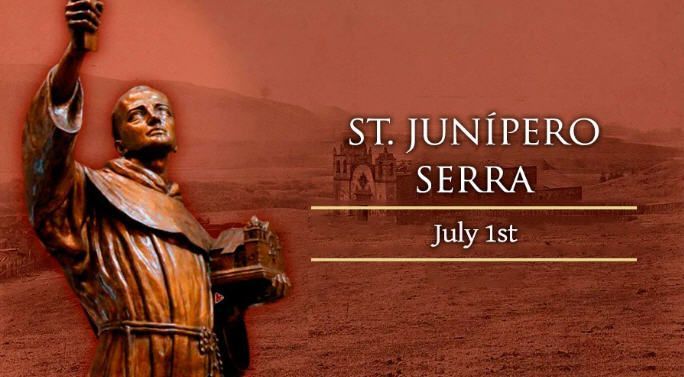
St. Junípero Serra was born on November 24, 1713 on the island of Majorca, Spain. He joined the Franciscans in 1730, and became so accomplished as a student that he was appointed a lector of philosophy before his ordination.
As an academic, he was promising. After earning his PhD, he began teaching eventually earning the Duns Scotus chair of philosophy. However, at 36, he gave up this career, desiring instead to be a missionary in the New World.
Padre Serra began his missionary work in Mexico. While working among the Pame Indians, he learned their language and translated the catechism for their understanding. Working in Mexico, he gained a reputation as a preacher deeply devoted to penance and mortification. He would pound his breast with a stone and even hold a lighted torch to his bare chest. He was also known for doing the work of young boys in cleaning the convent of San Fernando, where he was first assigned. Soon after his arrival in the New World, he sustained a spider bite to his leg that would leave him permanently injured. However, he was still known to walk everywhere whenever possible.
In 1767, Serra was assigned to preach in what was then called Upper California, encompassing much of the modern-day state. Here, he established several missions, for which he became famous. These missions remain today, and stretch from San Diego to San Francisco.
Padre Serra died in 1784. Many native peoples whom he had worked with wept openly at his funeral. He is at San Carlos Borromeo Mission in Carmel by the Sea. He is credited with bringing the faith to the California region.
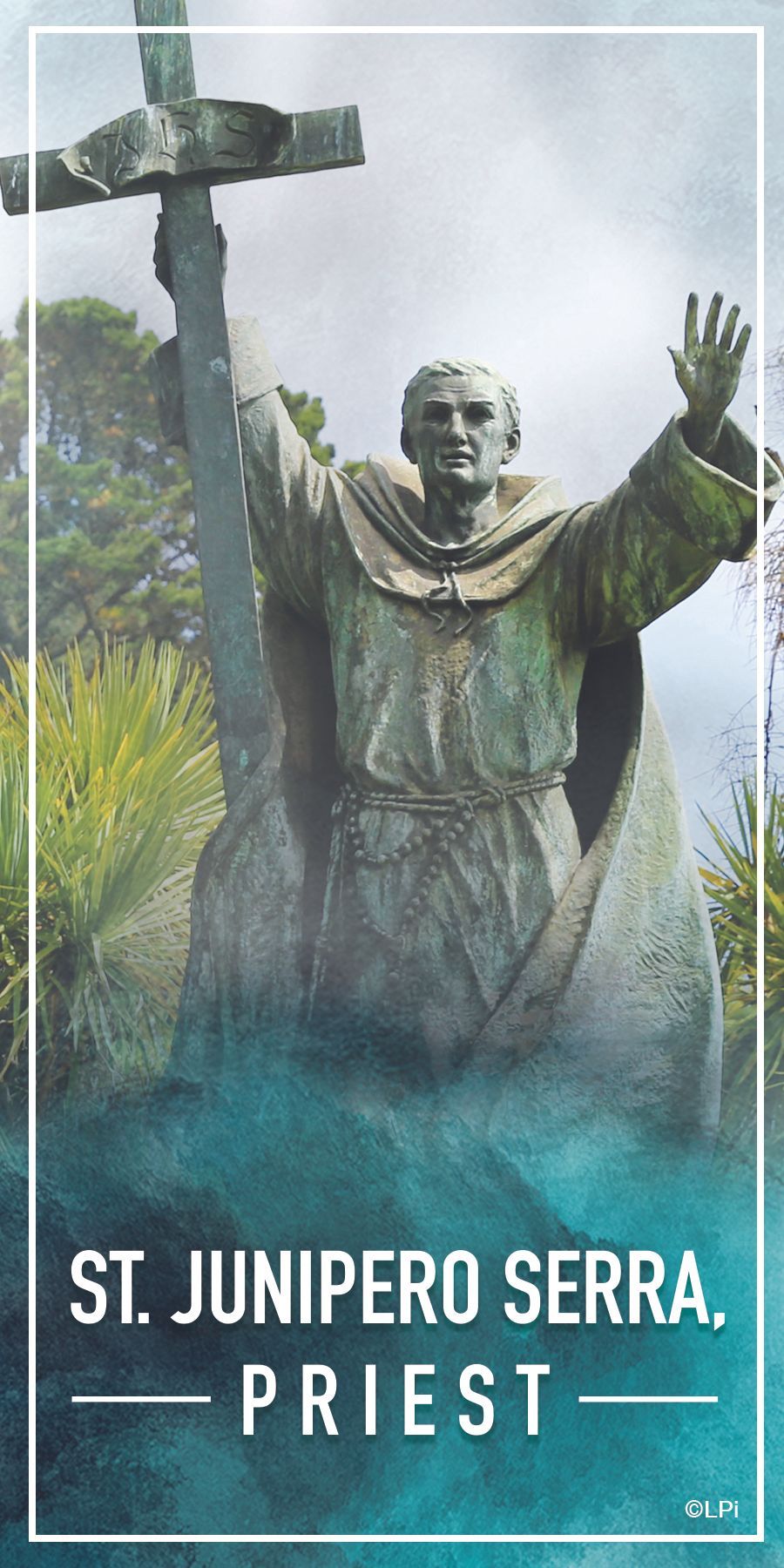
The First Martyrs of the Holy Roman Church | June 30
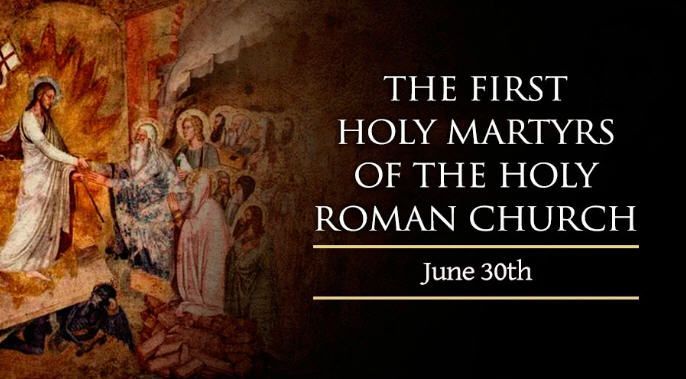
These “proto-martyrs” of Rome were the first Christians persecuted en masse by the Emperor Nero in the year 64, before the martyrdom of Saints Peter and Paul.
Nero was widely believed to have caused the fire that burned down much of Rome in the same year. He blamed the fire on the Christians and put them to death, many by crucifixion, being feeding to the wild animals in his circus, or by being tied to posts and lit up as human torches.
Today, the site of Nero's Circus, also the location of St. Peter's martyrdom, is marked by the Piazza dei Protomartiri Romani (Square of the Roman Protomartyrs) in the Vatican next to St. Peter's basilica.
These martyrs were called the “Disciples of the Apostles” and their firmness in the face of their gruesome deaths were a powerful testimony that led to many conversions in the early Roman Church.
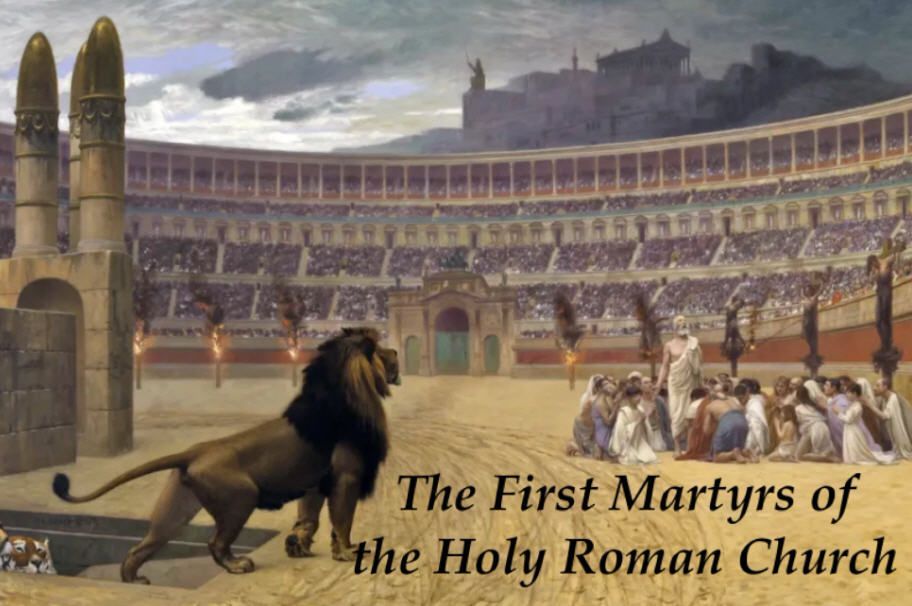
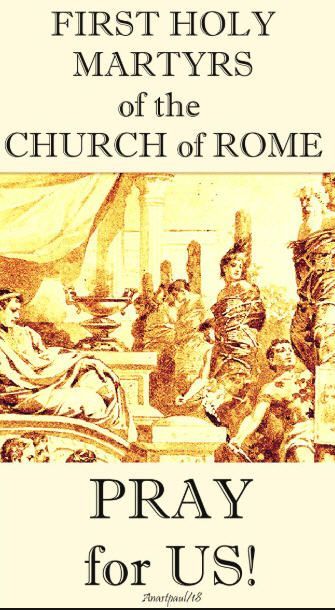
Saints Peter and Paul Apostles | June 29
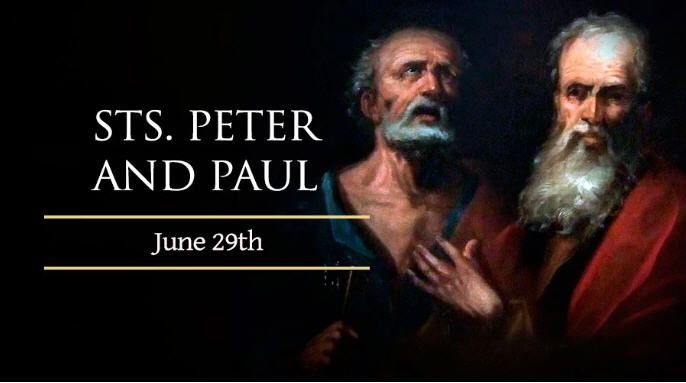
On June 29 the Church celebrates the feast day of Sts. Peter & Paul. As early as the year 258, there is evidence of an already lengthy tradition of celebrating the solemnities of both Saint Peter and Saint Paul on the same day. Together, the two saints are the founders of the See of Rome, through their preaching, ministry and martyrdom there.
Peter, who was named Simon, was a fisherman of Galilee and was introduced to the Lord Jesus by his brother Andrew, also a fisherman. Jesus gave him the name Cephas (Petrus in Latin), which means ‘Rock,’ because he was to become the rock upon which Christ would build His Church.
Peter was a bold follower of the Lord. He was the first to recognize that Jesus was “the Messiah, the Son of the living God,” and eagerly pledged his fidelity until death. In his boldness, he also made many mistakes, however, such as losing faith when walking on water with Christ and betraying the Lord on the night of His passion.
Yet despite his human weaknesses, Peter was chosen to shepherd God's flock. The Acts of the Apostles illustrates his role as head of the Church after the Resurrection and Ascension of Christ. Peter led the Apostles as the first Pope and ensured that the disciples kept the true faith.
St. Peter spent his last years in Rome, leading the Church through persecution and eventually being martyred in the year 64. He was crucified upside-down at his own request, because he claimed he was not worthy to die as his Lord.
He was buried on Vatican hill, and St. Peter's Basilica is built over his tomb.
St. Paul was the Apostle of the Gentiles. His letters are included in the writings of the New Testament, and through them we learn much about his life and the faith of the early Church.
Before receiving the name Paul, he was Saul, a Jewish pharisee who zealously persecuted Christians in Jerusalem. Scripture records that Saul was present at the martyrdom of St. Stephen.
Saul's conversion took place as he was on his way to Damascus to persecute the Christian community there. As he was traveling along the road, he was suddenly surrounded by a great light from heaven. He was blinded and fell off his horse. He then heard a voice saying to him, “Saul, Saul, why do you persecute me?” He answered: “Who are you, Lord?” Christ said: “I am Jesus, whom you are persecuting.”
Saul continued to Damascus, where he was baptized and his sight was restored. He took the name Paul and spent the remainder of his life preaching the Gospel tirelessly to the Gentiles of the Mediterranean world.
Paul was imprisoned and taken to Rome, where he was beheaded in the year 67.
He is buried in Rome in the Basilica of St. Paul Outside the Walls.
In a sermon in the year 395, St. Augustine of Hippo said of Sts. Peter and Paul: “Both apostles share the same feast day, for these two were one; and even though they suffered on different days, they were as one. Peter went first, and Paul followed. And so we celebrate this day made holy for us by the apostles' blood. Let us embrace what they believed, their life, their labors, their sufferings, their preaching, and their confession of faith.”
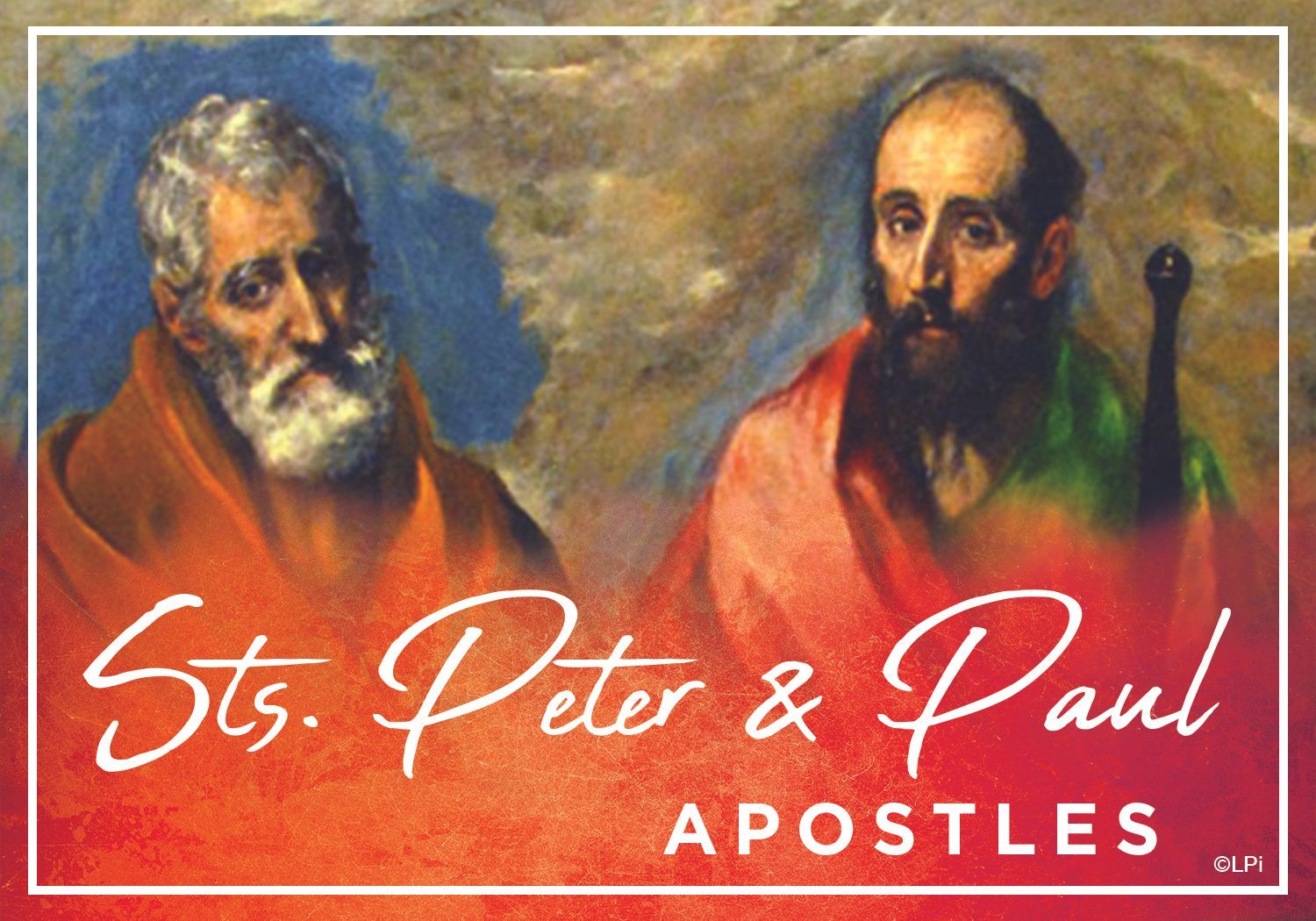
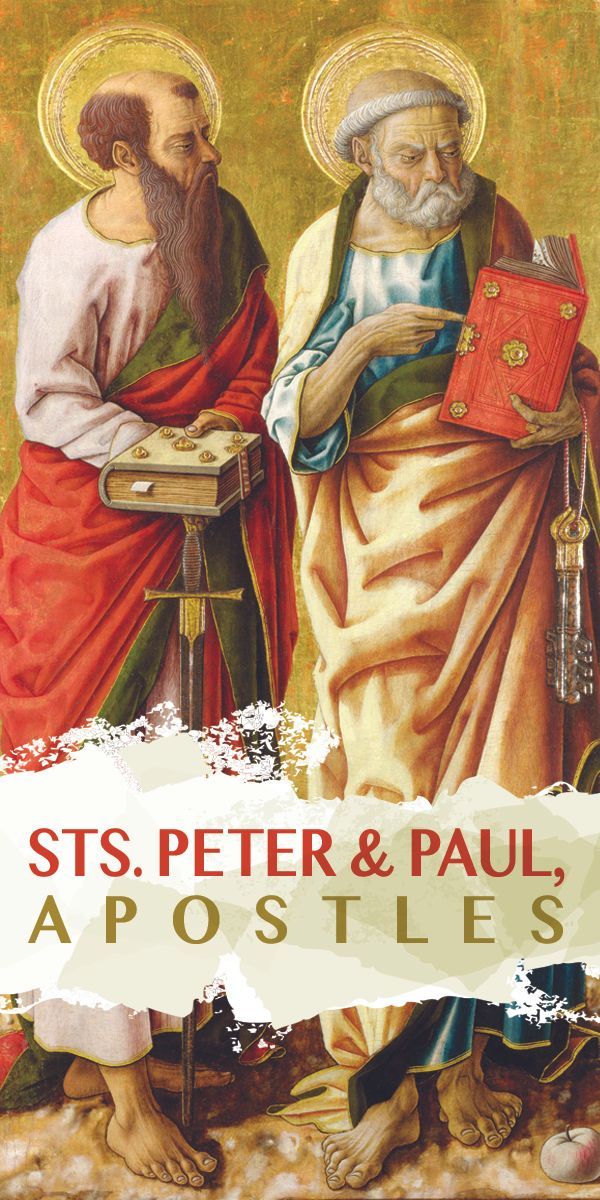
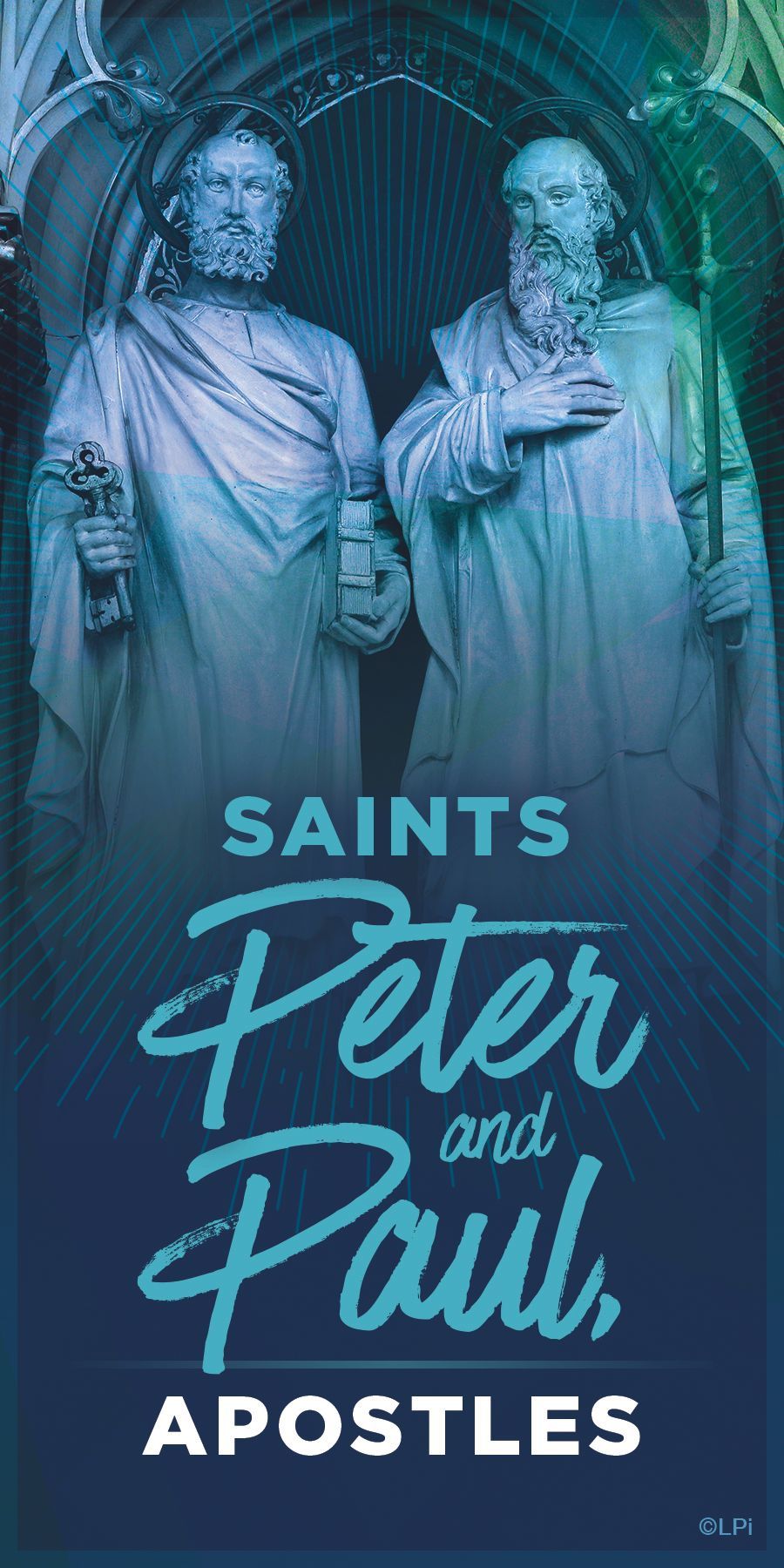
THE FEAST OF THE SACRED HEART OF JESUS | JUNE 27
June is known as the month of the Sacred Heart of Jesus most simply because the solemnity of the Sacred Heart is celebrated during this month. This year, the solemnity falls on June 7. The date changes each year because it is celebrated on the Friday after the Corpus Christi octave, or the Friday after the second Sunday after Pentecost.
However, other reasons exist as to why June is dedicated to the Sacred Heart.
The feast dates back to 1673, when a French nun who belonged to the Order of the Visitation of Holy Mary (Visitandines) in eastern France began to receive visions of Jesus.
Jesus appeared to Sister Margaret Mary Alacoque and revealed ways to venerate his Sacred Heart and explained the immense love he has for humanity, appearing with his heart visib
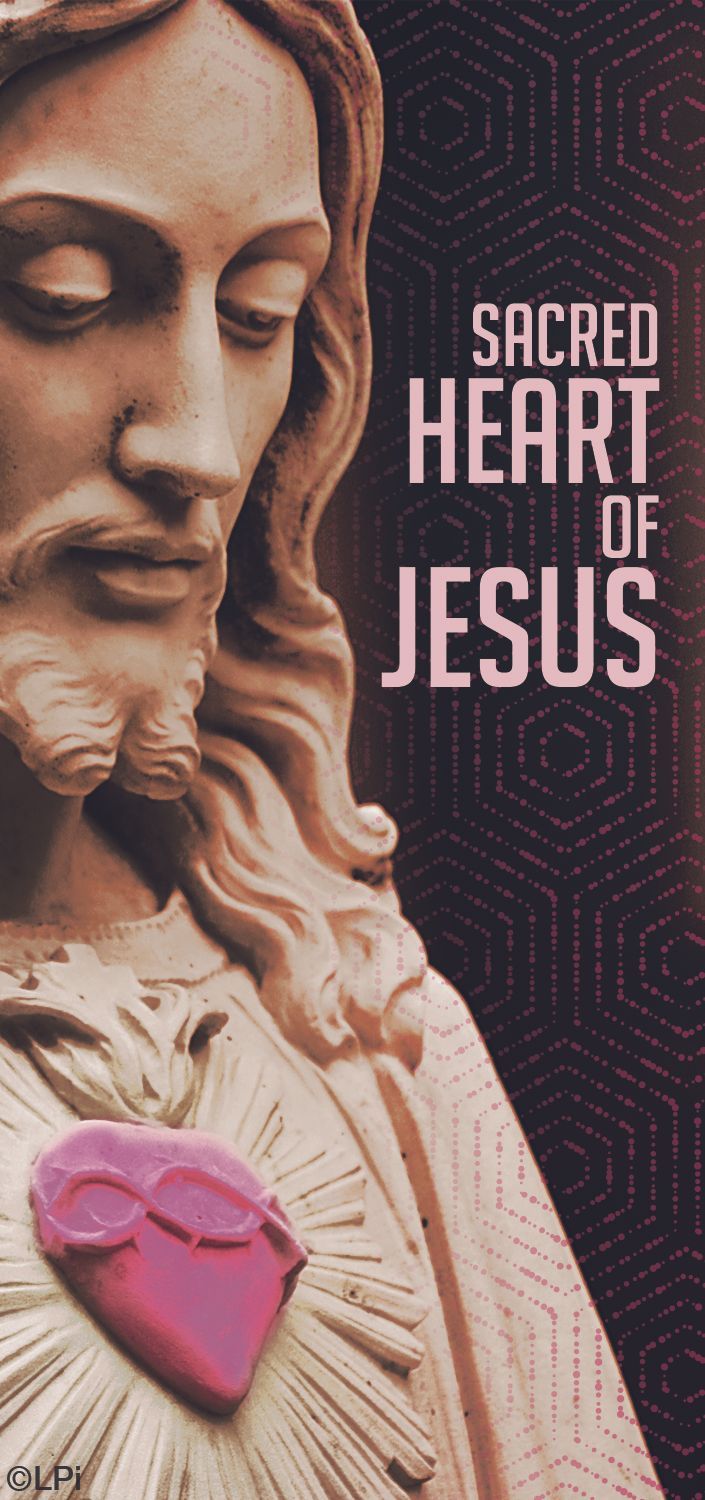

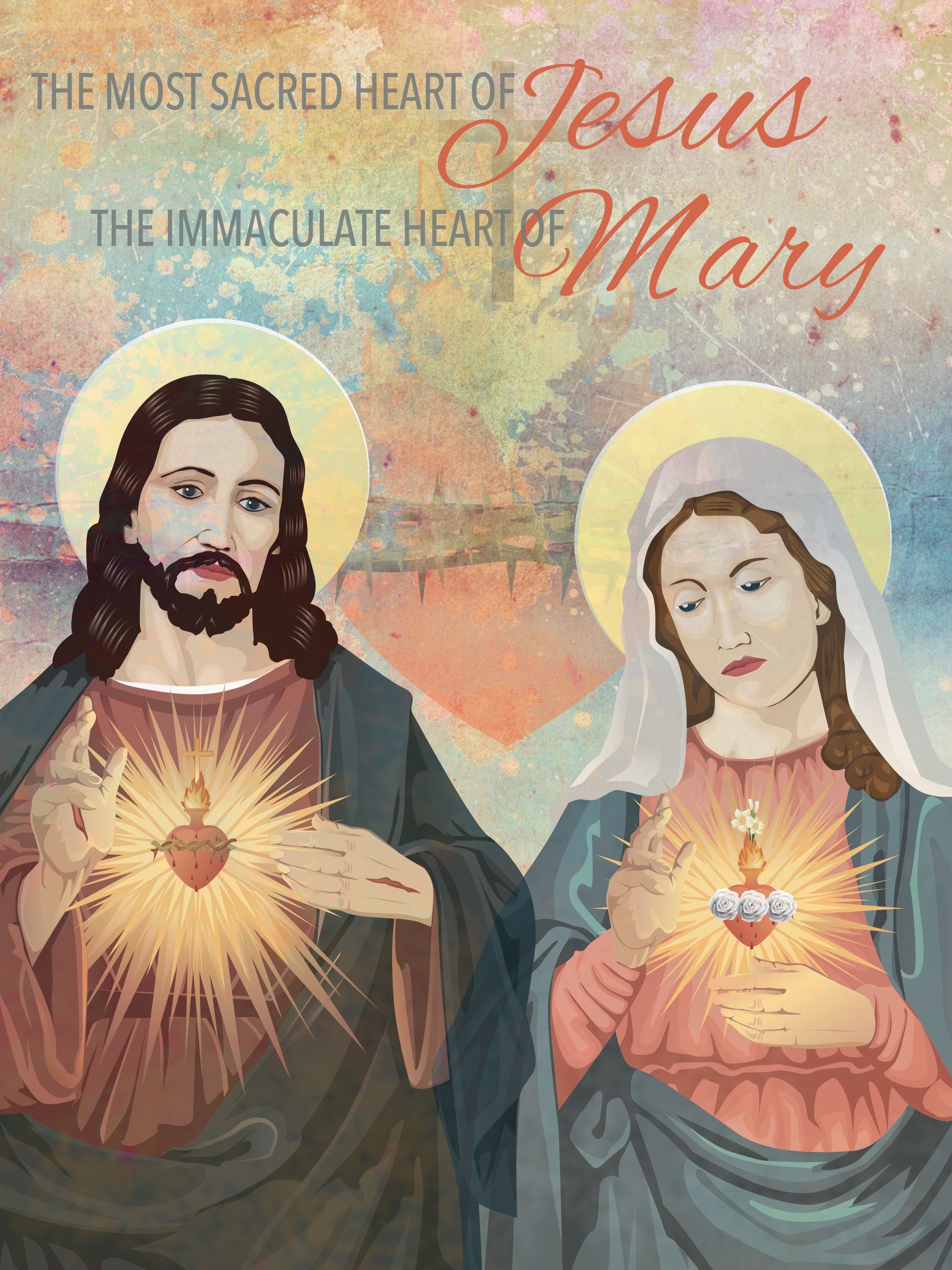
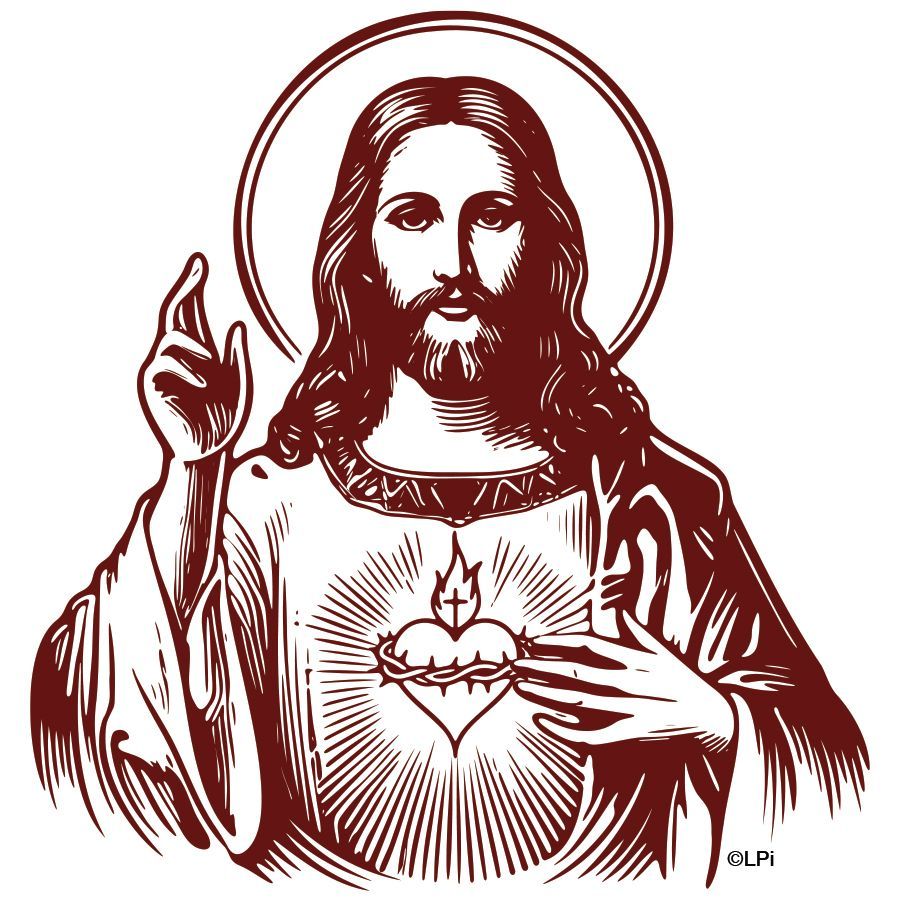
The Nativity of St. John The Baptist | June 24
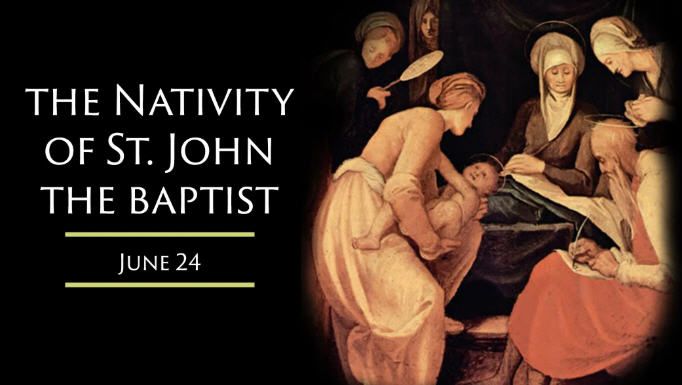
John the Baptist spent his adult life preparing the way for Jesus, and proclaiming that “the Kingdom of Heaven is close at hand.”. He was born to Zachary and Elizabeth, an elderly married couple. The Angel Gabriel had visited Zachary and told him that his wife would bear a child, even though she was already past the child-bearing age.
Elizabeth was Mary’s cousin and Zachary was a priest of the Temple in Jerusalem. As a baby in the womb, John recognized Jesus’ presence in Mary’s womb when Mary visited Elizabeth soon after the Annunciation. Both women were pregnant at the same time.
John was probably born at Ain-Karim, which is southwest of Jerusalem. As a young adult, he lived as a hermit in the desert of Judea until about A.D. 27. When he was 30, he began to preach on the banks of the Jordan, calling for repentance and baptizing people in the river waters. When Jesus came to John to be baptized, John recognized Jesus as the Messiah and baptized Him, saying: “It is I who need baptism from you.”
John continued to preach after Jesus was baptized, but was imprisoned not long after by Herod Antipas, after he denounced the king’s adulterous marriage with Herodias, wife of his half-brother Philip.
John was beheaded at the request of Salome, daughter of Herodias. Many came to know Jesus through John, namely the Apostles Andrew and John.
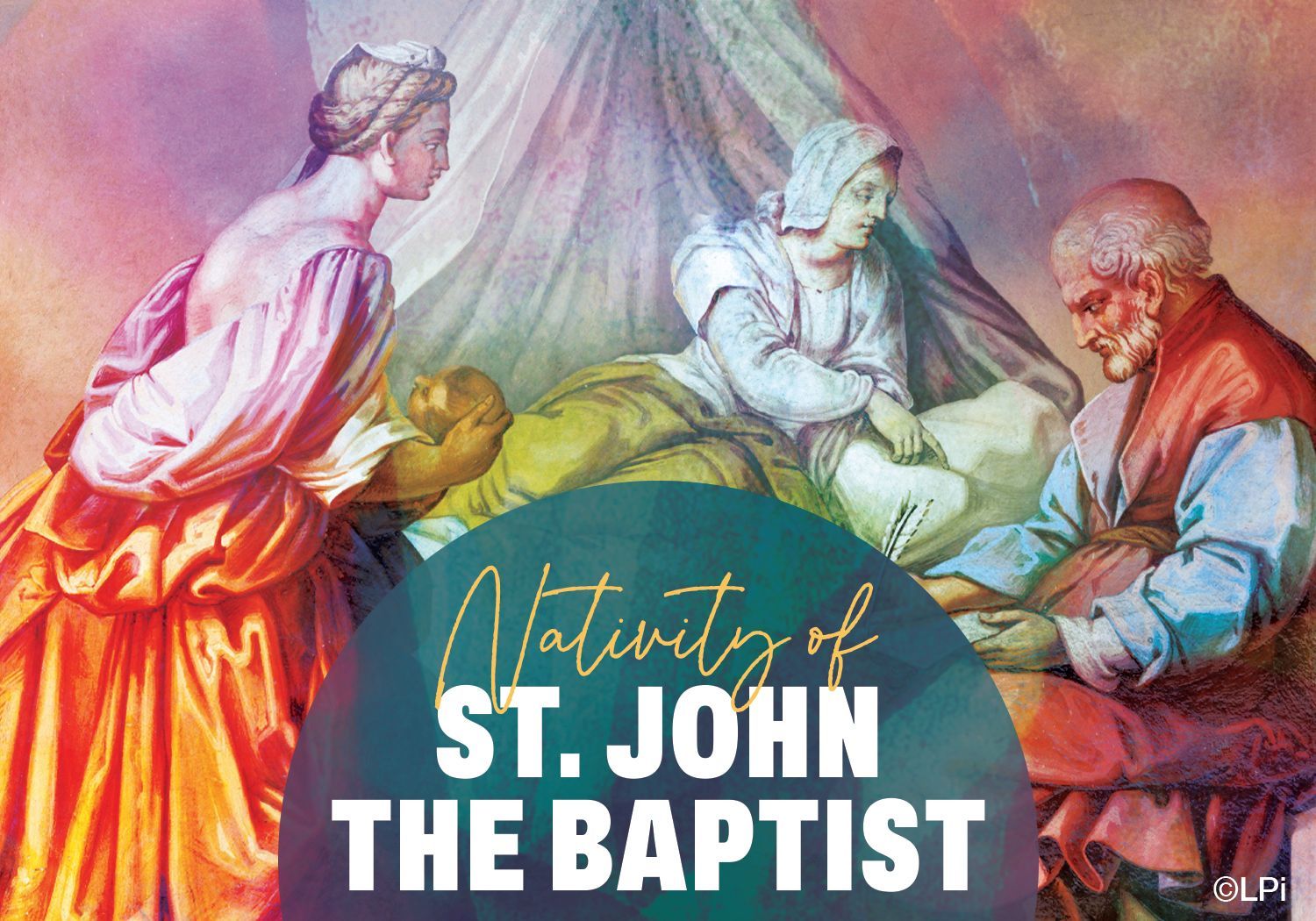
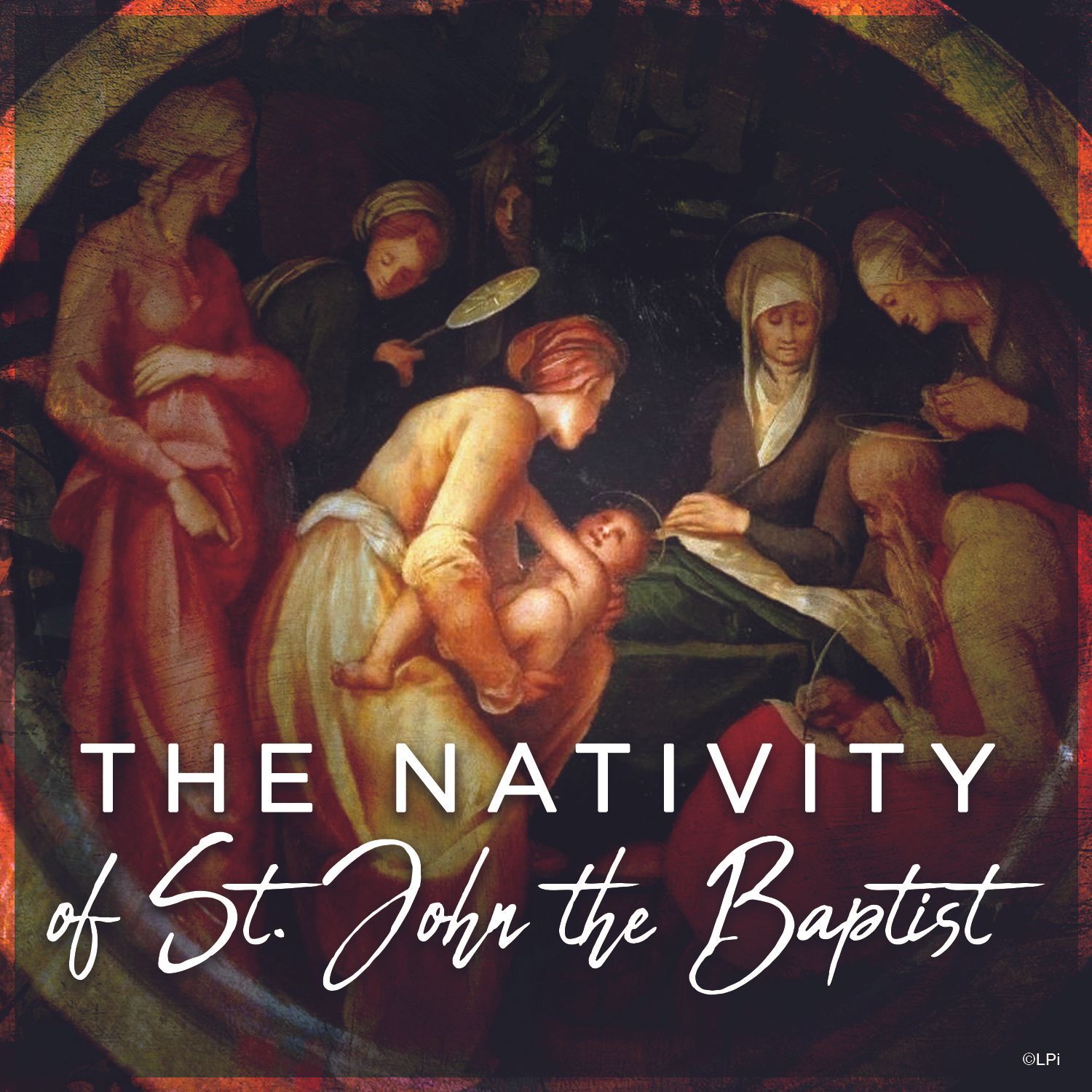
Saint Aloysius Gonzaga | June 21
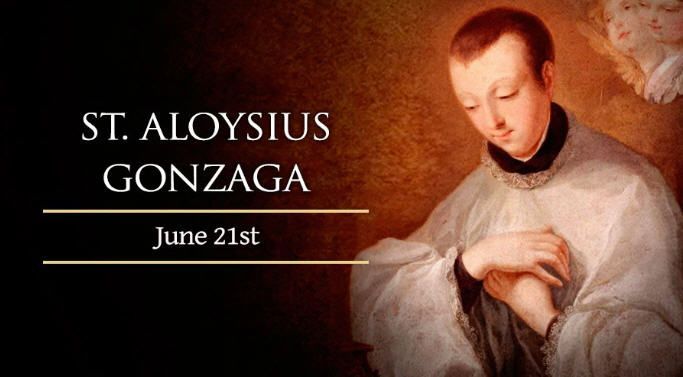
As a young boy, St. Aloysius always had a great desire to know and serve God, but his family life was not always supportive of this desire. He was born into a noble Italian family, and his father was a compulsive gambler. He grew up in a castle and was trained from a very young age to be a soldier and courtier, and despite the opposition of his family, he taught catechism to poor boys.
He encountered many holy people in his lifetime; he received his first Communion from St. Charles Borromeo and studied under St. Robert Bellarmine. As a teen, he suffered from a kidney disease which he considered a blessing, as it left him with plenty of time for prayer.
At 18 he signed away his legal claim to his title and his family's lands and entered the Jesuits. He died shortly thereafter of the plague at the age of 23, having devotedly cared for plague victims in Rome in the outbreak of 1591.
He was canonized in 1726 and is the patron saint of youth, AIDS patients and AIDS caregivers.
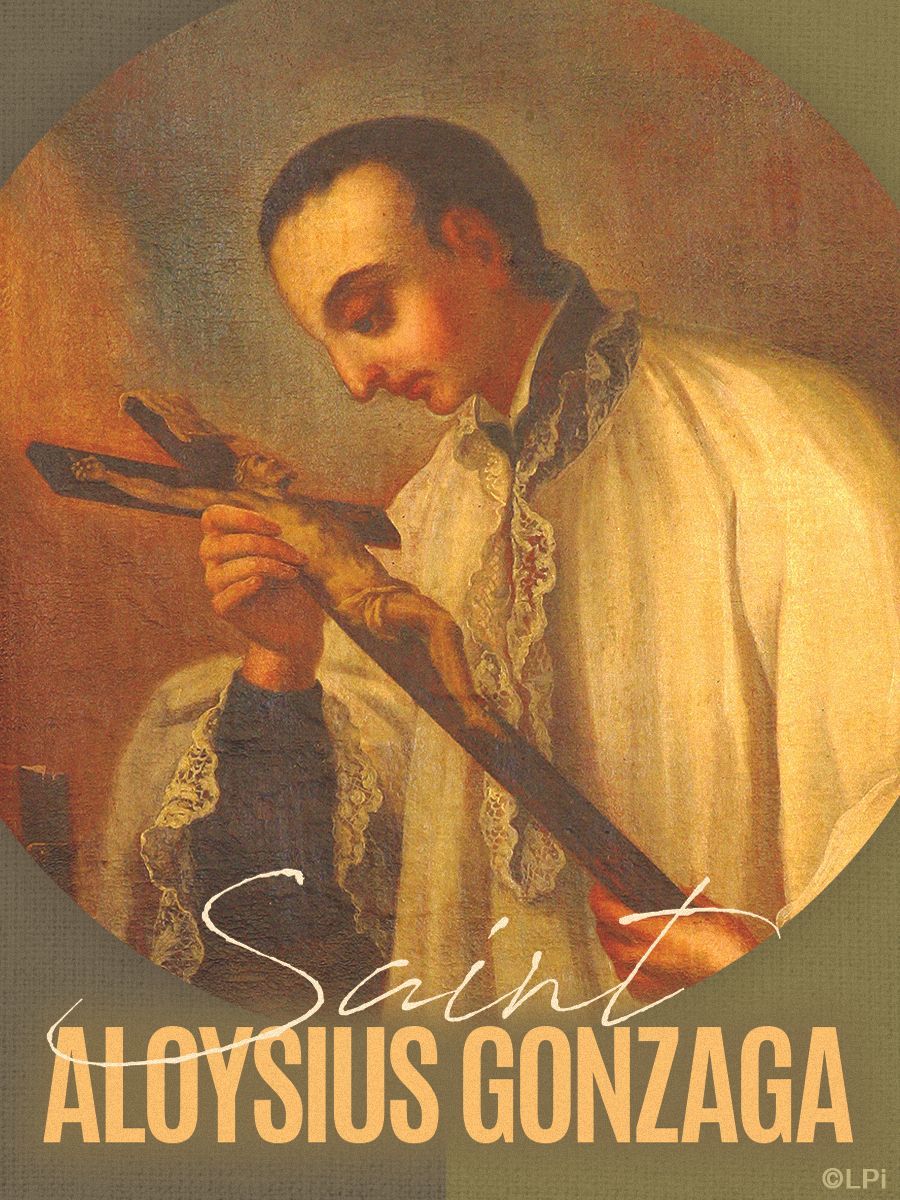
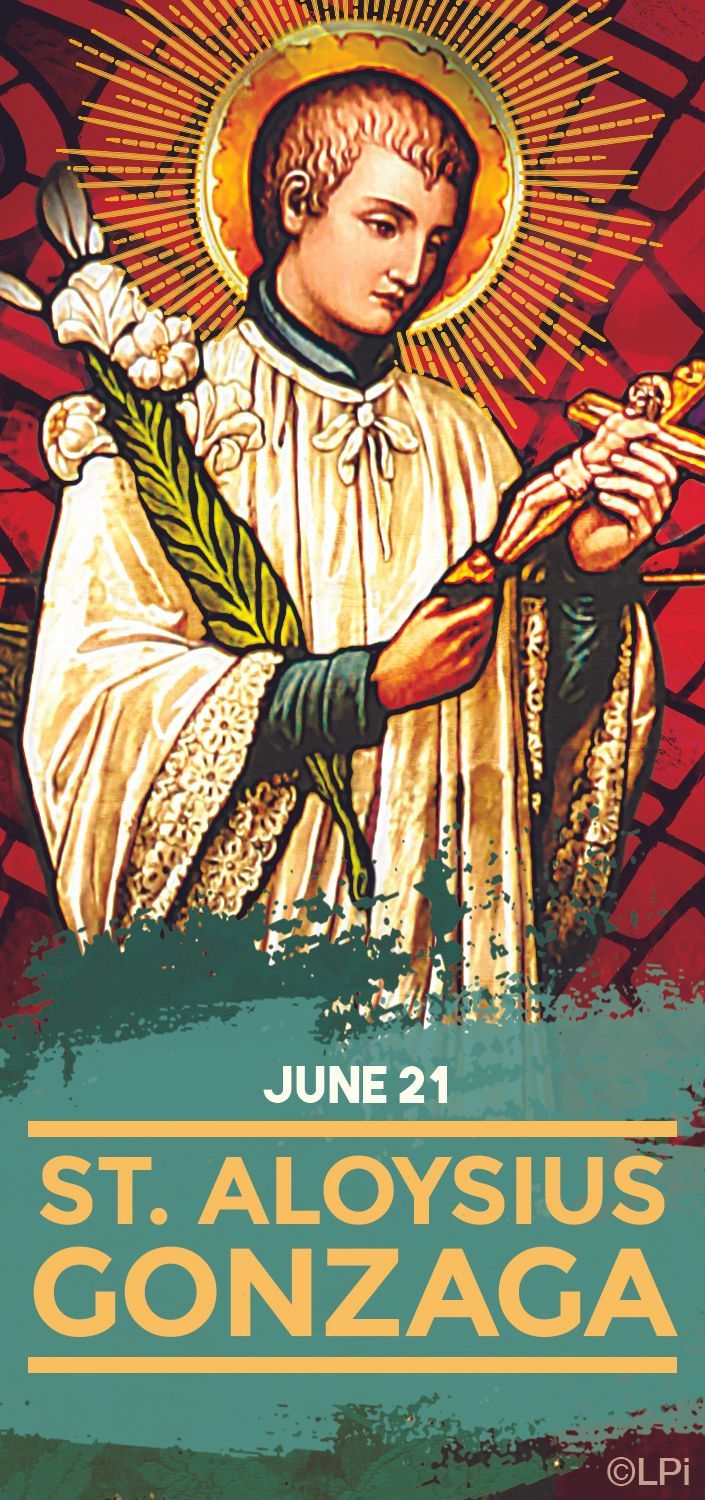
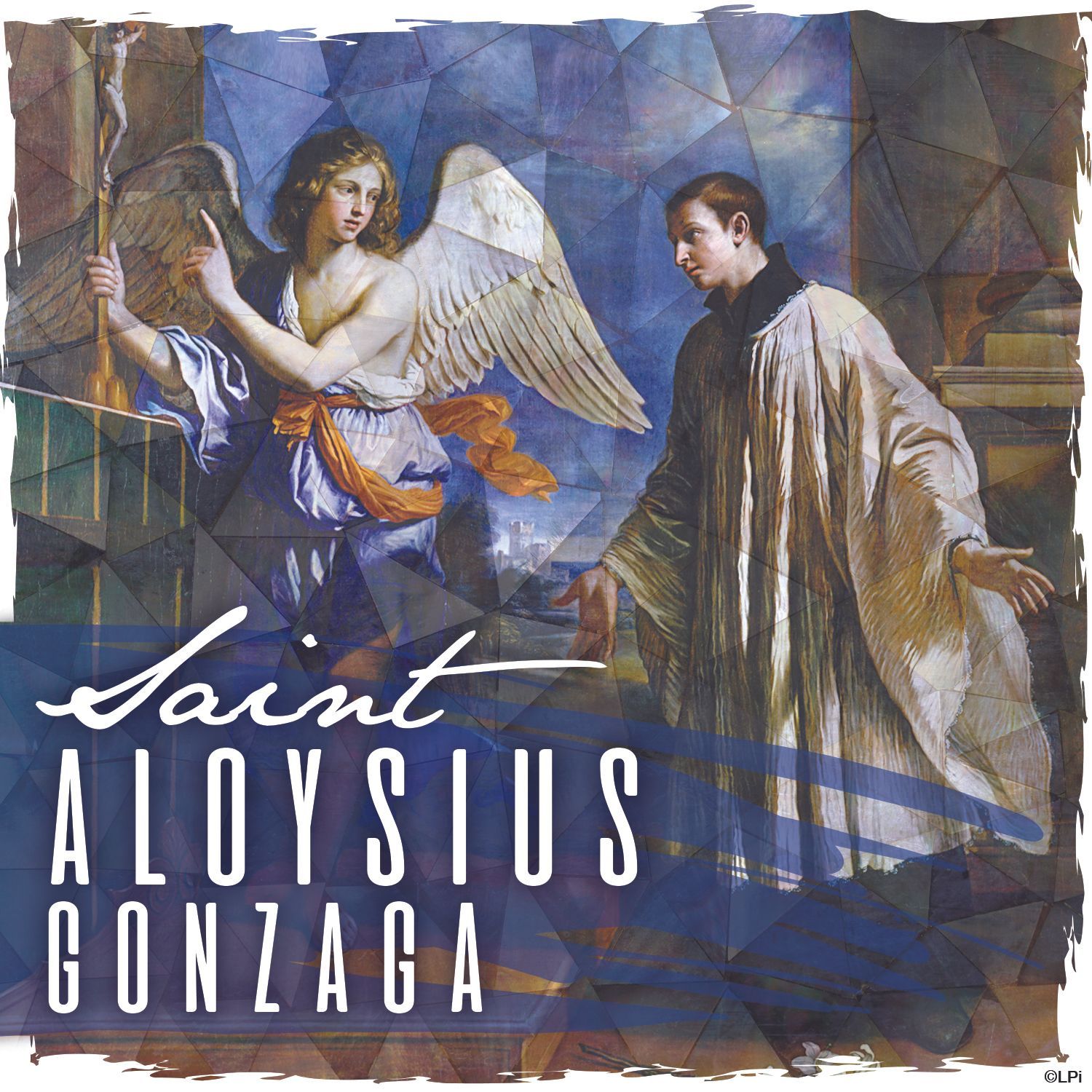

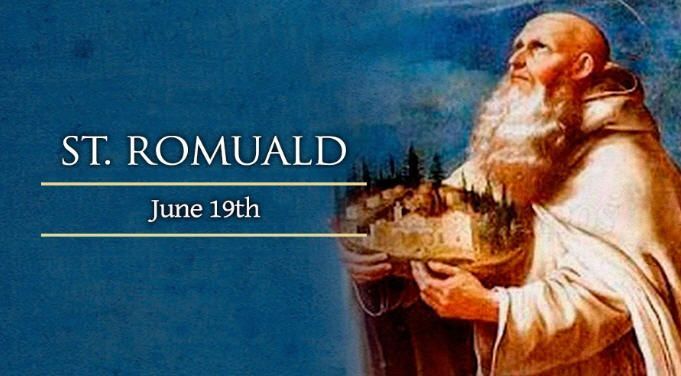
Saint Romuald, who founded the Camaldolese monastic order during the early eleventh century, has his liturgical memorial on June 19.
Working within the Western Church’s Benedictine tradition, he revived the primitive monastic practice of hermit life, allowing for greater solitude in a communal setting.
Born into an aristocratic family during the middle of the tenth century, Romuald grew up in a luxurious and worldly environment, where he learned little in the way of self-restraint or religious devotion. Yet he also felt an unusual attraction toward the simplicity of monastic life, prompted by the beauty of nature and the experience of solitude .
It was not beauty or tranquility, but a shocking tragedy that spurred him to act on this desire. When Romuald was 20 years old, he saw his father Sergius kill one of his relatives in a dispute over some property. Disgusted by the crime he had witnessed, the young man went to the Monastery of St. Apollinaris to do 40 days of penance for his father.
These 40 days confirmed Romuald’s monastic calling, as they became the foundation for an entire life of penance. But this would not be lived out at St. Apollinaris, where Romuald’s strict asceticism brought him into conflict with some of the other monks. He left the area near Ravenna and went to Venice, where he became the disciple of the hermit Marinus.


Saint Anthony of Padua | June 13
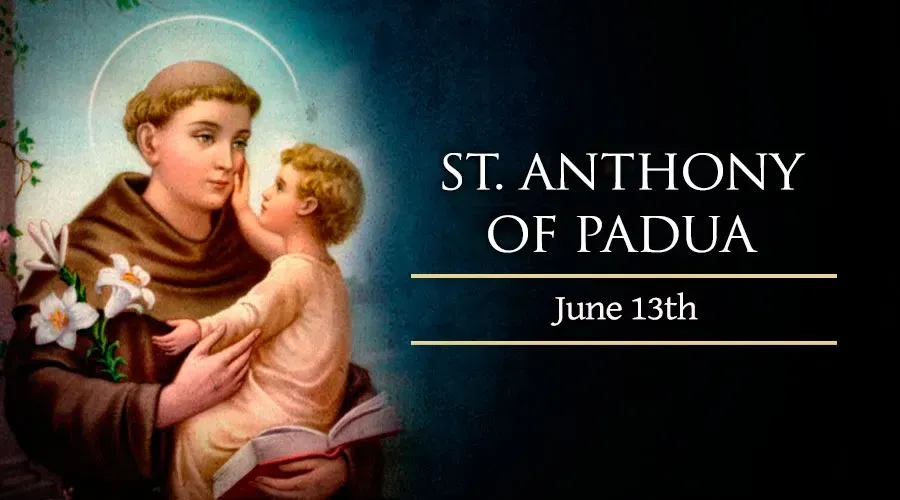
On June 13, Catholics honor the memory of the Franciscan priest St. Anthony of Padua. Although he is popularly invoked today by those who have trouble finding lost objects, he was known in his own day as the “Hammer of Heretics” due to the powerful witness of his life and preaching.
The saint known to the Church as Anthony of Padua was not born in the Italian city of Padua, nor was he originally named Anthony. He was born as Ferdinand in Lisbon, Portugal during 1195, the son of an army officer named Martin and a virtuous woman named Mary. They had Ferdinand educated by a group of priests, and the young man made his own decision to enter religious life at age 15.
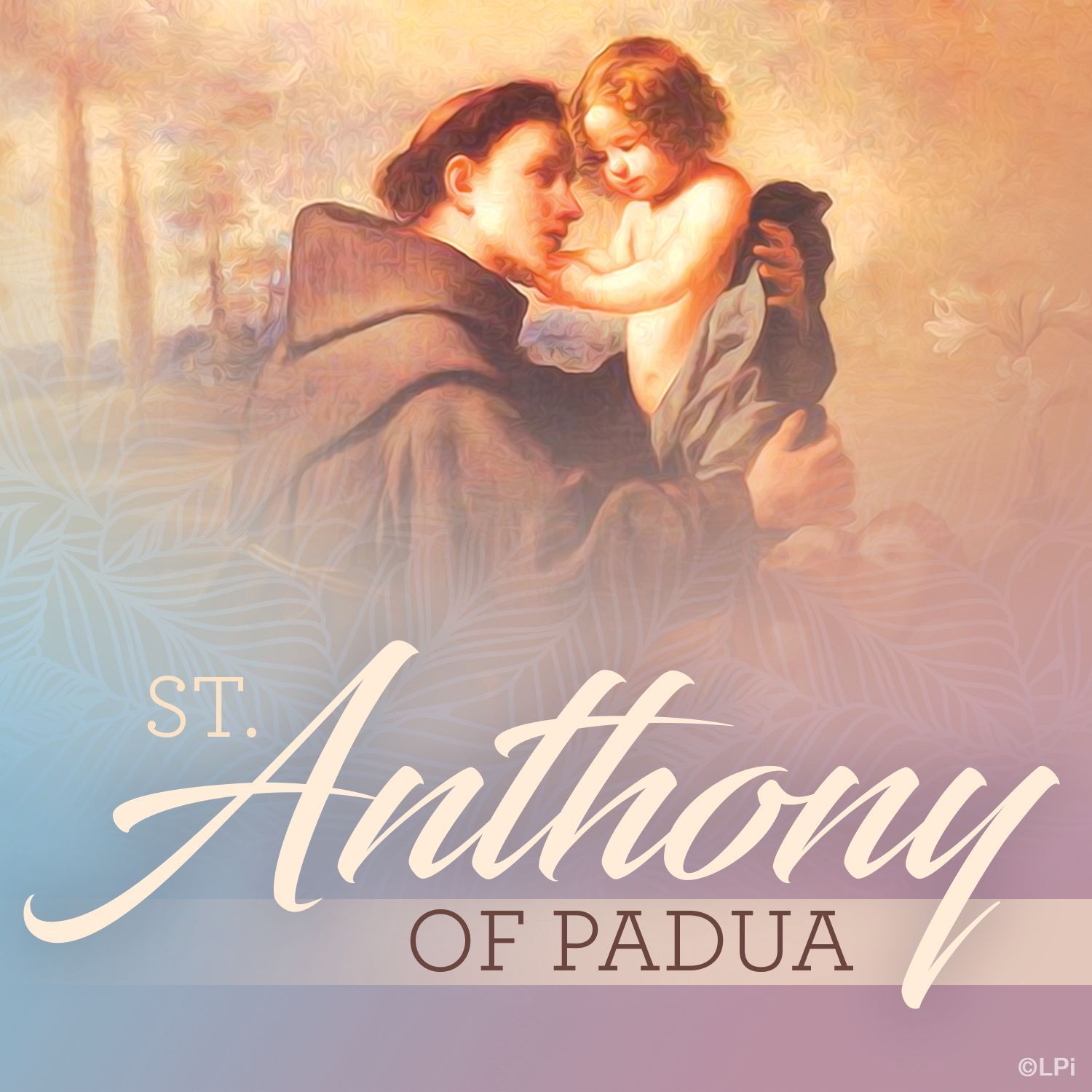
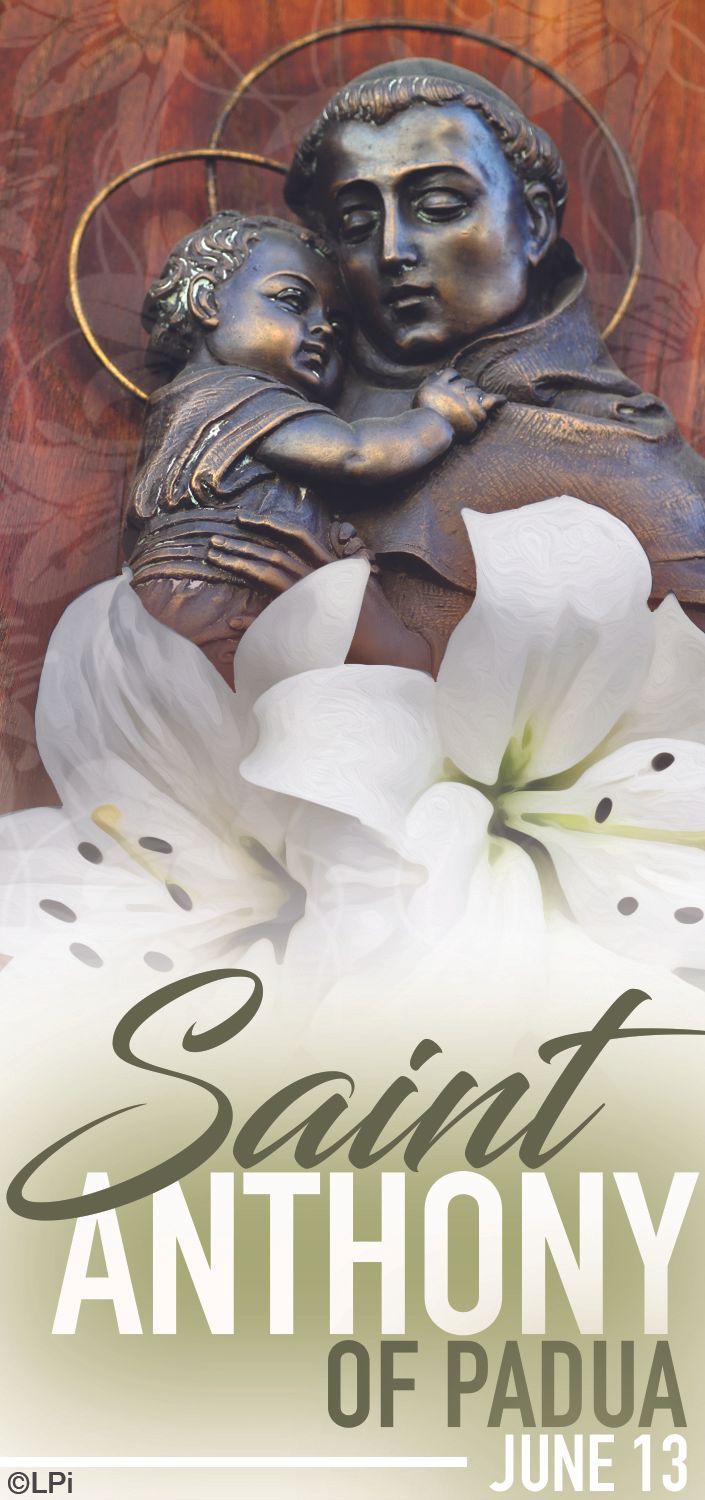
Saint Barnabas | June 11
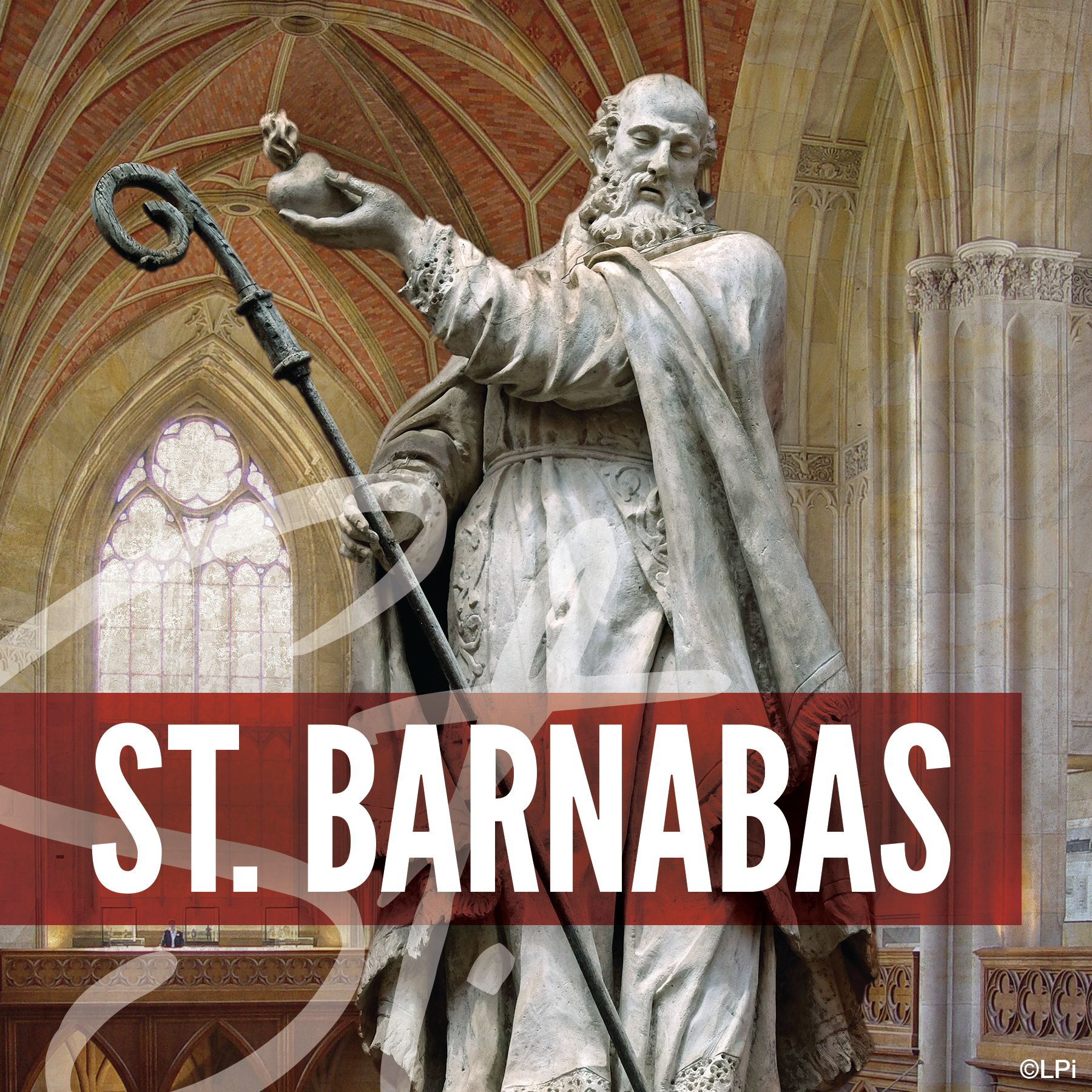
Catholics celebrate the memory of St. Barnabas on June 11. The apostle and missionary was among Christ's earliest followers and was responsible for welcoming St. Paul into the Church. Though not one of the 12 apostles chosen by the Lord, Jesus, he is traditionally regarded as one of the 72 disciples of Christ and most respected man in the first century Church after the Apostles themselves.
St. Barnabas was born to wealthy Jewish parents on the Greek-speaking island of Cyprus, probably around the time of Christ's own birth. Traditional accounts hold that his parents sent him to study in Jerusalem, where he studied at the school of Gamaliel (who also taught St. Paul). Later on, when Christ's public ministry began, Barnabas may have been among those who heard him preach in person. At some point, either during Christ's ministry or after his death and resurrection, Barnabas decided to commit himself in the most radical way to the teachings he had received. He sold the large estate he had inherited, contributed the proceeds entirely to the Church, and joined Christ's other apostles in holding all of their possessions in common. Saul of Tarsus, the future St. Paul, approached Barnabas after the miraculous events surrounding his conversion, and was first introduced to St. Peter through him. About five years later, Barnabas and Paul spent a year in Antioch, building up the Church community whose members were the first to go by the name of “Christians.” Both Paul and Barnabas received a calling from God to become the “Apostles of the Gentiles,” although the title is more often associated with St. Paul. The reference to the “laying-on of hands” in Acts, chapter 13, suggests that Paul and Barnabas may have been consecrated as bishops on this occasion.
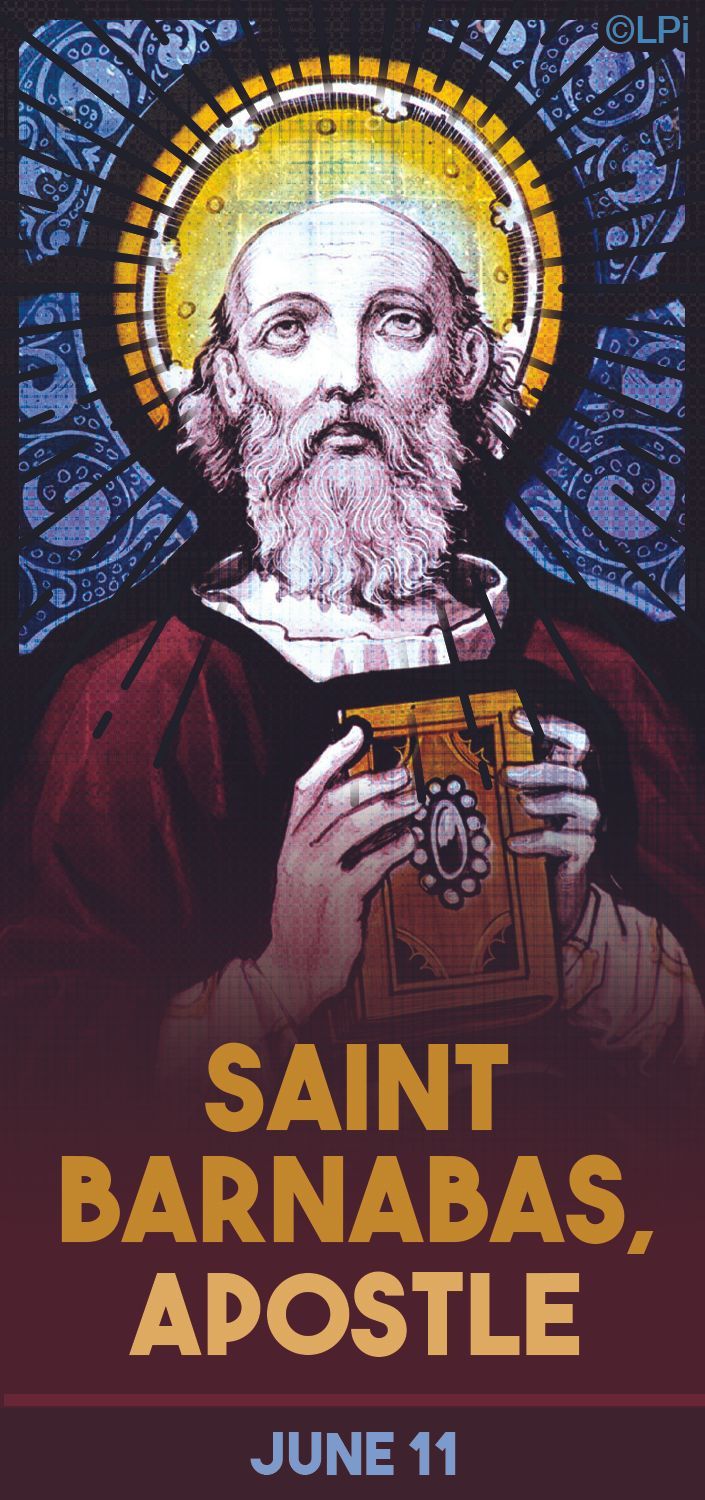
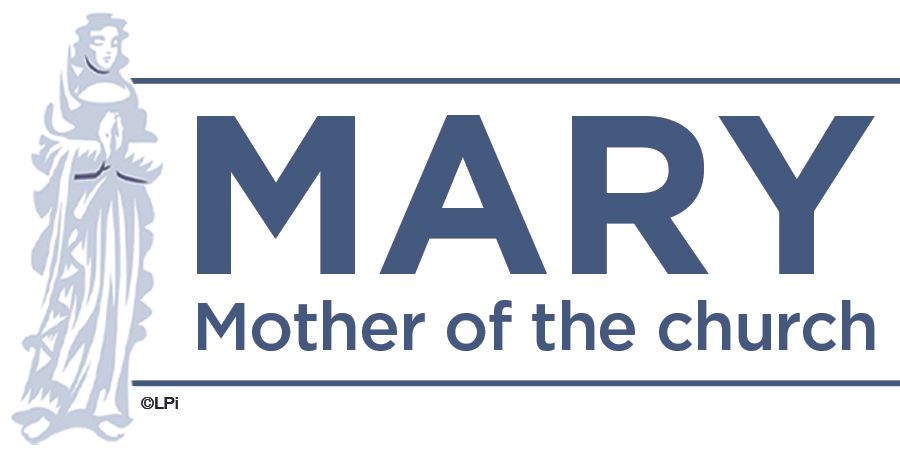
The theological roots of this title go back to the early Church. The Fathers of the Church, holy and studious bishops of the first centuries, often spoke of Mary as the New Eve. Just as the Woman Eve was “the mother of all the living” (Genesis 3:20), the Woman Mary was the mother of all those living in Christ. In Revelation 12:17, St. John says that this Woman’s offspring are “those who keep the commandments of God and bear testimony to Jesus.”
In 2025, the memorial of Mary, Mother of the Church is celebrated on June 9.
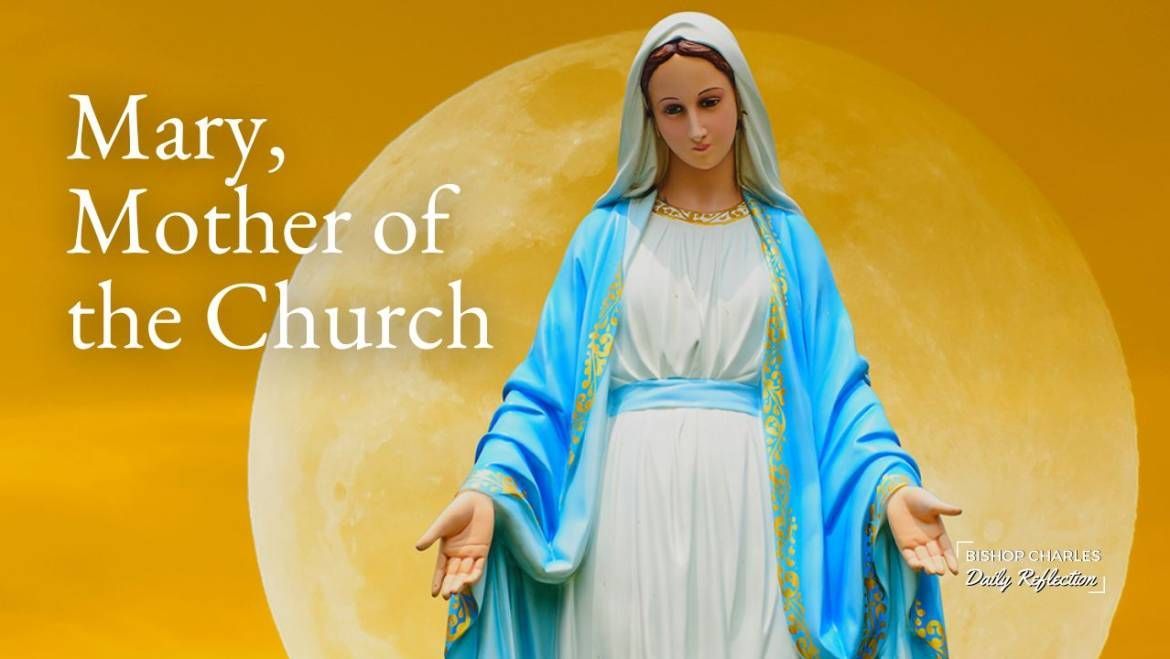
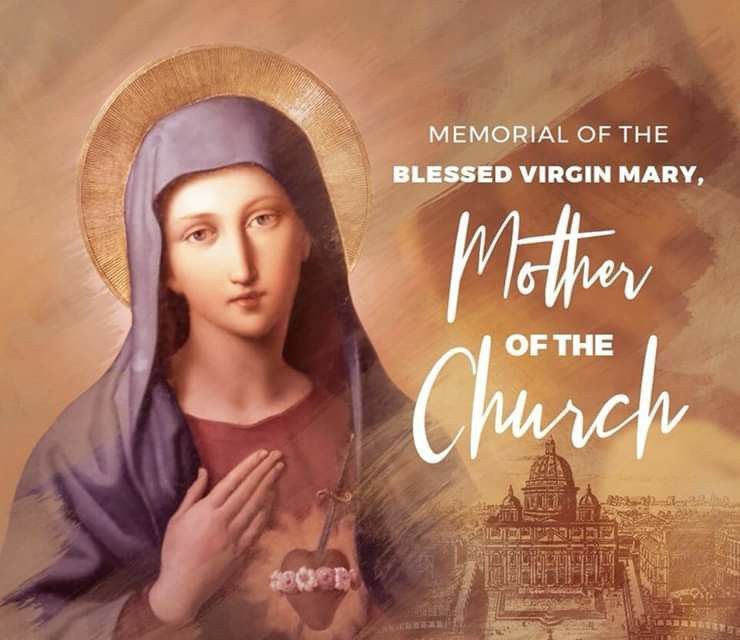
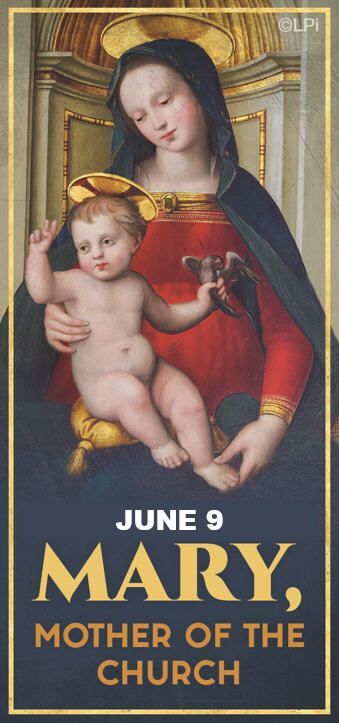
Saint Norbert | June 6
Short Bio
St. Norbert of Xanten (c. 1075-1134) after a violent conversion experience, was ordained and became an itinerant preacher who founded the Norbertine order. He preached against heresies denying the Blessed Sacrament, which earned him the title “Apostle of the Blessed Sacrament.”
Biography
Born to nobility, St. Norbert of Xanten (c. 1075-1134), was ordained as a subdeacon and served in the court of Henry V, Emperor of Germany, however, at court it was easy to be distracted by wealth, power, and luxury and he lived a worldly and corrupt life there. By the grace of God while traveling in a storm he was nearly struck by lightning and almost killed. This experience changed St. Norbert and he became penitent, left his court post, and after a period of discernment in a monastery, felt called to be a priest.
Norbert became an itinerant preacher, preaching against worldly attitudes but at the Pope’s request finally settled in northern France and founded the Norbertine order established according to the rule of St. Augustine. The order grew rapidly and soon founded a women’s branch. Norbert traveled and preached across Germany where he also founded a lay branch of the Norbertines. In Belgium he preached against heresies which denied the Blessed Sacrament, this earned him the title “Apostle of the Blessed Sacrament”. He and those of his orders had a great love of and devotion to the Blessed Sacrament, with a devout faith in the Holy Sacrifice of the Mass.
Eventually he was made Archbishop of Magdeburg, Germany, and later he traveled to Rome in support of Pope Innocent II, against the antipope. Afterward he returned to Germany to court of Emperor Lothar as advisor, at end of life, in failing health, St. Norbert was carried back to Magdeburg where he died. St. Norbert of Xanten, pray for us!
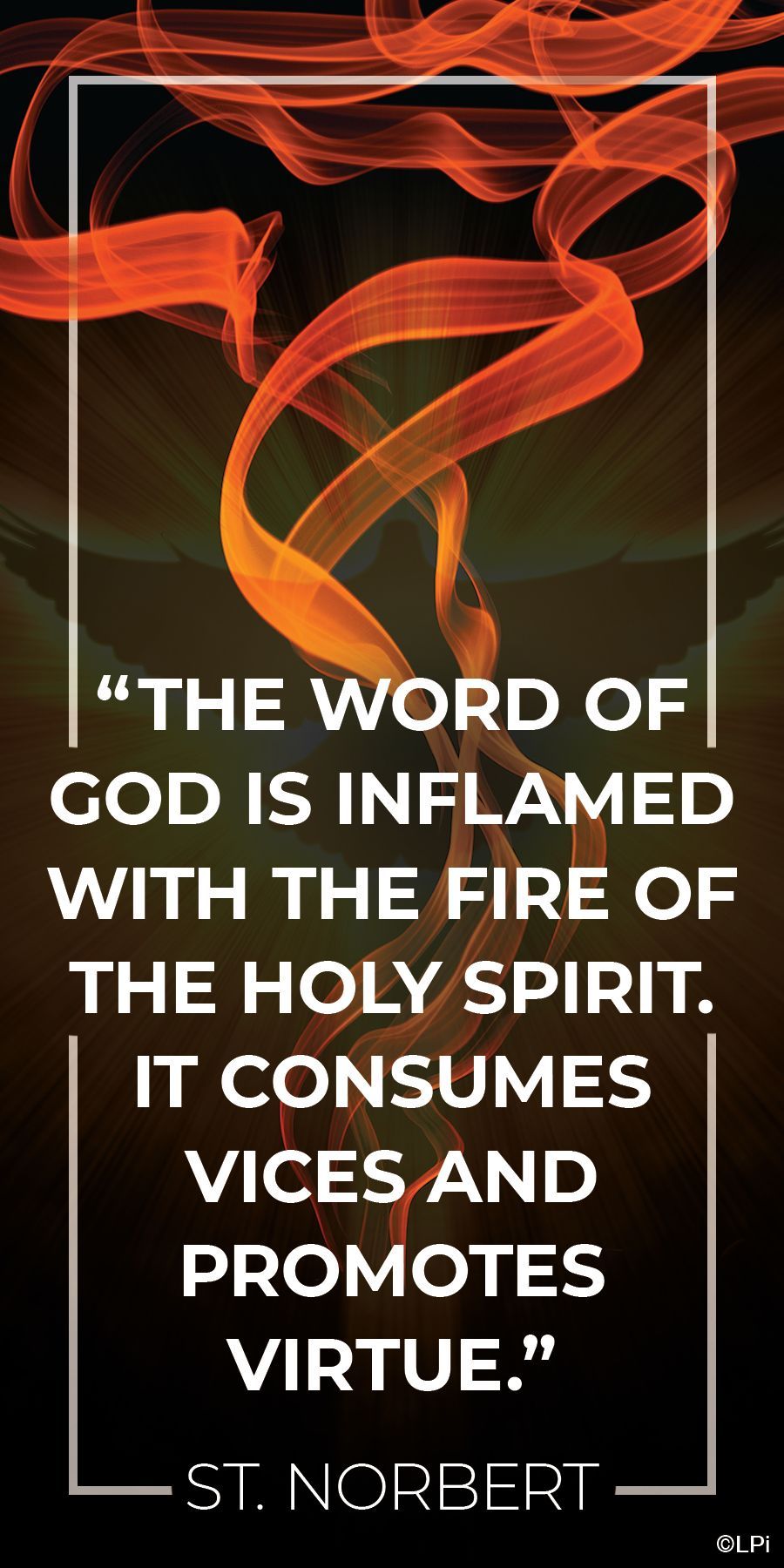
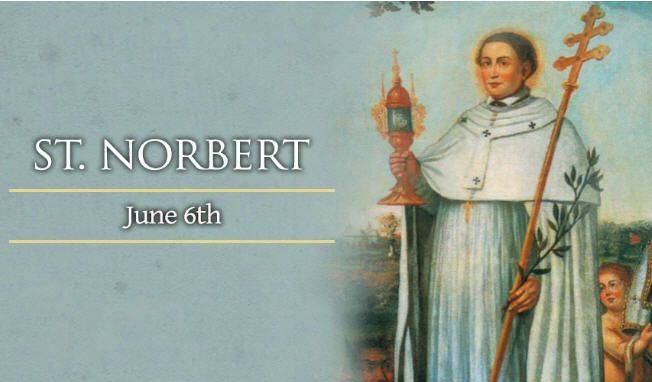
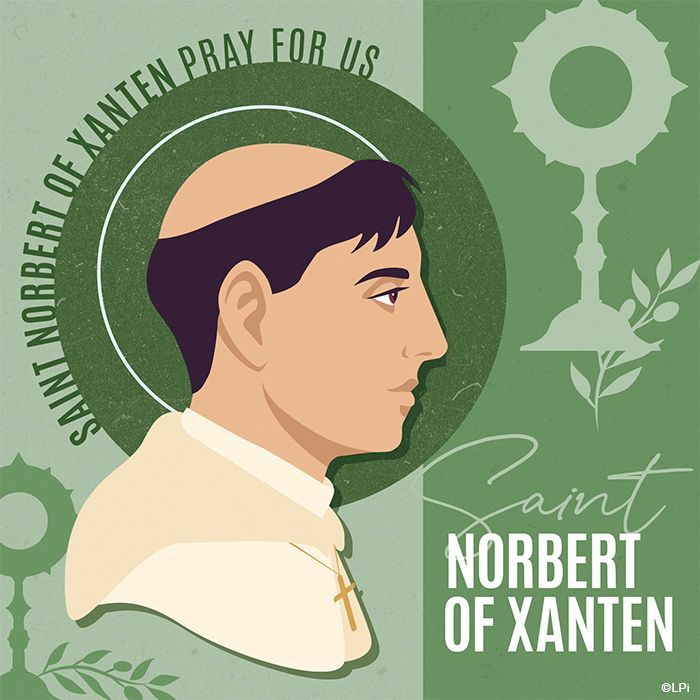
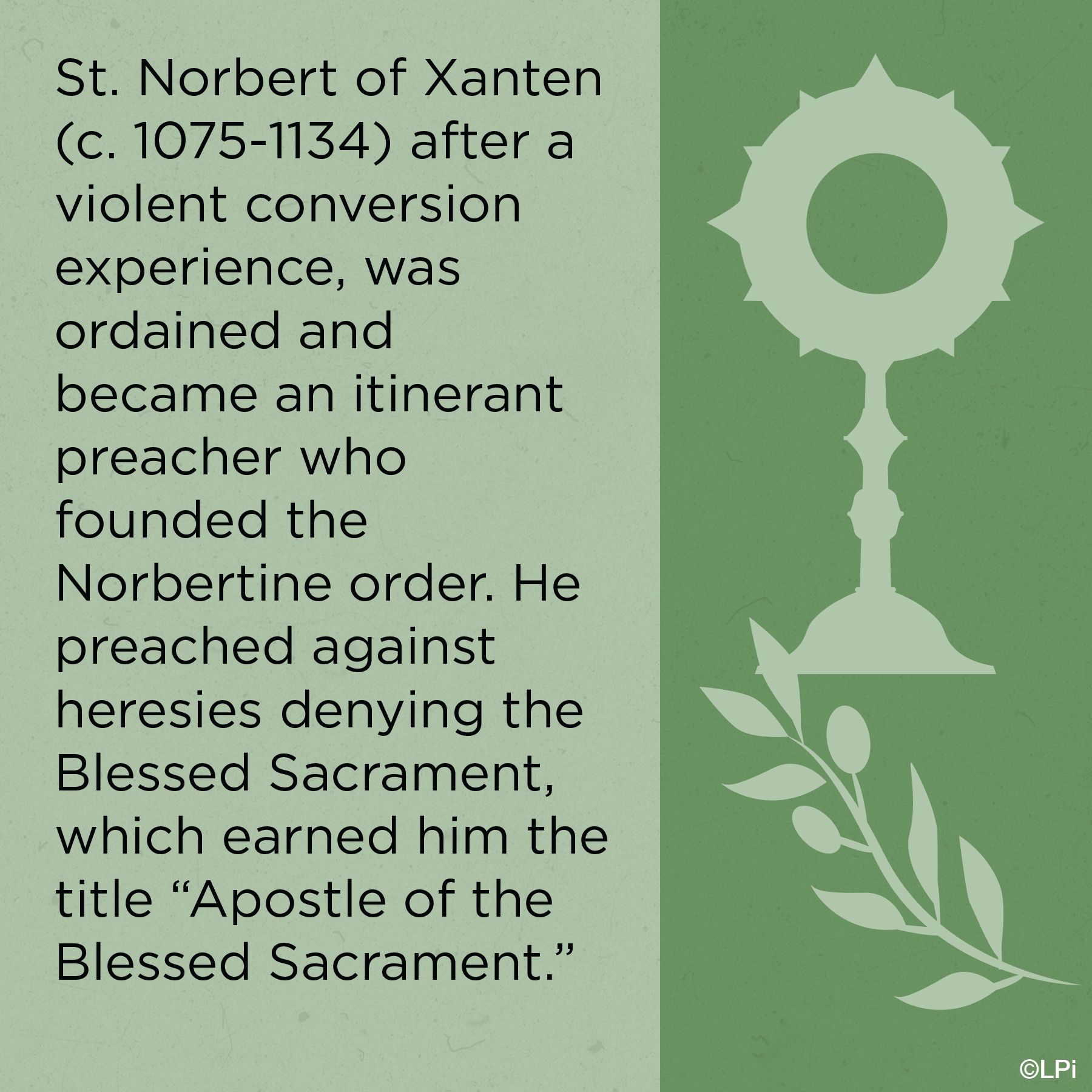
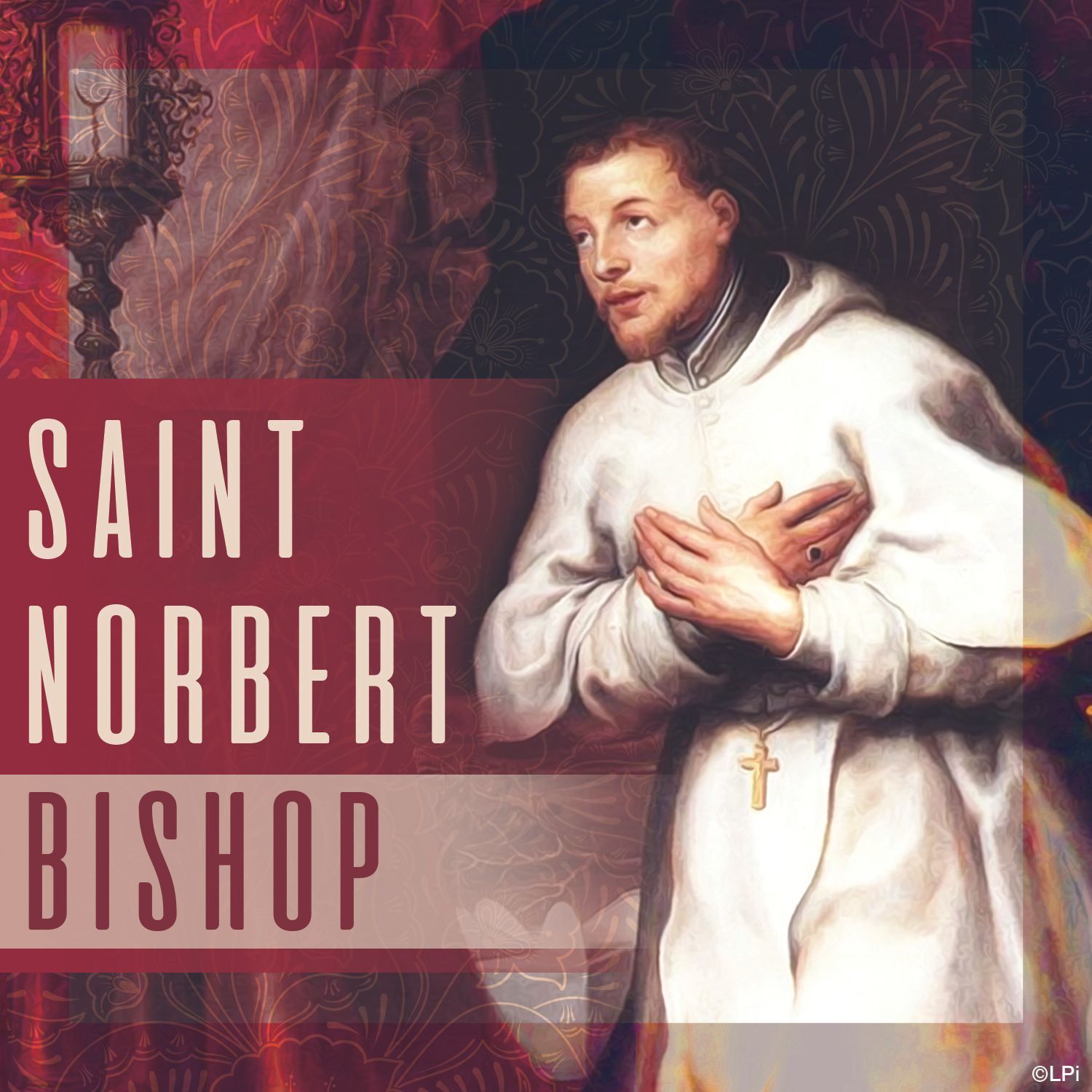
Saint Boniface | Bishop and Martyr | June 5th
St. Boniface was very bold in his faith and was well known for being very good at using the local customs and culture of the day to bring people to Christ. He was born in Devonshire, England, in the seventh century. He was educated at a Benedictine monastery and became a monk, and was sent as a missionary to Germany in 719 instead of becoming abbot for his monastery.
There, he destroyed idols and pagan temples, and built churches on the sites. He was eventually made archbishop of Mainz, where he reformed churches and built religious houses on those sites.
He was martyred on June 5, 754 while on mission in Holland, where a troop of pagans attacked and killed him and his 52 companions.
One story about St. Boniface tells about when he met a tribe in Saxony that was worshipping a Norse deity in the form of a huge oak tree. Boniface walked up to the tree, removed his shirt, took an ax, and without a word, chopped it down. Then he stood on the trunk, and asked:
"How stands your mighty god?
My God is stronger than he.”
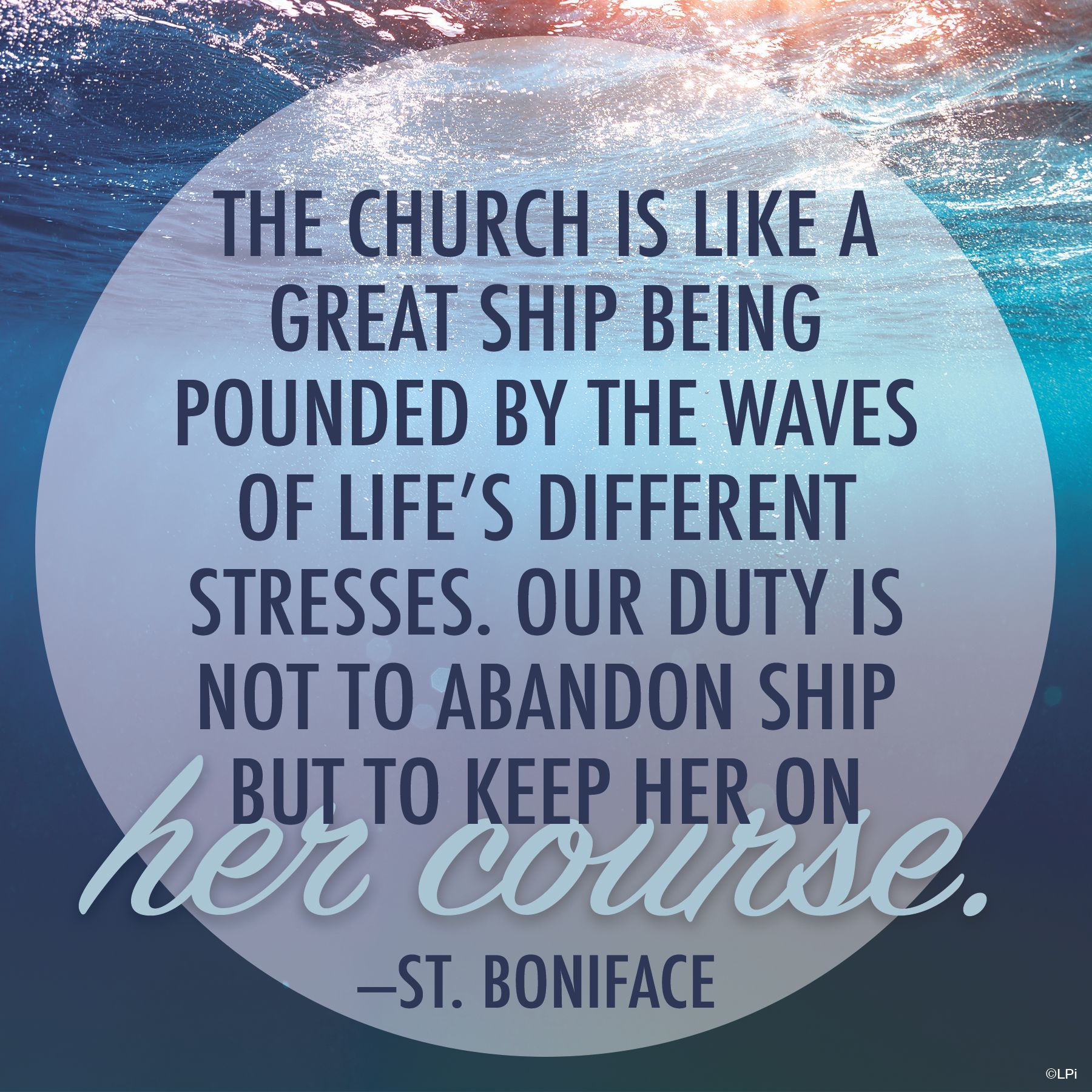
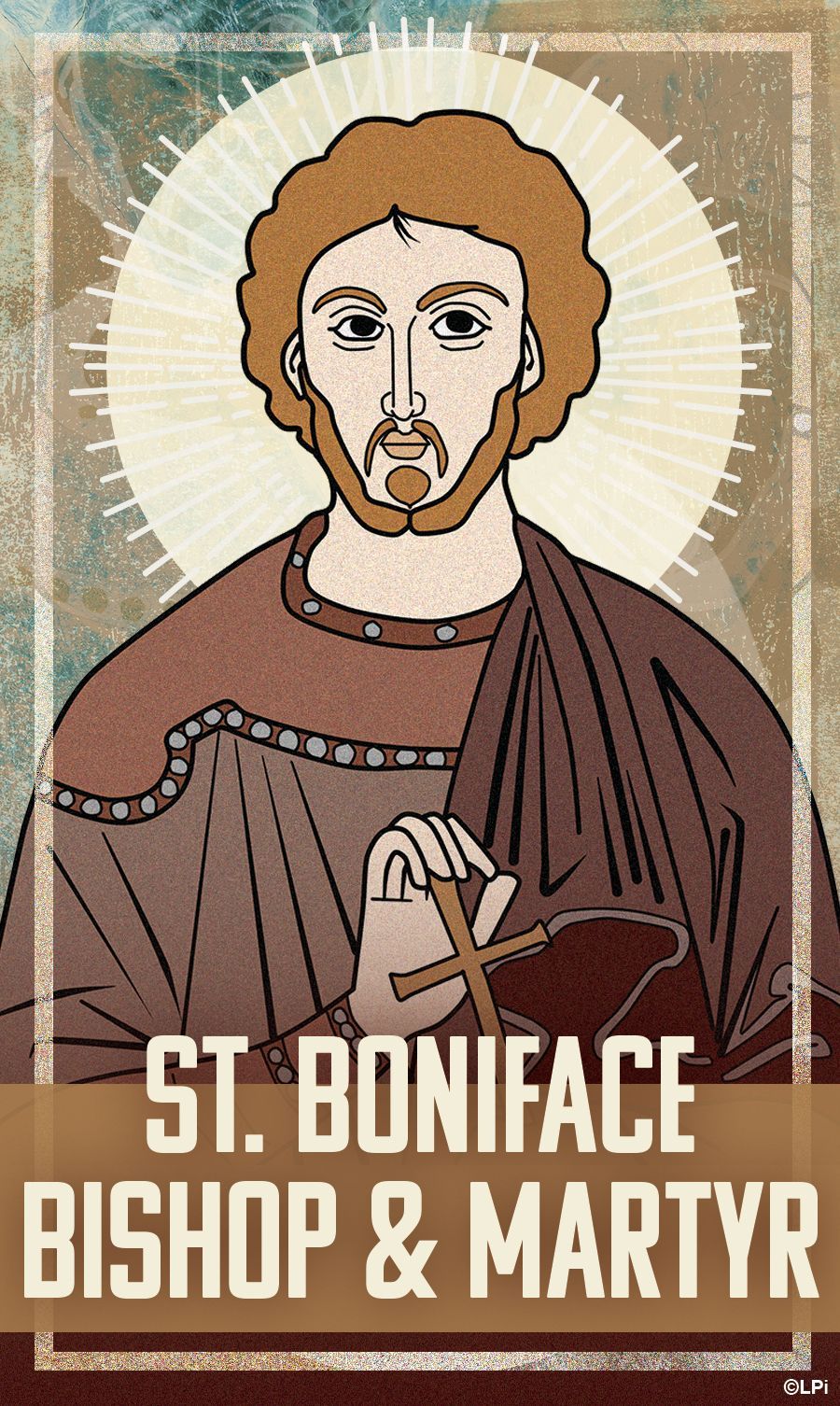
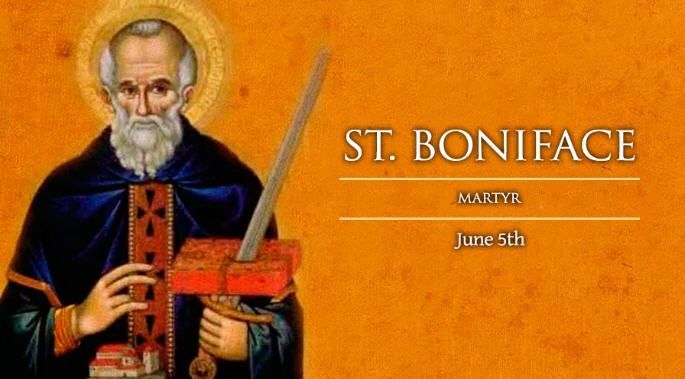
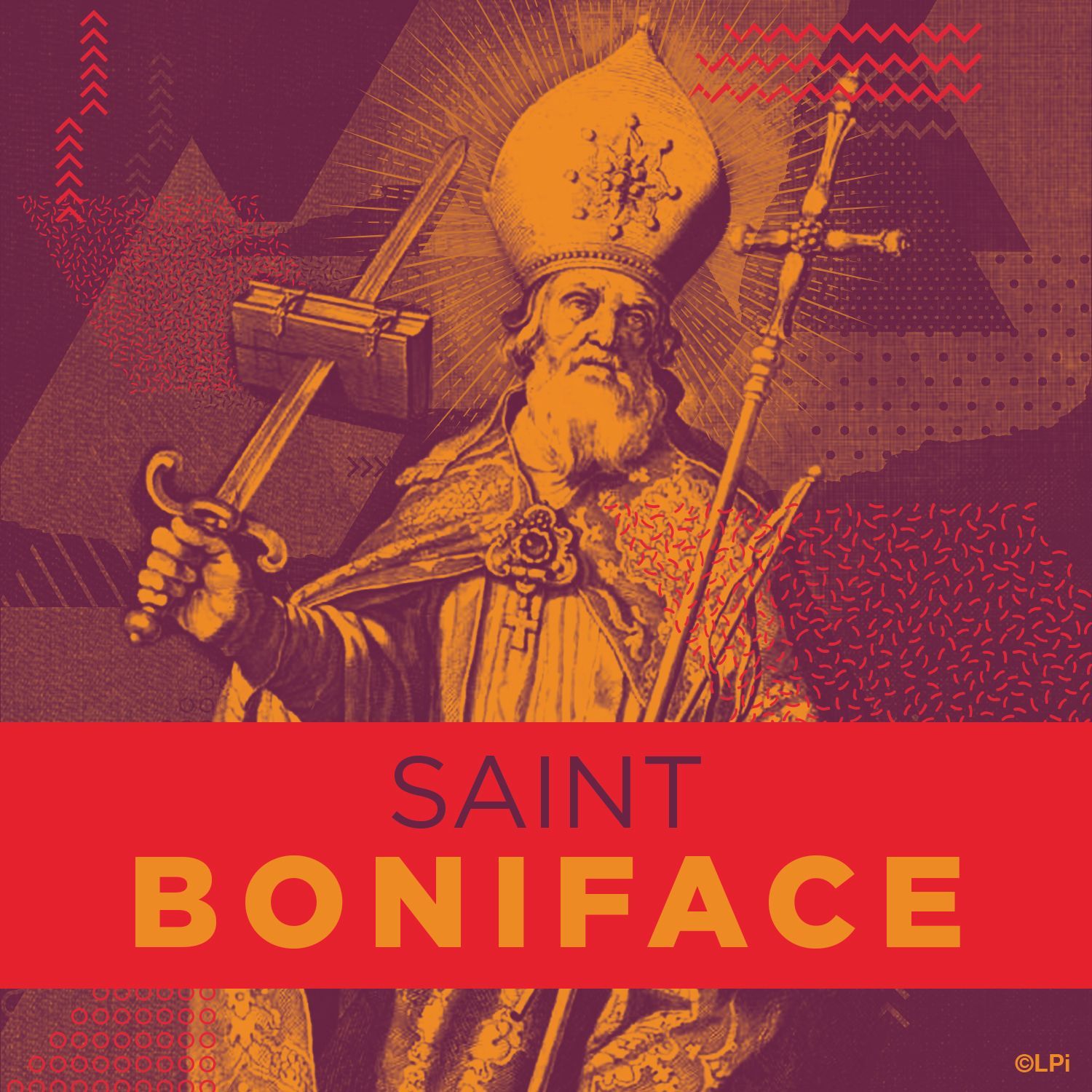
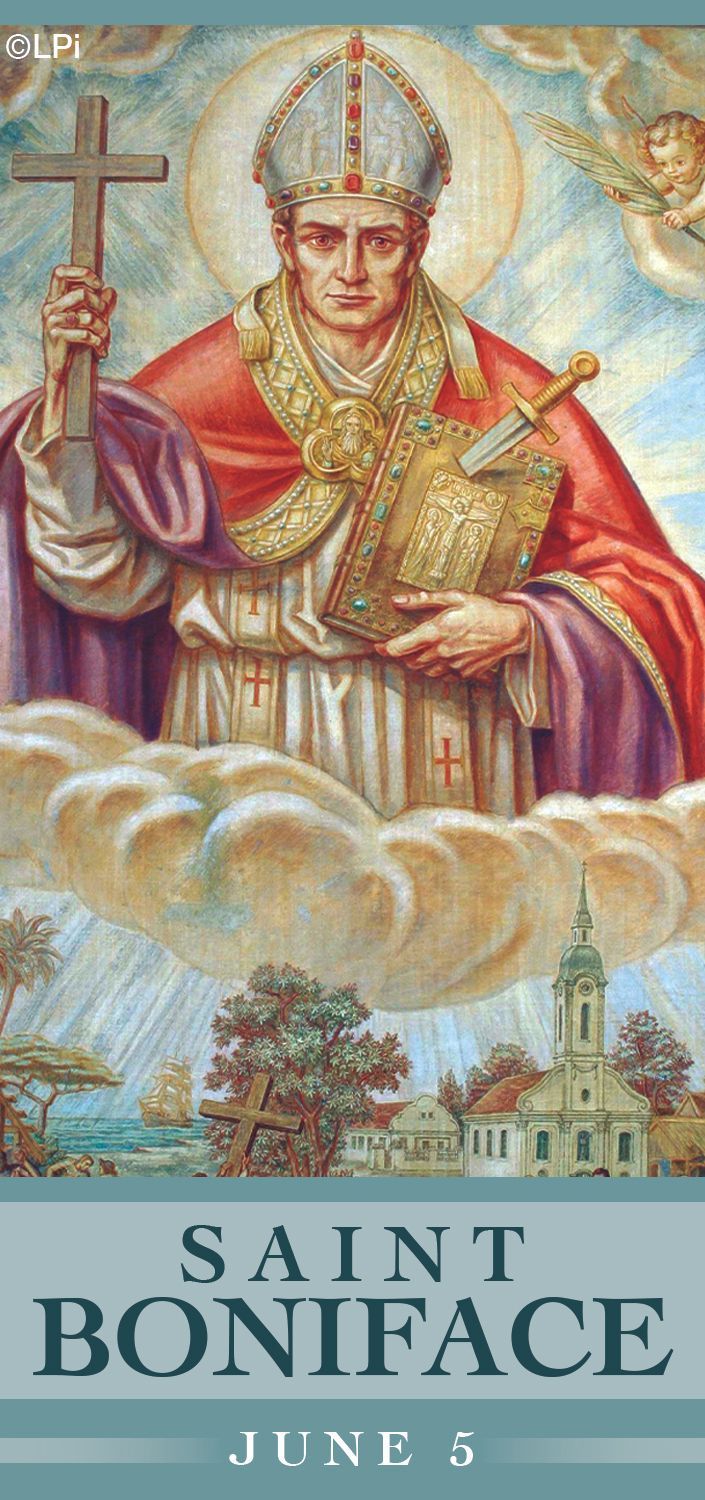
Saint Charles Lwanga And Companions | Martyrs | June 3rd
St. Charles and many other martyrs for the faith died between November 15, 1885 – January 27, 1887 in Namugongo, Uganda. St. Charles and his companions were beatified in 1920 and canonized by Pope Paul VI in 1964.
In 1879 Catholicism began spreading in Uganda when the White Fathers, a congregation of priests founded by Cardinal Lavigerie were peacefully received by King Mutesa of Uganda. The priests soon began preparing catechumens for baptism and before long a number of the young pages in the king’s court had become Catholics. However, on the death of Mutesa, his son Mwanga, a corrupt man who ritually engaged in pedophilic practices with the younger pages, took the throne.
When King Mwanga had a visiting Anglican Bishop murdered, his chief page, Joseph Mukasa, a Catholic who went to great length to protect the younger boys from the king’s lust, denounced the king’s actions and was beheaded on November 15, 1885.
The 25 year old Charles Lwanga, a man wholly dedicated to the Christian instruction of the younger boys, became the chief page, and just as forcibly protected them from the kings advances.
On the night of the martyrdom of Joseph Mukasa, realizing that their own lives were in danger, Lwanga and some of the other pages went to the White Fathers to receive baptism. Another 100 catechumens were baptized in the week following Joseph Mukasa’s death.
The following May, King Mwanga learned that one of the boys was learning catechism. He was furious and ordered all the pages to be questioned to separate the Christians from the others. The Christians, 15 in all, between the ages of 13 and 25, stepped forward. The King asked them if they were willing to keep their faith. They answered in unison, “Until death!” They were bound together and taken on a two day walk to Namugongo where they were to be burned at the stake. On the way, Matthias Kalemba, one of the eldest boys, exclaimed, “God will rescue me. But you will not see how he does it, because he will take my soul and leave you only my body.” They executioners cut him to pieces and left him to die alone on the road, which took at least three days.
When they reached the site where they were to be burned, they were kept tied together for seven days while the executioners prepared the wood for the fire.
On June 3, 1886, the Feast of the Ascension, Charles Lwanga was separated from the others and burned at the stake. The executioners slowly burnt his feet until only the charred remained. Still alive, they promised him that they would let him go if he renounced his faith. He refused saying, “You are burning me, but it is as if you are pouring water over my body.” He then continued to pray silently as they set him on fire. Just before the flames reached his heart, he looked up and said in a loud voice, “Katonda! – My God!,” and died.
His companions were all burned together the same day all the while praying and singing hymns until they died.
There were 24 protomartyrs in all. The last of the protomartyrs, a young man named John Mary, was beheaded by King Mwanga on January 27, 1887.
The persecutions spread during the reign of Mwanga, with 100 Christians, both Catholics and Protestants, being tortured and killed.
St. Charles Lwanga is the patron saint of African Catholic Youth Action.
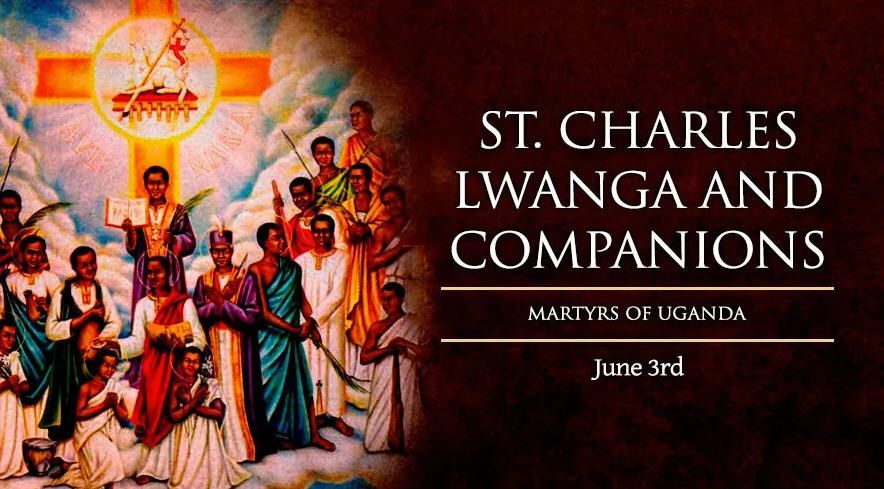
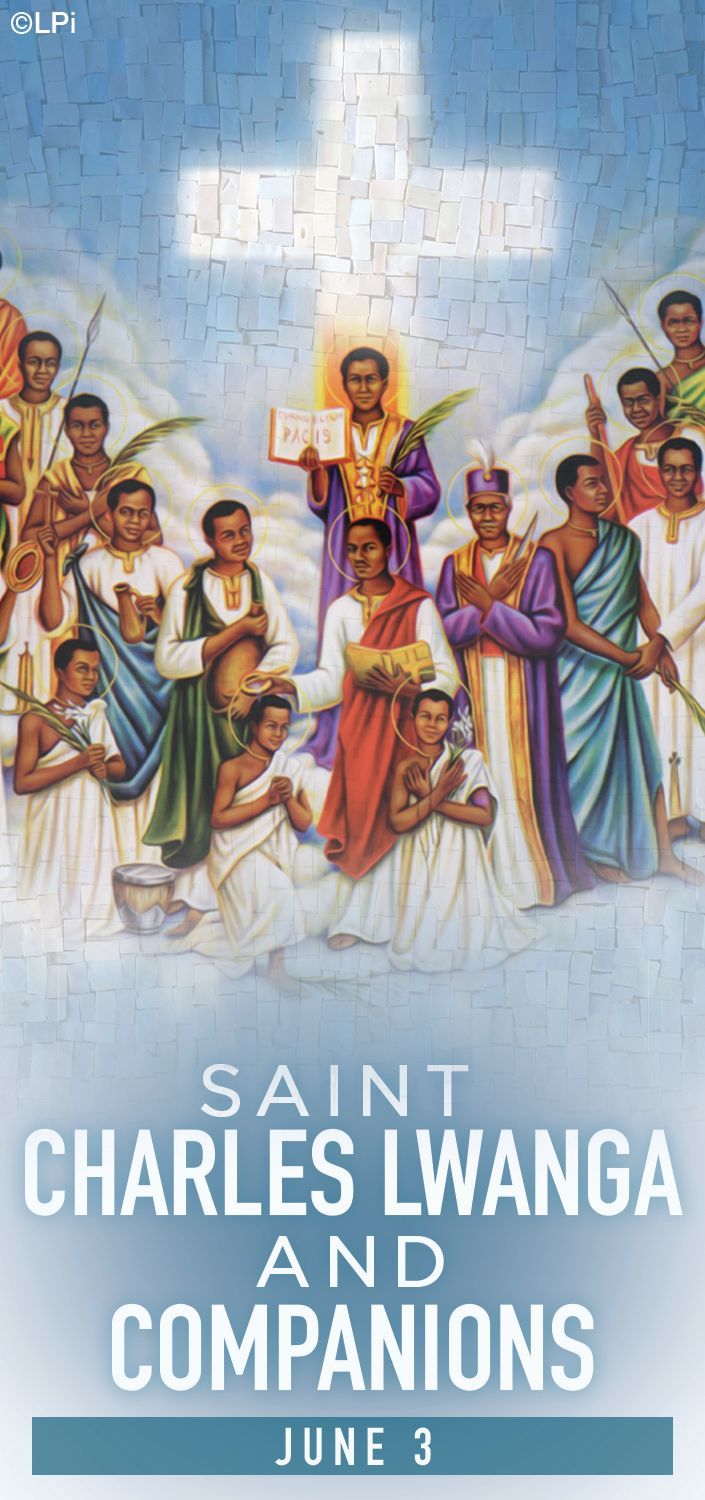
Saints Marcellinus and Peter | Martyrs | June 2nd

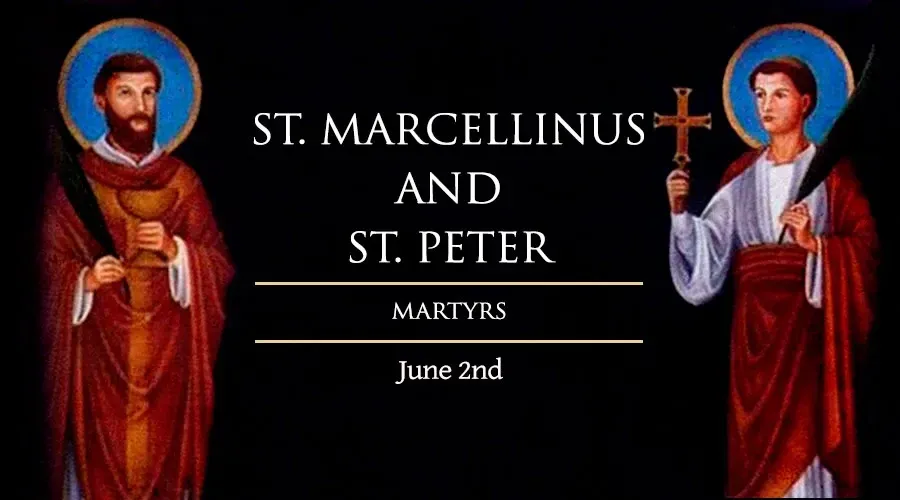
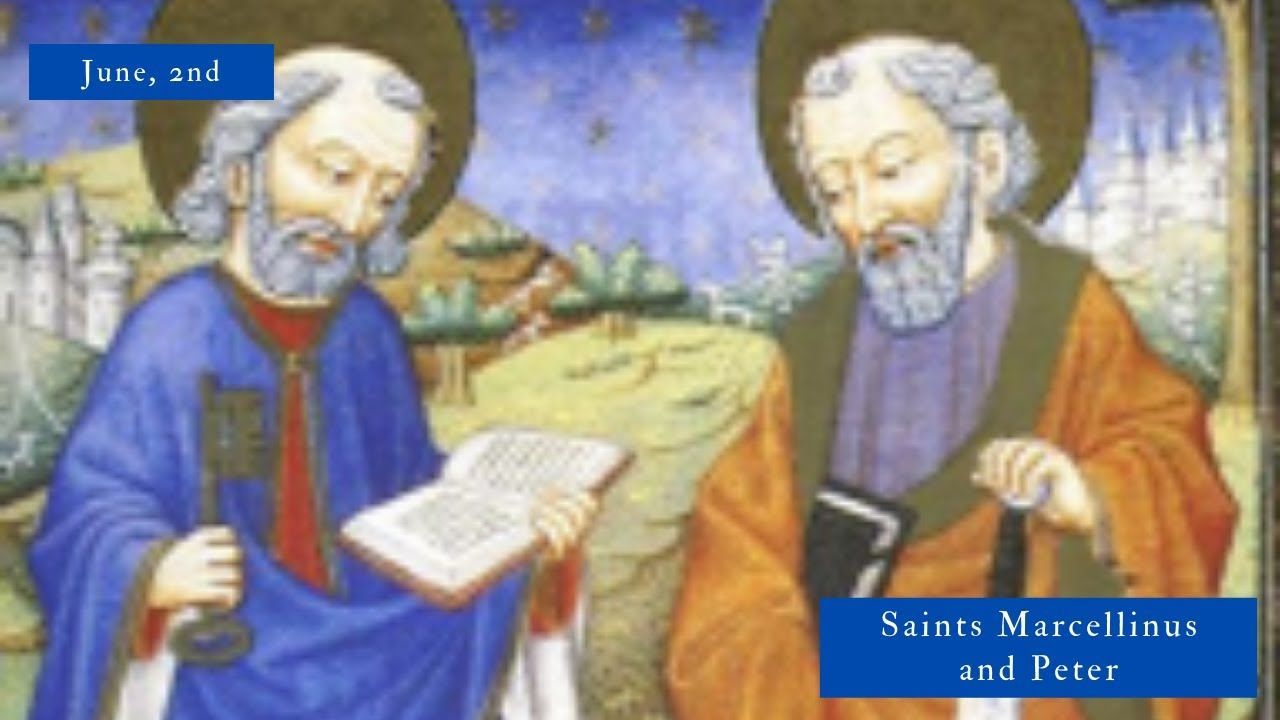
On June 2, the Catholic Church remembers two fourth-century martyrs, Saints Marcellinus and Peter, who were highly venerated after the discovery of their tomb and the conversion of their executioner.
Although the biographical details of the two martyrs are largely unknown, it is known that they lived and died during the reign of the Roman Emperor Diocletian. In 302, the ruler changed his tolerant stance and pursued a policy intended to eliminate the Church from the empire.
Diocletian and his subordinate ordered the burning of Catholic churches and their sacred texts, as well as the imprisonment and torture of clergy and laypersons. The goal was to force Christians to submit to the Roman pagan religion, including the worship of the emperor himself as divine. It was at the mid-point of this persecution, around 303, that a Roman exorcist by the name of Peter was imprisoned for his faith. While in prison, tradition holds that Peter freed Paulina, the daughter of the prison-keeper Artemius, from demonic influence by his prayers.
This demonstration of Christ's power over demons is said to have brought about the conversion of Paulina, Artemius, his wife, and the entire household, all of whom were baptized by the Roman priest Marcellinus. After this, both Marcellinus and Peter were called before a judge who was determined to enforce the emperor's decree against the Church. When Marcellinus testified courageously to his faith in Christ, he was beaten, stripped of his clothes, and deprived of food in a dark cell filled with broken glass shards.
Peter, too, was returned to his confinement. But neither man would deny Christ, and both preferred death over submission to the cult of pagan worship.
It was arranged for the two men to be executed secretly, in order to prevent the faithful from gathering in prayer and veneration at the place of their burial. Their executioner forced them to clear away a tangle of thorns and briars, which the two men did cheerfully, accepting their death with joy.
Both men were beheaded in the forest and buried in the clearing they had made. The location of the saints' bodies remained unknown for some time, until a devout woman named Lucilla received a revelation informing her where the priest and exorcist lay.
With the assistance of another woman, Firmina, Lucilla recovered the two saints' bodies and had them re-interred in the Roman Catacombs. Sts. Marcellinus and Peter are among the saints named in the Western Church's most traditional Eucharistic prayer, the Roman Canon.
Pope St. Damasus I, who was himself a great devotee of the Church's saints during his life, composed an epitaph to mark the tombs of the two martyrs. The source of his knowledge, he said, was the executioner himself, who had subsequently repented and joined the Catholic Church.
FEAST OF THE VISITATION OF THE VIRGIN MARY | May 31
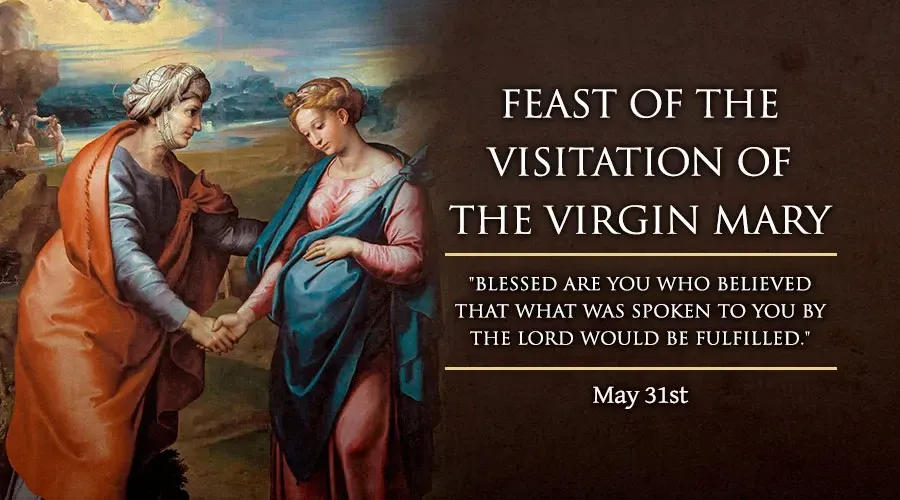
Assuming that the Annunciation and the Incarnation took place around the time of the vernal equinox, Mary left Nazareth at the end of March and went over the mountains to Hebron, south of Jerusalem, to wait upon her cousin Elizabeth. Because Mary's presence, and even more the presence of the Divine Child in her womb, according to the will of God, was to be the source of very great graces to the Blessed John, Christ's Forerunner. (Lk1:39-57).
Feeling the presence of his Divine Saviour, John, upon the arrival of Mary, leaped for joy in the womb of his mother; at that moment he was cleansed from original sin and filled with the grace of God. Our Lady now, for the first time, exercised the office which belonged to the Mother of God made man: that He might, by her mediation, sanctify and glorify us. St. Joseph probably accompanied Mary, returned to Nazareth, and when, after three months, he came again to Hebron to take his wife home, the apparition of the angel, mentioned in Mt 1:19-25, may have taken place to end the tormenting doubts of Joseph regarding Mary's maternity.
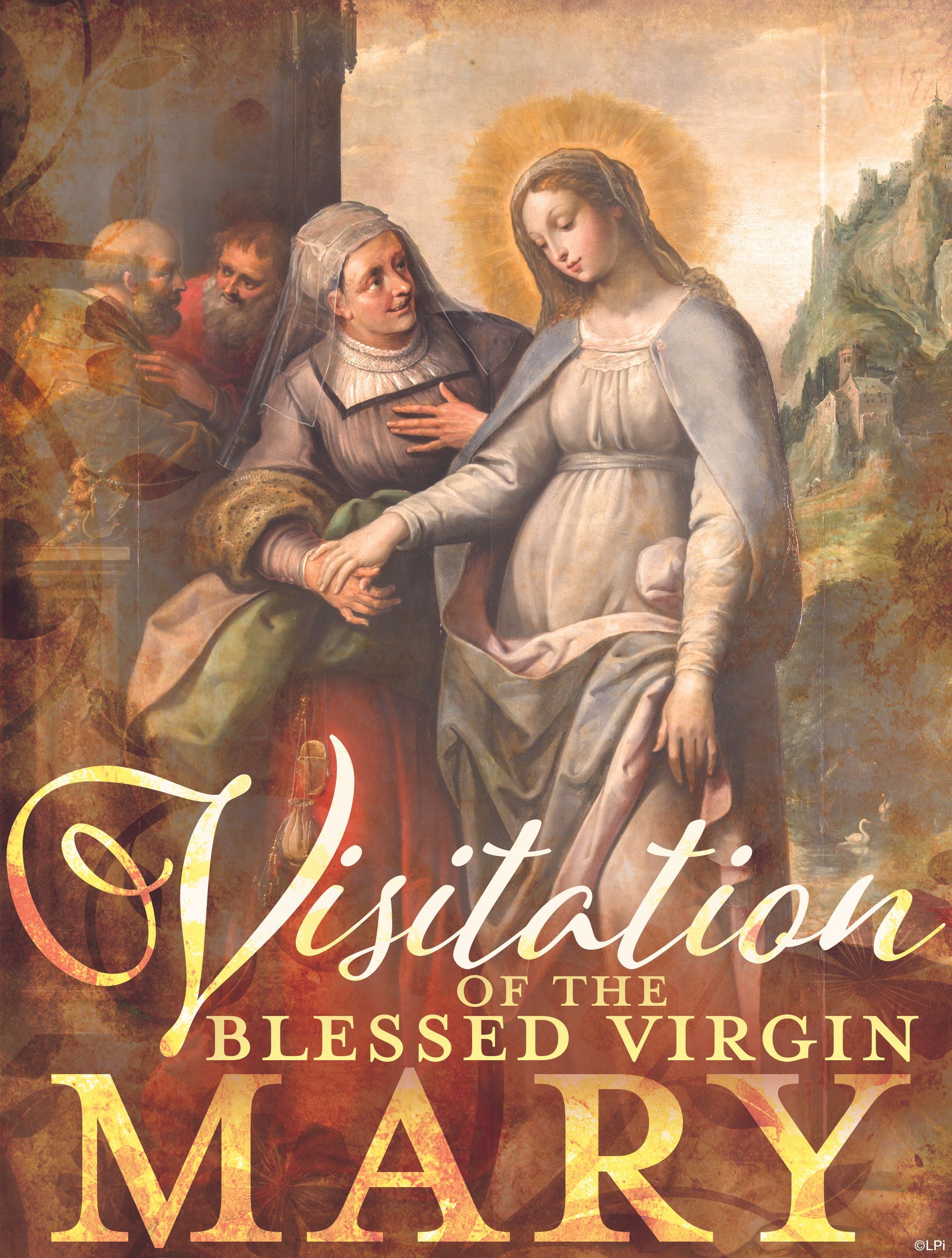
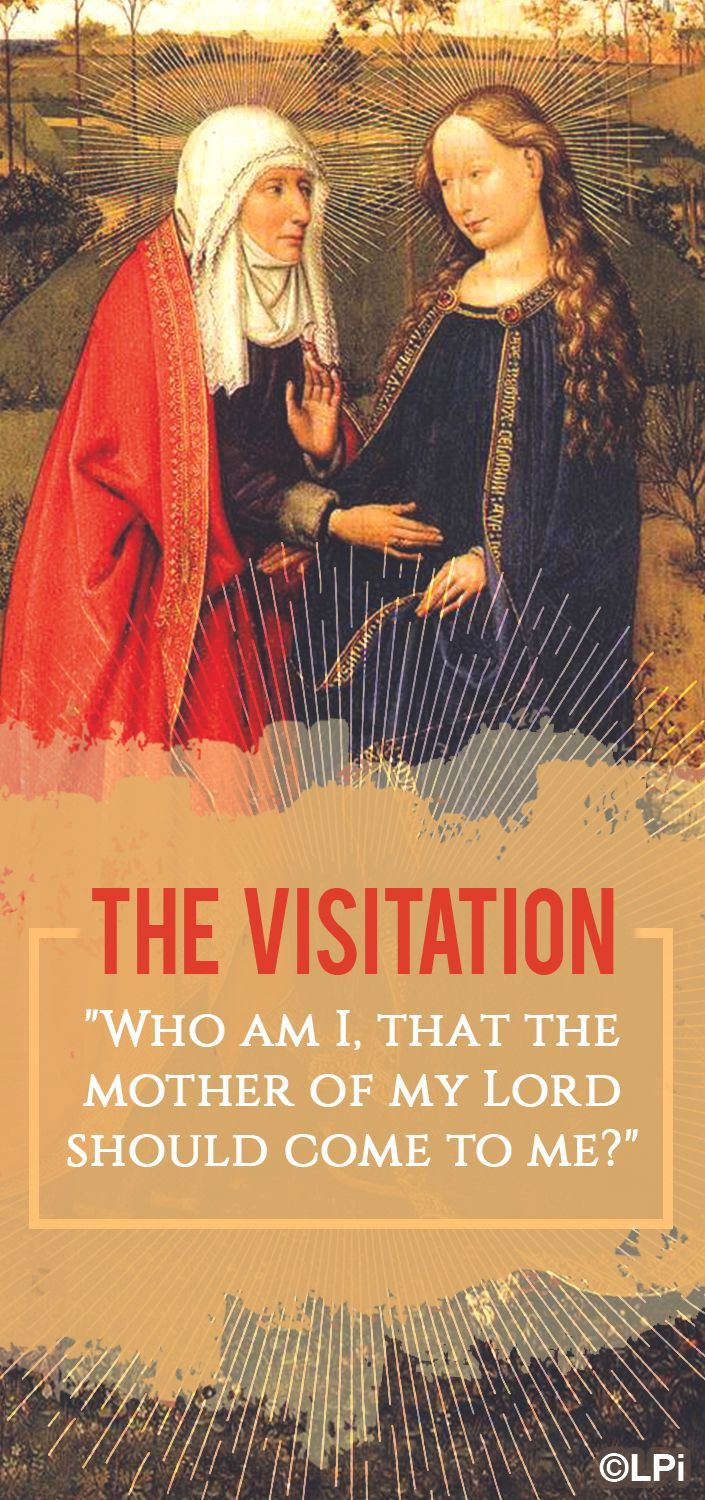
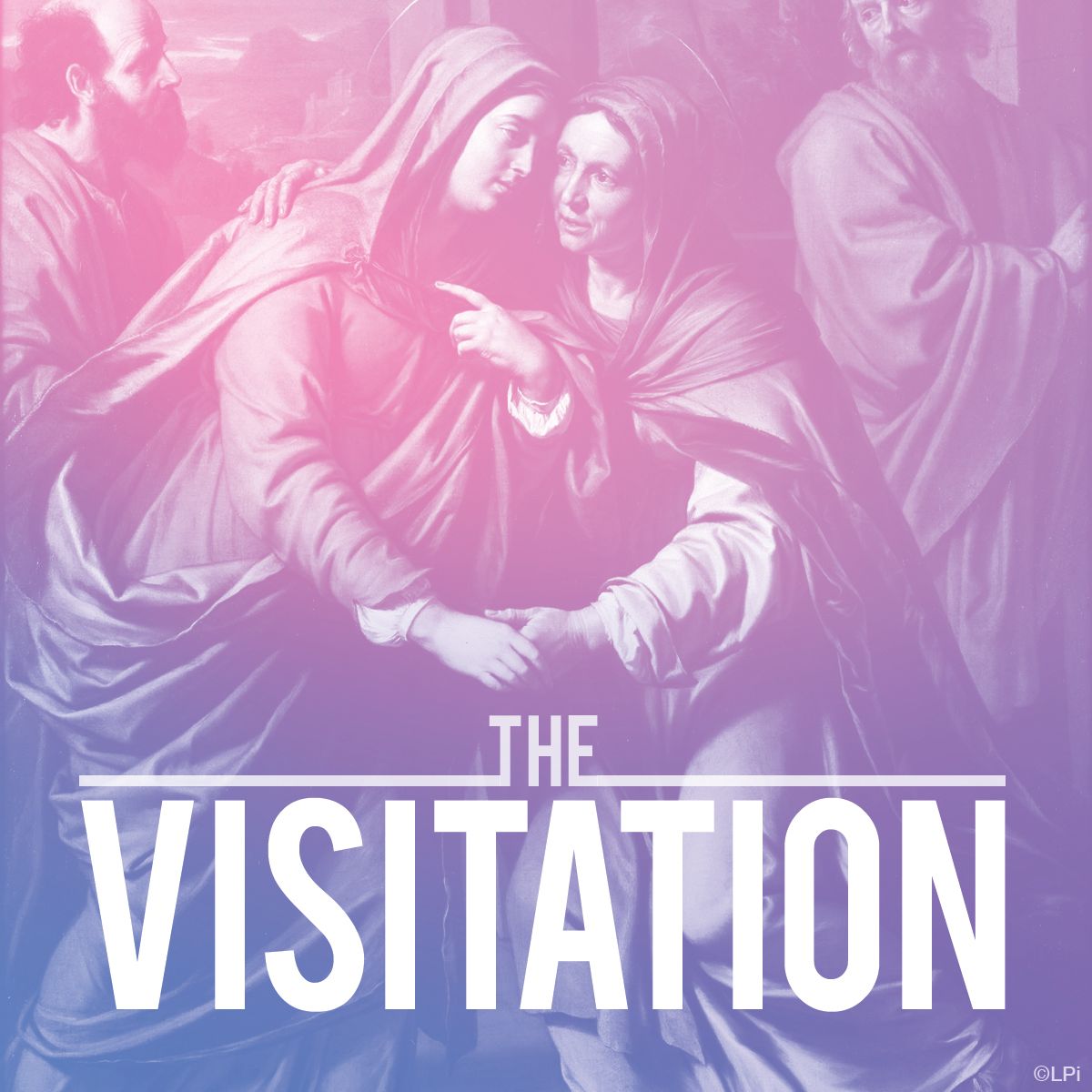
Pope Saint Paul VI | May 29

"Before and after becoming Pope, Saint Paul VI lived with his gaze constantly fixed on Christ whom he considered and proclaimed as a necessity for everyone," Cardinal Robert Sarah, prefect of the Congregation for Divine Worship, commented on the papal decree.
With this declaration, published Feb. 6, the pope who guided the Church through the Second Vatican Council will have his memorial inserted into the renewed General Roman Calendar and liturgical books that he promulgated in 1969.
The date of the memorial, May 29, is significant as the ordination anniversary of Paul VI -- then Giovanni Battista Montini -- to the priesthood in 1920. Just four years later, Montini began his service to the Holy See, serving both Pope Pius XI and Pius XII. He was made Archbishop of Milan and then a cardinal before being elected pope in 1963.
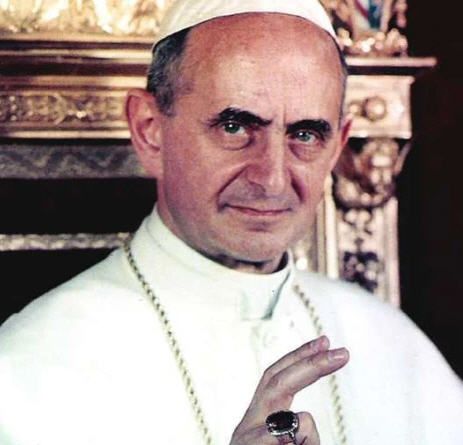
Saint Augustine of Canterbury | May 27
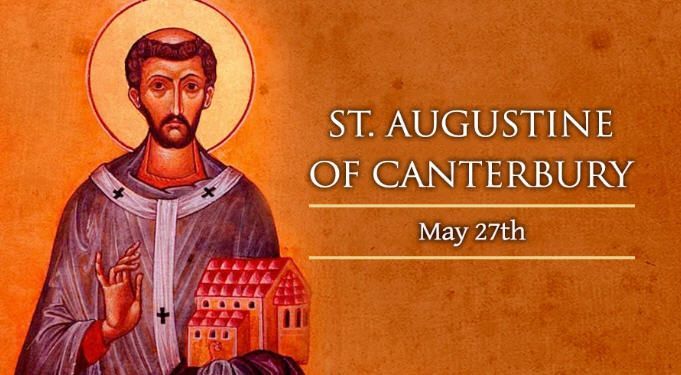
An Italian Benedictine monk who became the “Apostle of the English,” Saint Augustine of Canterbury is honored by the Catholic Church on May 27.
Under the direction of Pope Saint Gregory the Great, Augustine founded the famous See of Canterbury and preached the Catholic faith to the country's Anglo-Saxon pagans during the late sixth and early seventh centuries.
He is not be confused with the earlier St. Augustine of Hippo, the famous author of the “Confessions” and “City of God.”
Augustine's date of birth cannot be established, nor are any details of his early life known. Most likely born in Rome to a noble family, he entered monastic life as a young man. The community he joined had been recently founded by a Benedictine monk named Gregory, who would go on to become Pope and eventually be known as St. Gregory the Great. The friendship between Gregory and Augustine had great historical consequences, as it was the Pope who would eventually send his fellow monk to evangelize England.
Around 595, five years into his 14-year pontificate, Pope Gregory set to work on a plan for the conversion of the English people. The Catholic faith had already been preached and accepted among England's original Celtic inhabitants in earlier times, but from the mid-fifth century onward, the country was dominated by Anglo-Saxon invaders who did not accept Christianity, and were not converted by the small number of isolated Celtic Christian holdouts. Thus, England largely had to be evangelized anew.
For this task the Pope chose a group of around forty monks – including Augustine, who was to represent the delegation and communicate on its behalf. Though he was not explicitly chosen as its leader at that time, that was the role he ended up taking on with Gregory’s support. The group left for England in June 596, but some of the missionaries lost their nerve after hearing fearsome reports about the Anglo-Saxons. Augustine ended up returning to Rome, where he got further advice and support from the Pope.
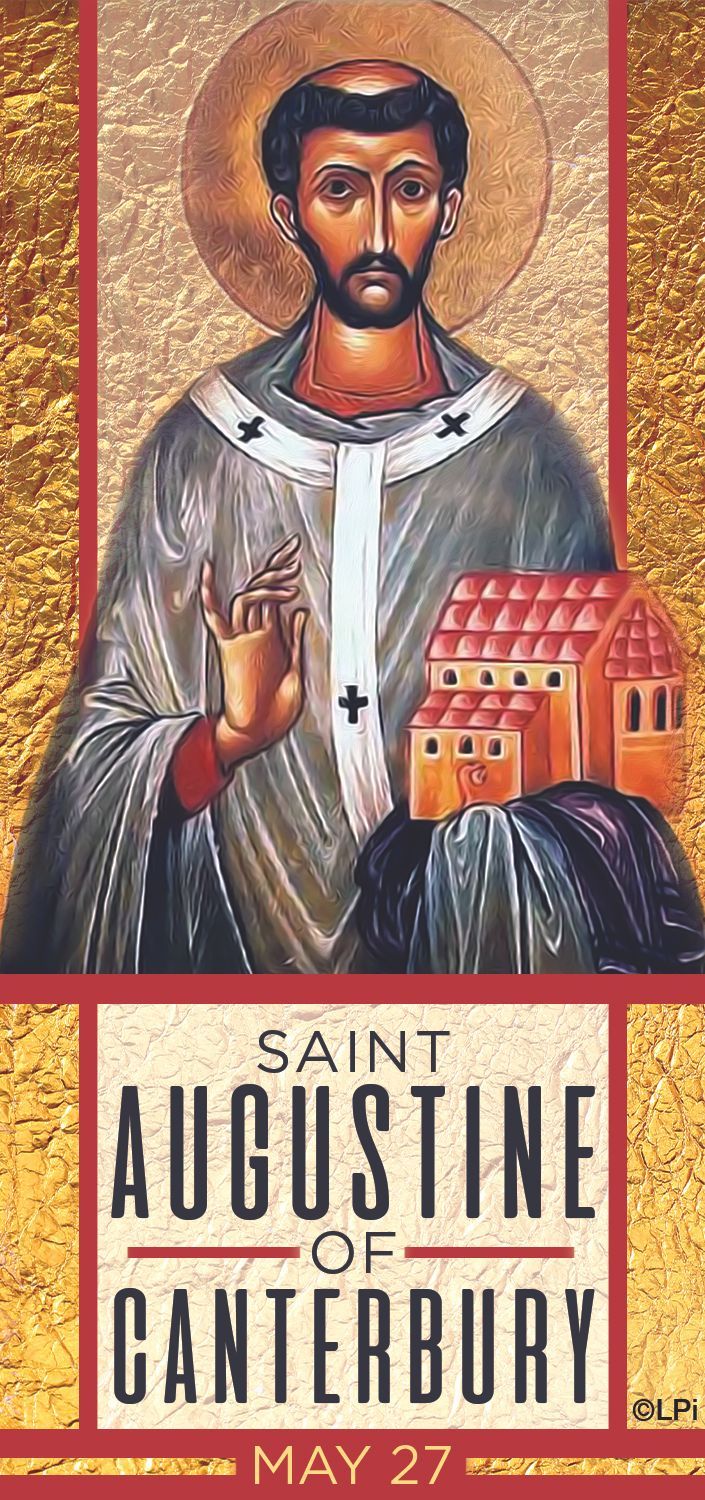
Saint Philip Neri | May 26
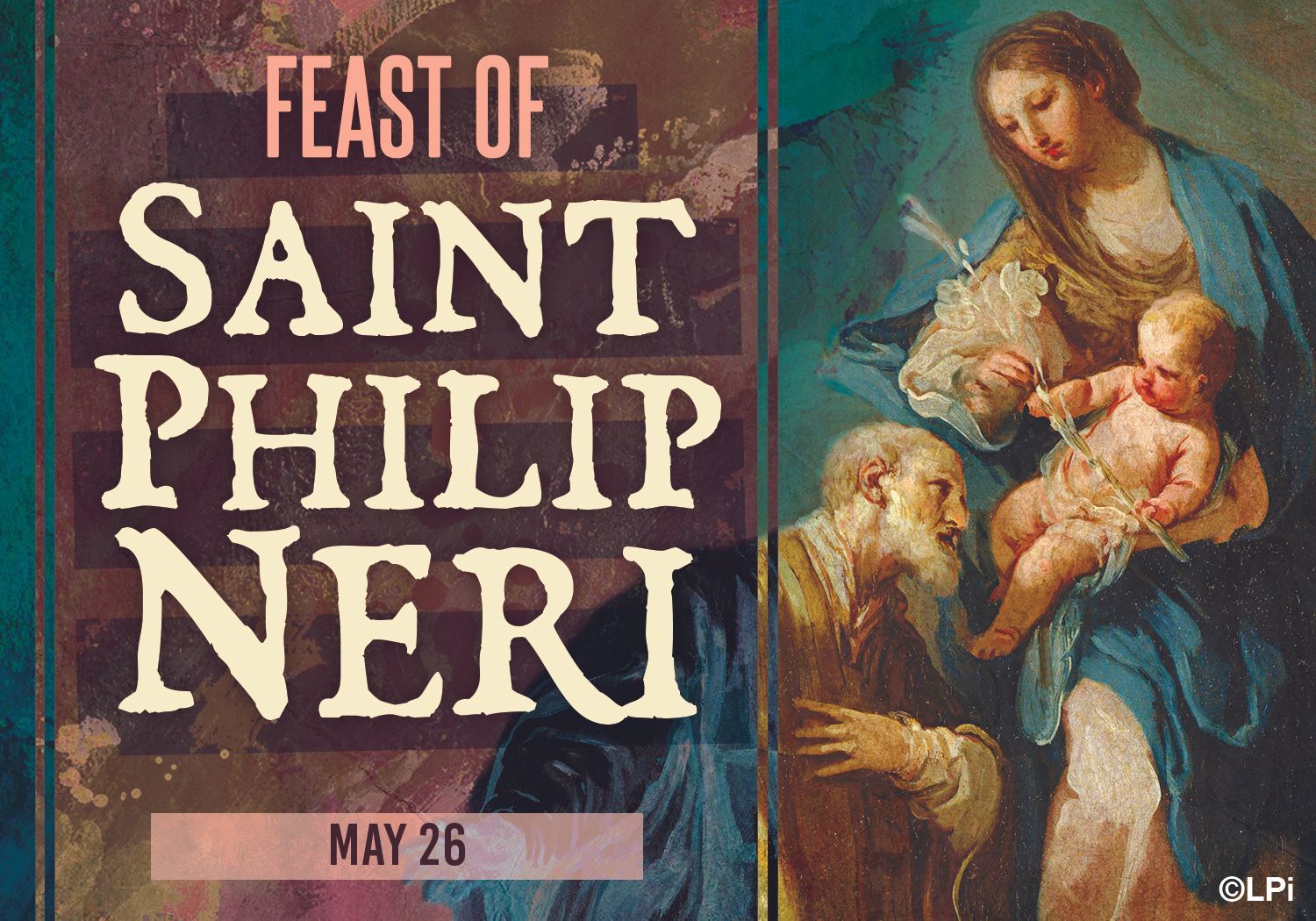
St. Philip Neri
Biography
St. Philip Neri (1515 – 1595) was born in Italy and went to school as a child at the Dominican monastery in Florence. His family had hopes that he would work with his uncle, a wealthy merchant, and ultimately inherit his business and fortune but, shortly after beginning his work with him, Neri had a personal conversion. He decided to move to Rome to live a life of service.
For 13 years in Rome, Neri lived as a layperson, daily engaged in prayer and the apostolate. Even as a layperson he brought the Gospel of Jesus to everyone he met. He was eventually ordained to the priesthood and became known as a compassionate confessor, quick to disarm those around him with a joke or a kind word.
He is remembered as extremely approachable and jovial. He was kind, entertaining, and spontaneous in his approach which inspired many. He led prayer groups and excursions to visit other churches which often included music and picnics, and his council was sought by rich and poor alike. He was a strict vegetarian and was known to relocate animals and birds found inside the church back into the wild.
St. Philip Neri founded The Congregation of the Oratory. This secular order included priests and brothers and did not bind them under religious vows, but instead by a bond of charity. These men lived together in community and served those in need with happy hearts.
St. Philip Neri’s ability to increase his fellow religious leader’s faith coupled with his closeness with the common people in Rome cemented his reputation as the Apostle of Rome, called by God to evangelize the Holy City. His Congregation of the Oratory is still active today accomplishing the same mission. St. Philip Neri, pray for us!
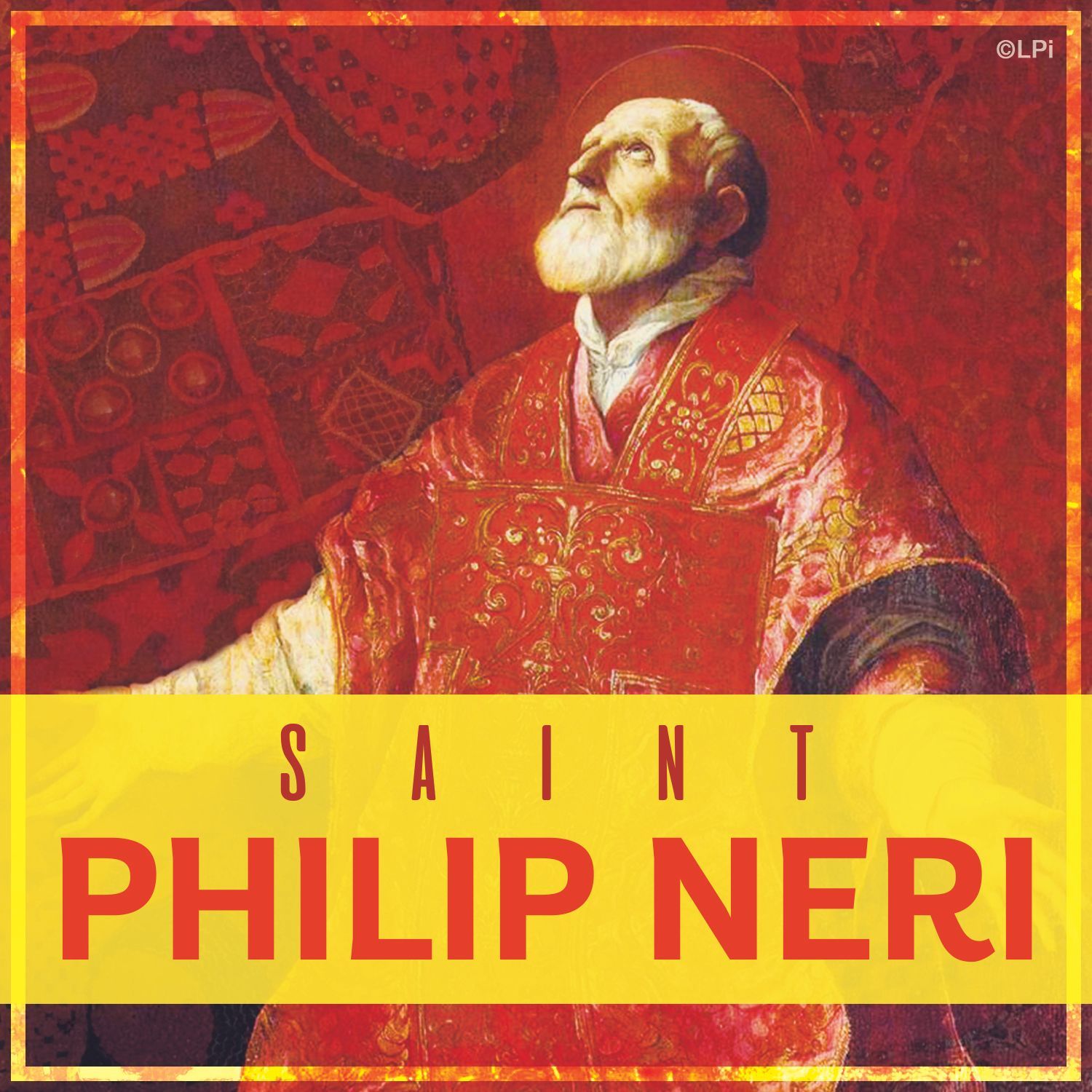
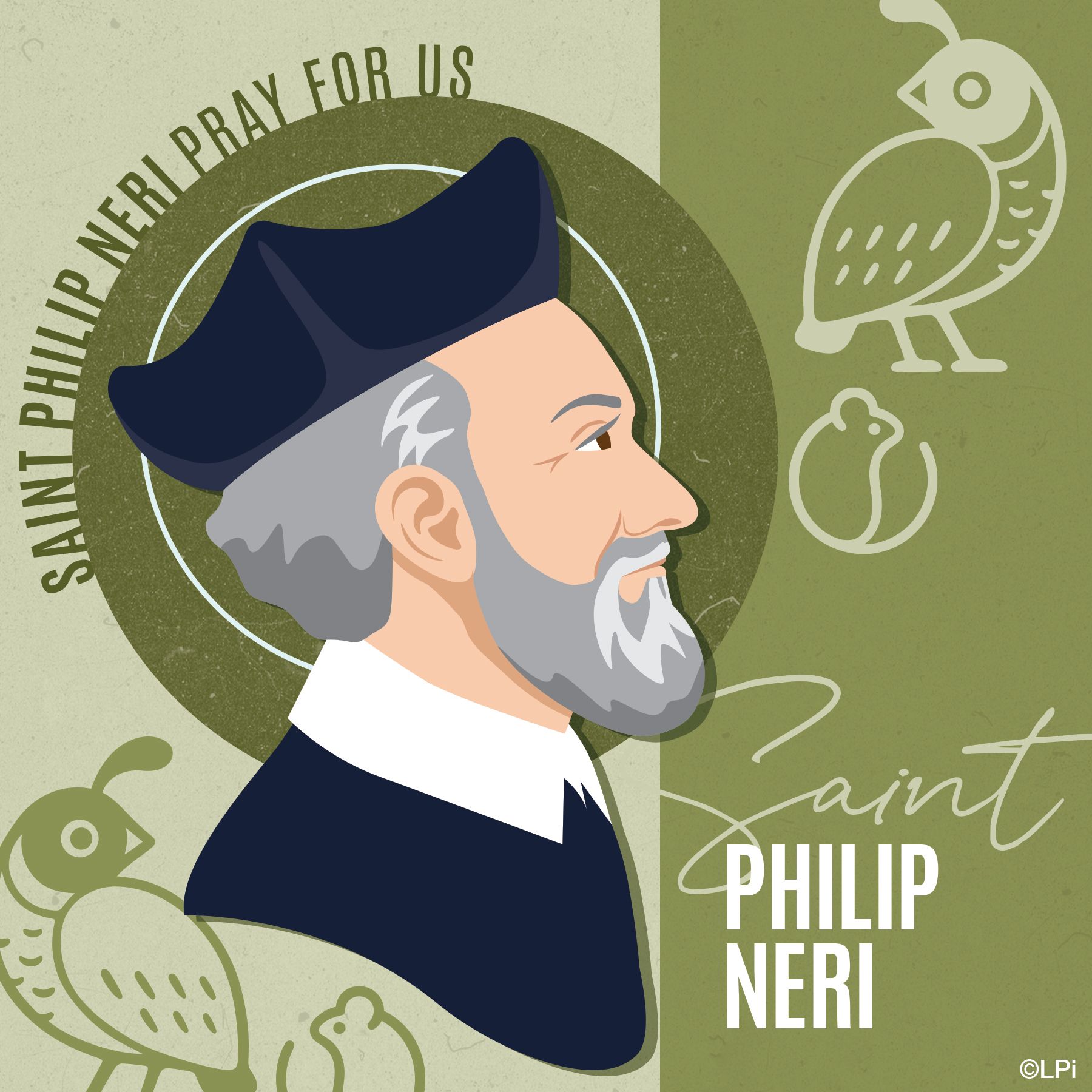
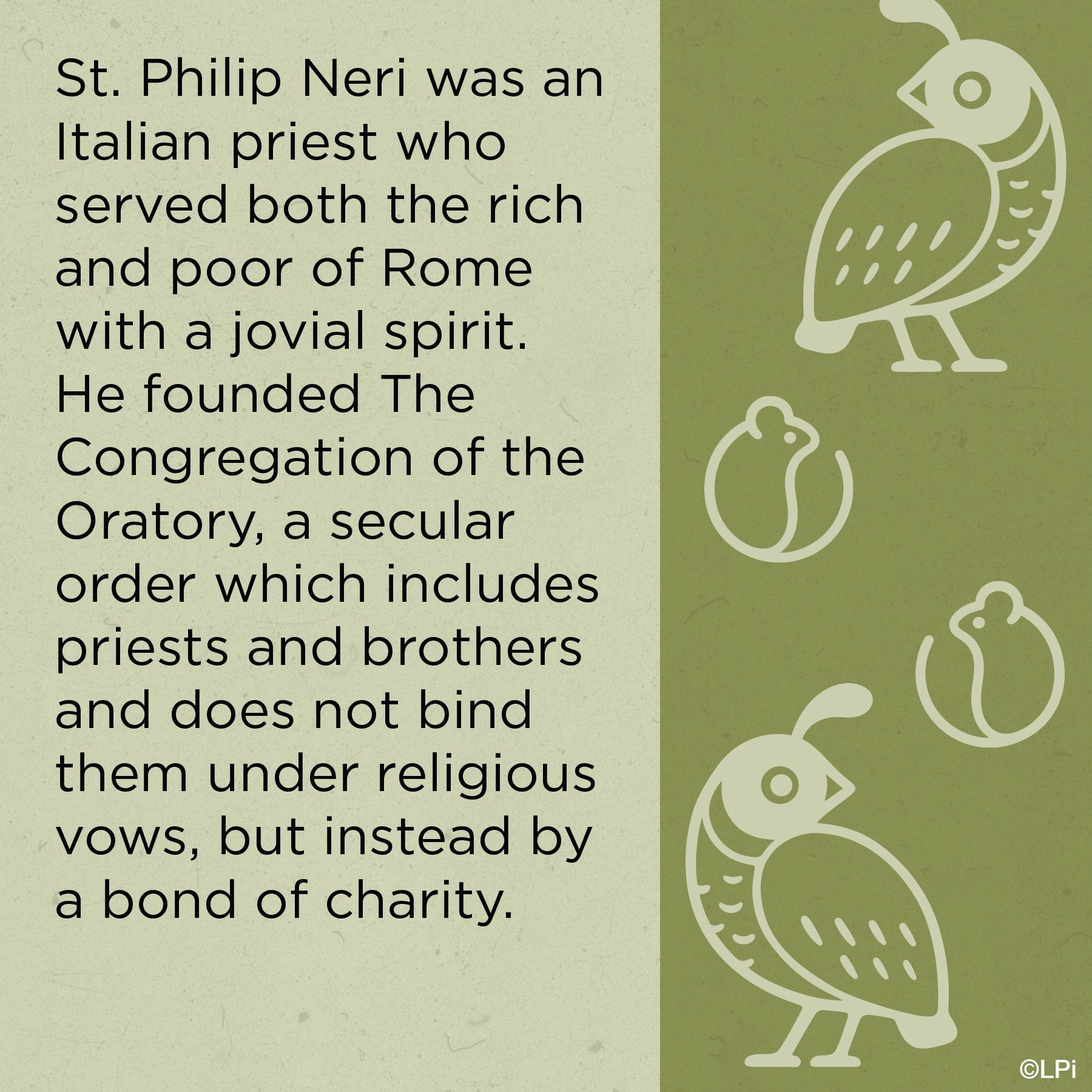

Saint Rita of Cascia | Feast Day May 22
St. Rita of Cascia | May 22
St. Rita of Cascia (1381 – 1457) had the opportunity to live her life as a wife, mother, widow, and eventually, member of a religious community. Born in central Italy, St. Rita felt the calling to become a nun, but was pressured at a young age into marriage. During her 18-year marriage to a cruel man, she raised two sons. When her husband was killed in a brawl and her sons died, St. Rita decided to go back to her first love and attempted to join the Augustinian nuns in Cascia. Her status as a widow caused some complications to her entering, but she eventually succeeded in professing vows.
Throughout her lifetime, St. Rita of Cascia was known for her prayerfulness and charity. She also experienced stigmata on her forehead, meditated frequently on Christ’s passion, and cared for the nuns of her religious community and those in the lay community who came to her for counsel.
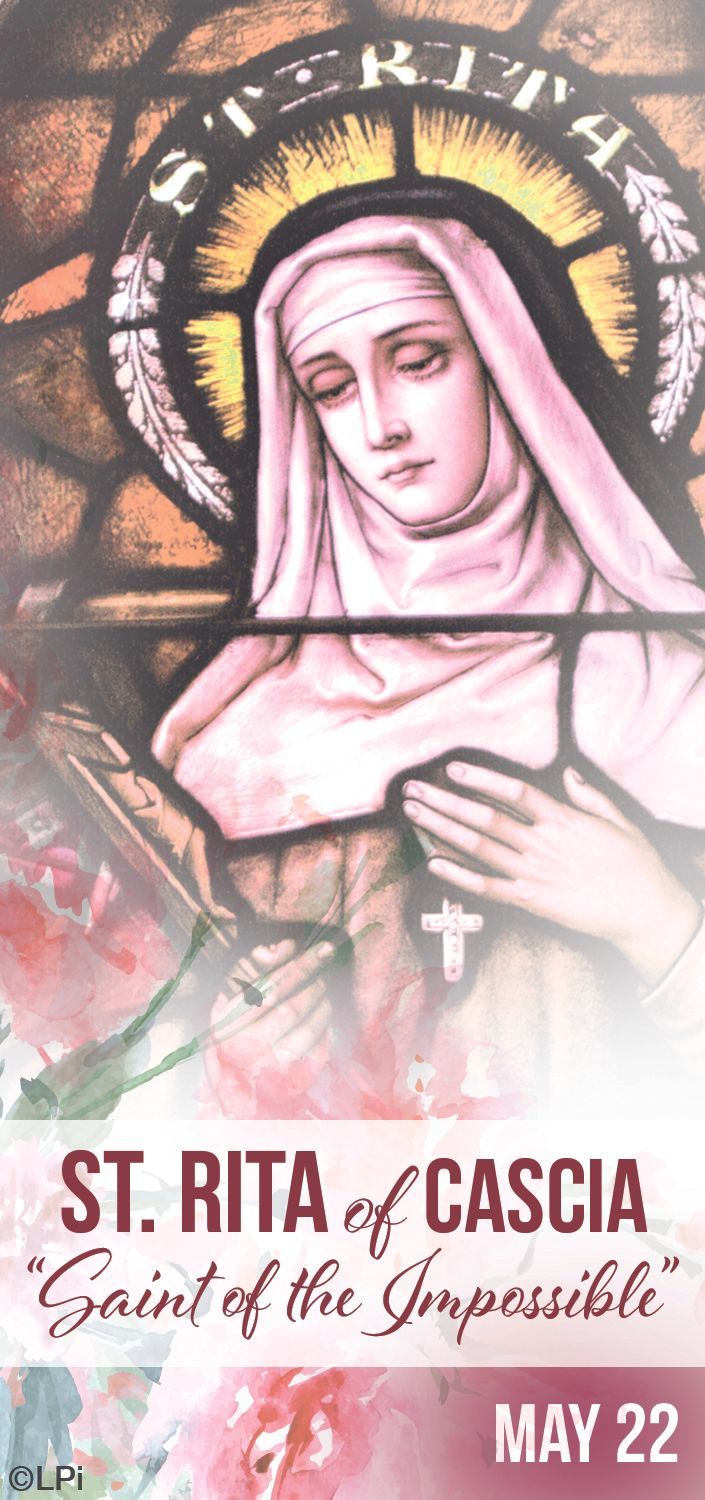
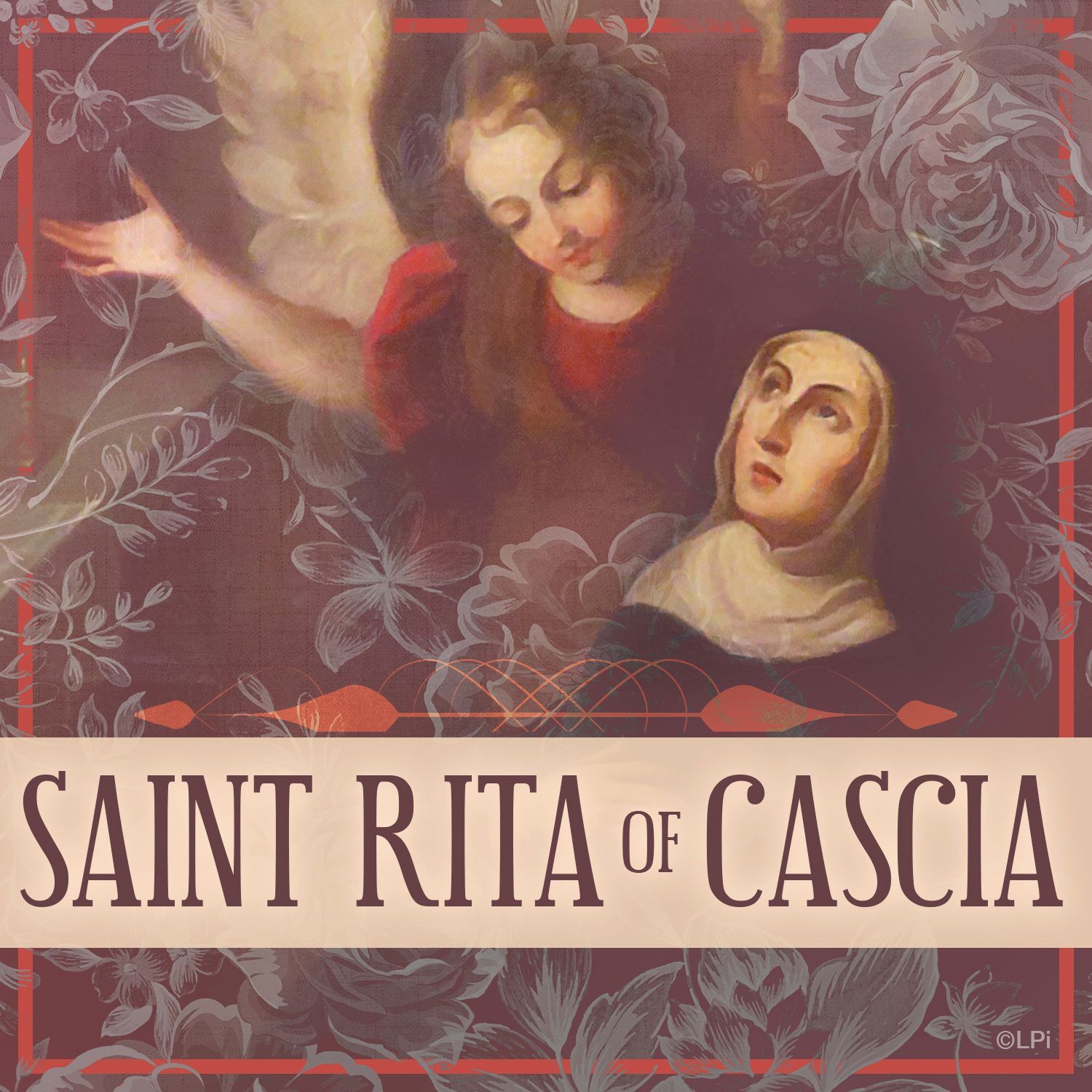
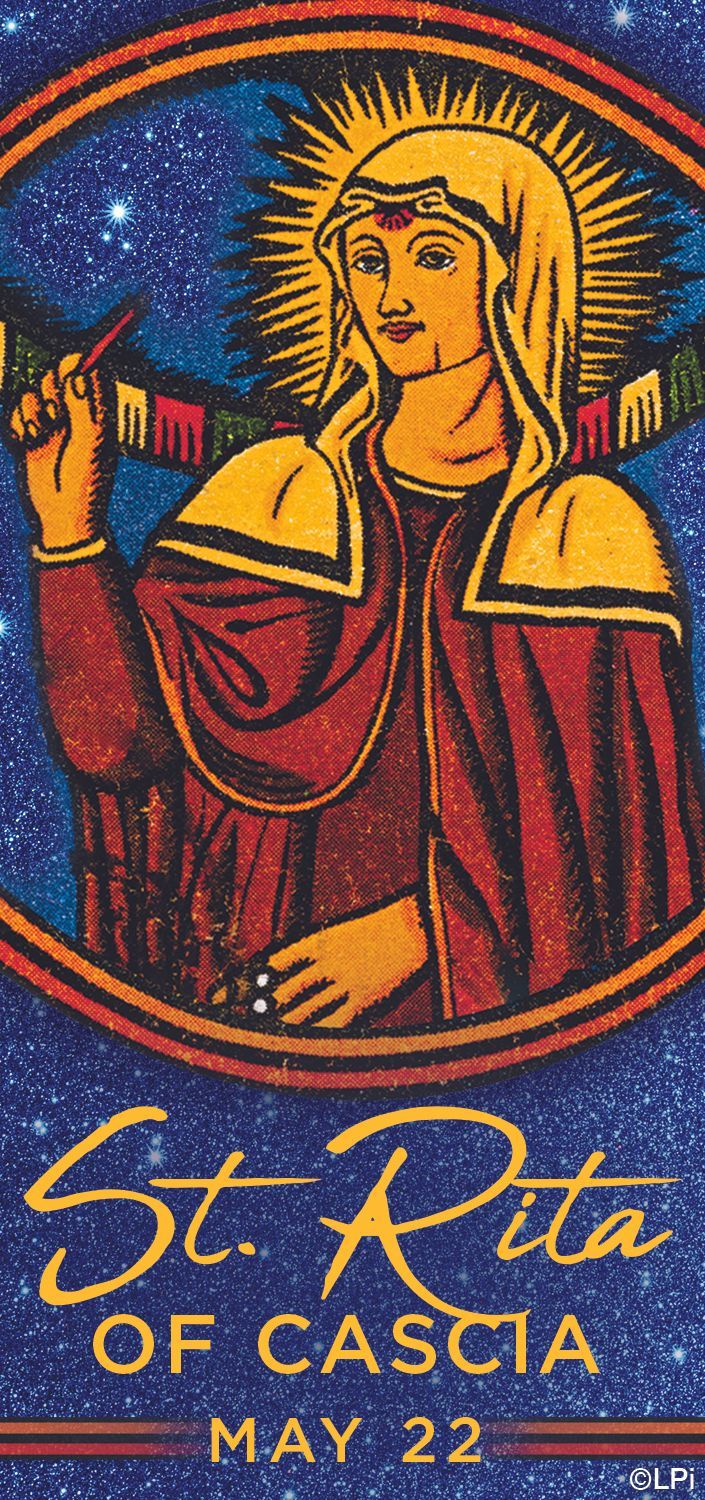
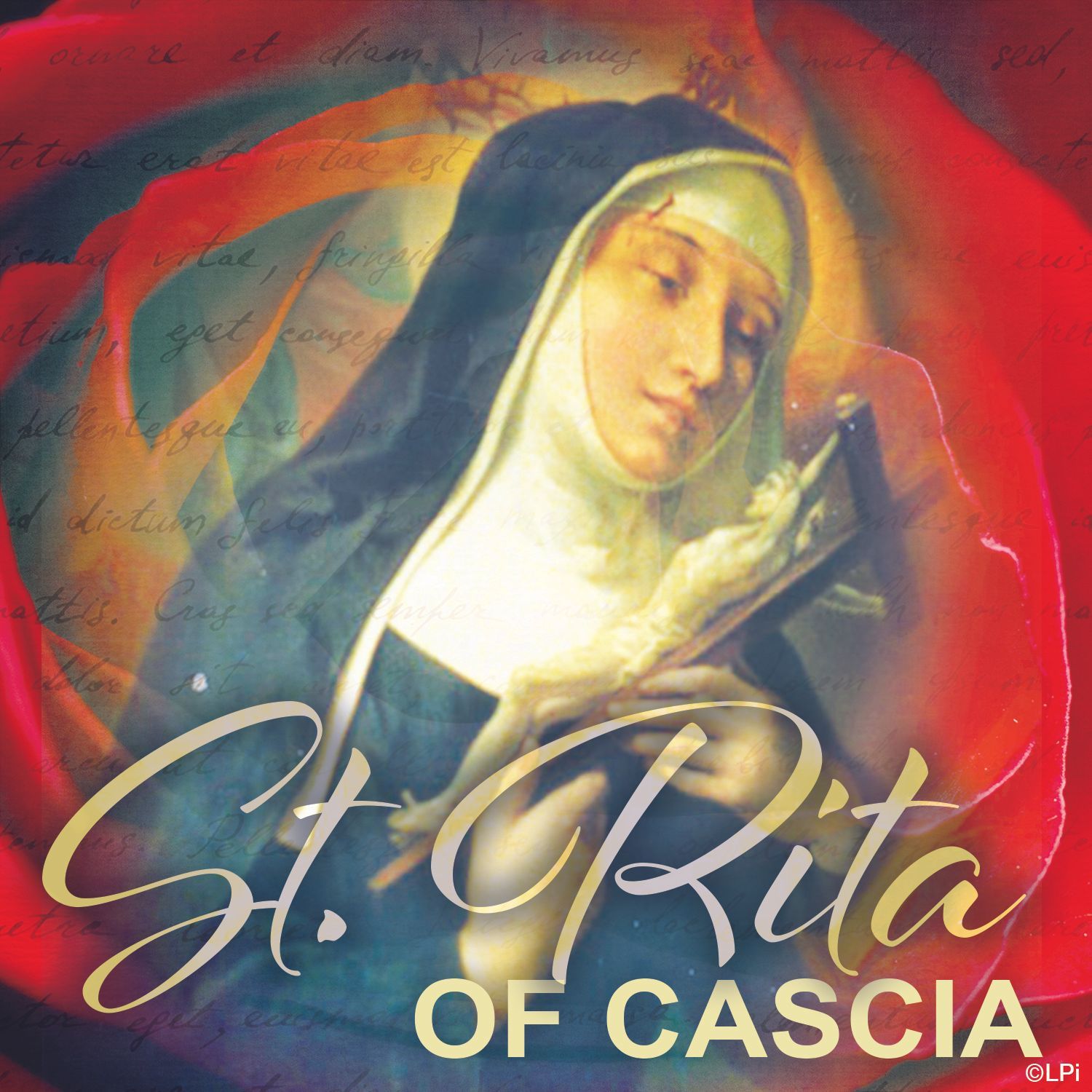
Saint Christopher Magallanes | Feast Day May 21
“Long live Christ the King and the Virgin of Guadalupe!”
This was the slogan of the “Cristero” uprising in the 1920’s against the anti-Catholic government of Mexico which had instituted and enforced laws against the Church in an absurd attempt to eradicate the Catholic faith in Mexico, even going so far as to ban all foreign clergy and the celebration of Mass in some regions.
St. Christopher Magallanes, along with 21 other priests and three lay companions, were martyred between 1915 and 1937, by shooting or hanging, throughout eight Mexican states, for their membership in the Cristero movement. Magallanes erected a seminary in Totatiche and he and his companions secretly preached and ministered to the faithful.
The last words heard spoken by Magallanes were from his cell, when he shouted, "I am innocent and I die innocent. I forgive with all my heart those responsible for my death, and I ask God that the shedding of my blood serve the peace of our divided Mexico".
Pope John Paul II beatified the Cristero martyrs in 1992 and canonized them in 2000.
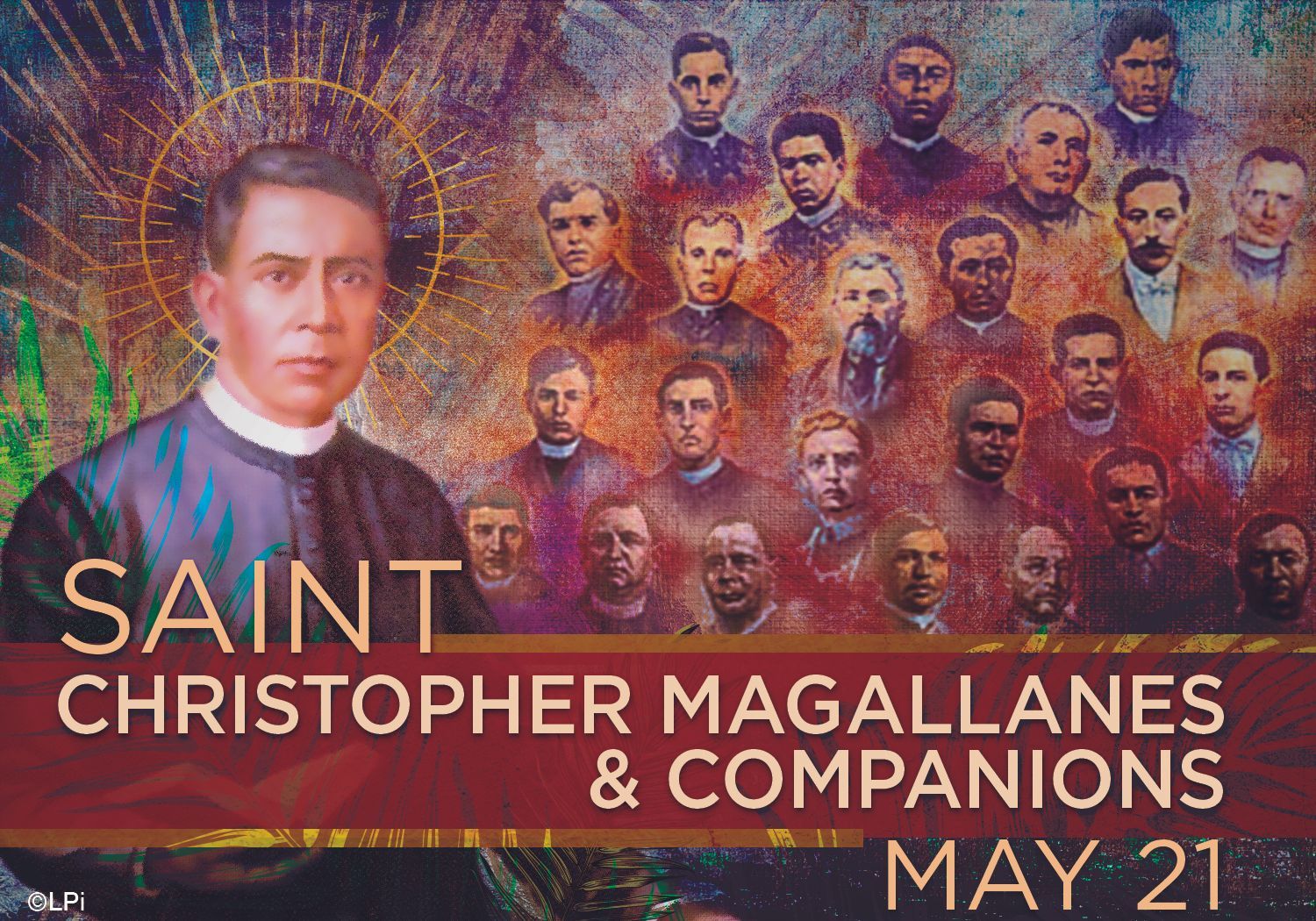
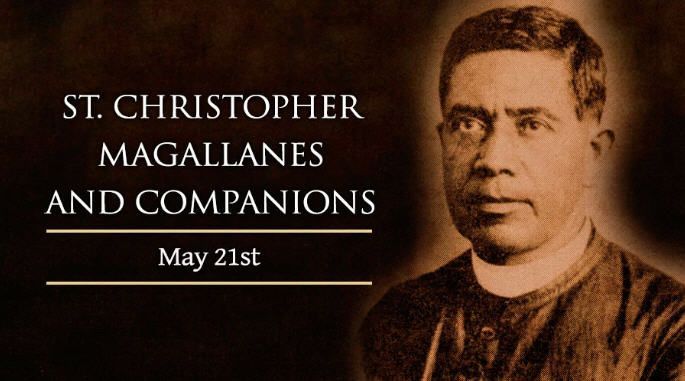
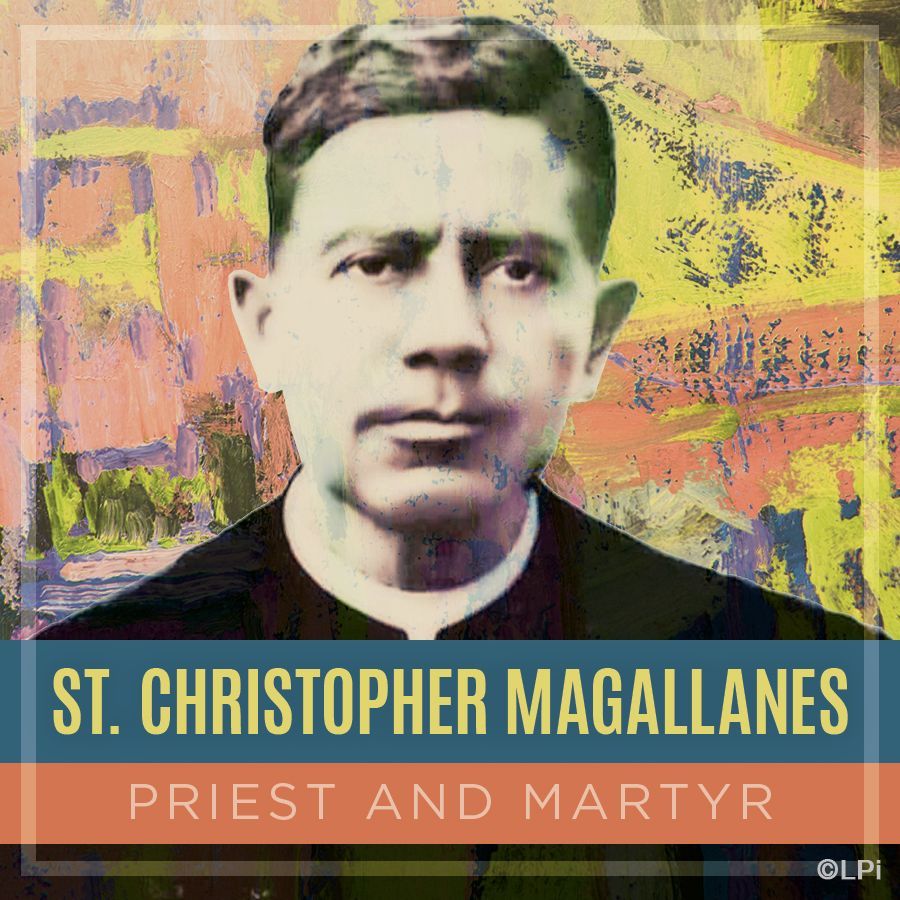
Saint Bernardine of Siena | Feast Day May 20
The Catholic Church honors St. Bernardine of Siena on May 20. A Franciscan friar and preacher, St. Bernardine is known as “the Apostle of Italy” for his efforts to revive the country's Catholic faith during the 15th century.
Bernardine Albizeschi was born to upper-class parents in the Italian republic of Siena during 1380. Misfortune soon entered the boy's life when he lost his mother at age three and his father four years later. His aunt Diana cared for him afterward, and taught him to seek consolation and security by trusting in God.
Even at a young age, Bernardine demonstrated a remarkable concern for the poor as an outgrowth of his love for God. Having become accustomed to fasting, he preferred at times to go without any food in order to help someone in greater need. From the ages of 11 to 17 he focused on his studies, developing the eloquence and dedication that would serve his future work as an evangelist.
Before becoming a preacher, however, Bernardine spent several years ministering to the sick and dying. He enrolled in a religious association that served at a hospital in the town of Scala, and applied himself to this work from 1397 to 1400.
During that time, a severe plague broke out in Siena, causing a crisis that would eventually lead to the young man taking charge of the entire hospital. Inside its walls, up to 20 people were dying each day from an illness that also killed many of the hospital workers. The staff was decimated and new victims were coming in constantly.
Bernardine persuaded 12 young men to help him continue the work of the hospital, which he took over for a period of four months. Although the plague did not infect him, the exhausting work left him weak and he contracted a different sickness that kept him in bed for four months.
After recovering, he spent over a year caring for his aunt Bartholomaea before her death. Then the 22-year-old Bernardine moved to a small house outside the city, where he began to discern God's will for his future through prayer and fasting.
He eventually chose to join the Franciscans of the Strict Observance in 1403, embracing an austere life focused on poverty and humility. During this time, while praying before a crucifix, Bernardine heard Christ say to him: “My son, behold me hanging upon a cross. If you love me, or desire to imitate me, be also fastened naked to your cross and follow me. Thus you will assuredly find me.”
After Bernardine was ordained a priest, his superiors commissioned him to preach as a missionary to the Italians who were falling away from their Catholic faith. The Dominican evangelist St. Vincent Ferrer, just before leaving Italy, preached a sermon in which he predicted that one of his listeners would continue his work among the Italians – a prophecy Bernardine heard in person, and went on to fulfill.
Bernardine's personal devotion to God, which amazed even the strict Franciscans, made his preaching extremely effective. He moved his hearers to abandon their vices, turn back to God, and make peace with one another. He promoted devotion to the name of Jesus as a simple and effective means of recalling God's love at all times.
When other priests consulted him for advice, Bernardine gave them a simple rule: “In all your actions, seek in the first place the kingdom of God and his glory. Direct all you do purely to his honor. Persevere in brotherly charity, and practice first all that you desire to teach others.”
“By this means,” he said, “the Holy Spirit will be your master, and will give you such wisdom and such a tongue that no adversary will be able to stand against you.”
Bernardine's own life attested to this source of strength in the face of trials. He patiently suffered an accusation of heresy – which Pope Martin V judged to be false – and refused to abandon his bold preaching when a nobleman threatened him with death.
But Bernardine was also widely admired throughout Italy, and he was offered the office of a bishop on three occasions. Each time, however, he turned down the position, choosing to fulfill the prediction of St. Vincent Ferrer through his missionary work. Bernardine preached throughout most of Italy several times over, and even managed to reconcile members of its warring political factions.
Later in his life, Bernardine served for five years as the Vicar General for his Franciscan order, and revived the practice of its strict rule of life. Then in 1444, forty years after he first entered religious life, Bernardine became sick while traveling. He continued to preach, but soon lost his strength and his voice.
St. Bernardine of Siena died on May 20, 1444. Only six years later, in 1450, Pope Nicholas V canonized him as a saint.
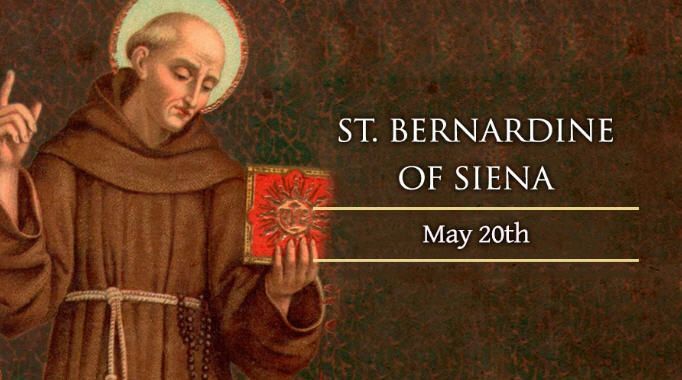

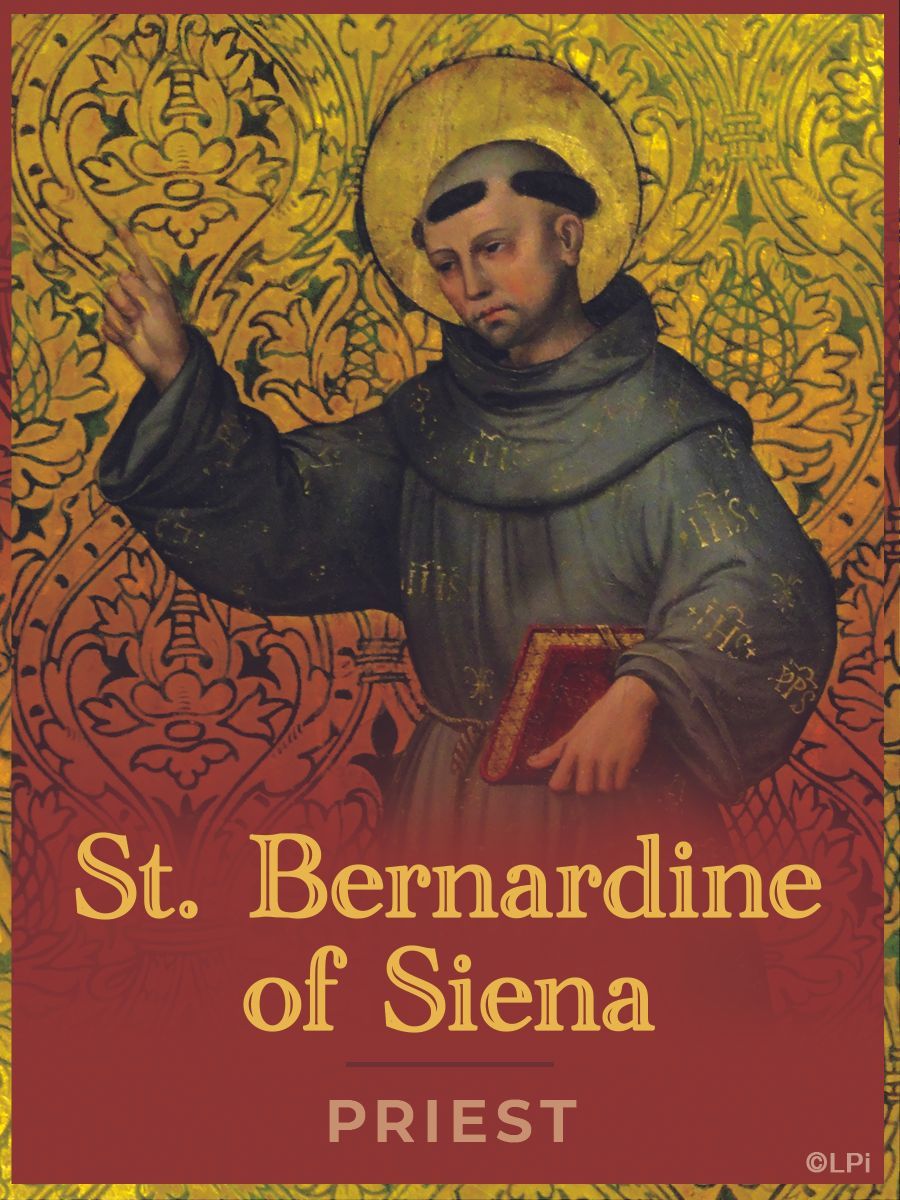
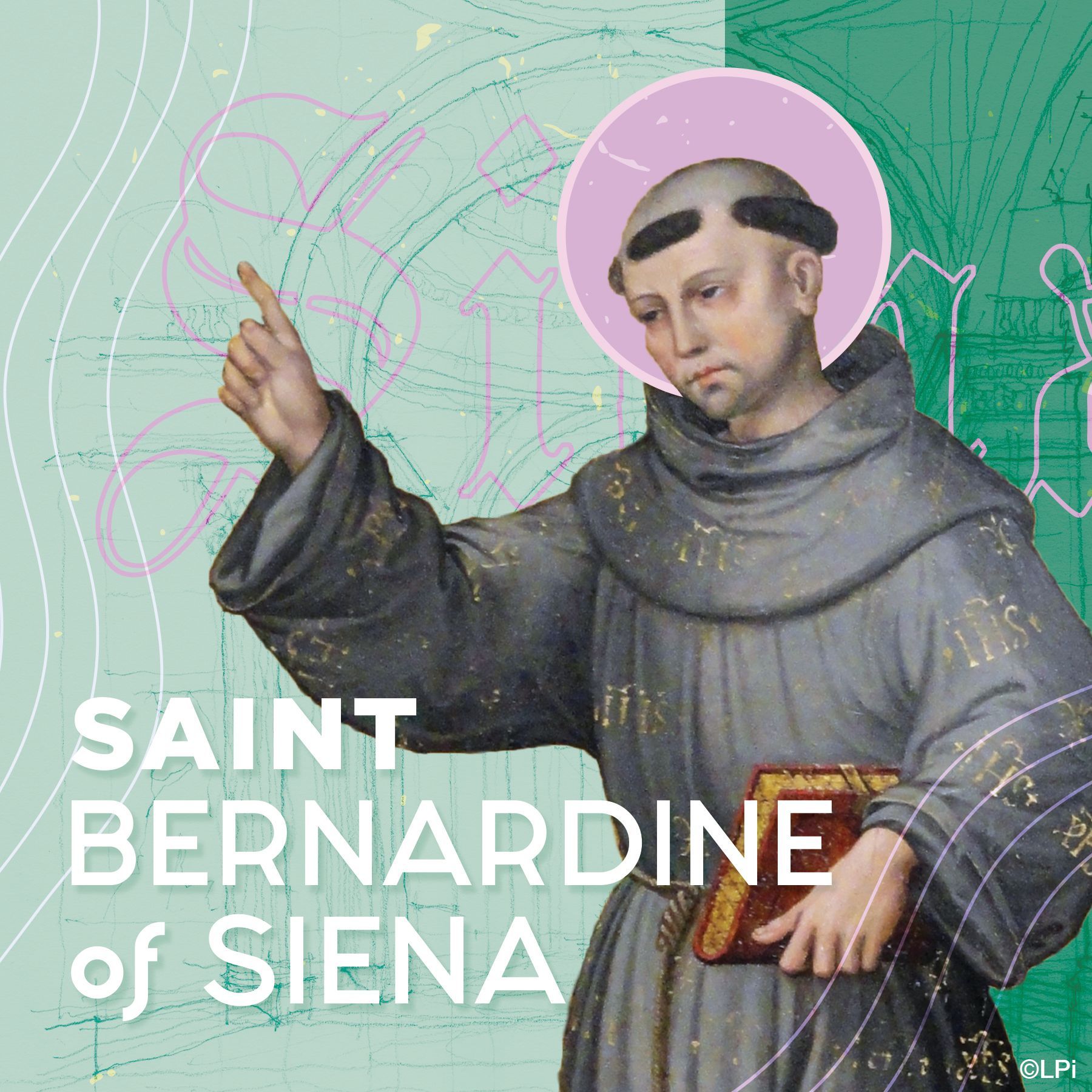
Saint Isidore | Feast Day May 15
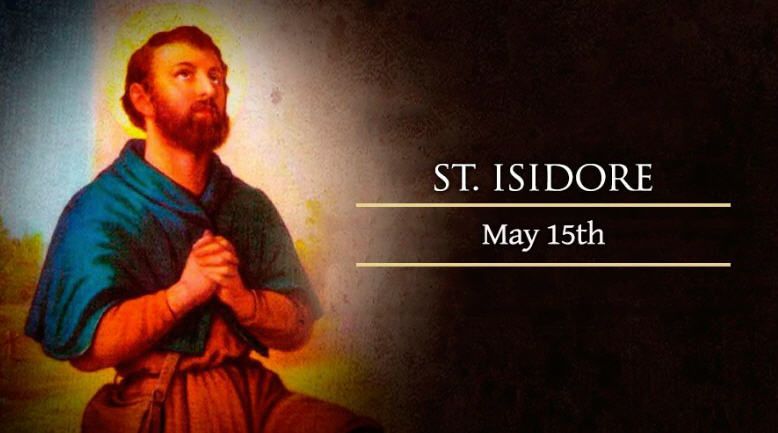
St. Isidore was born in 1070 in Madrid, Spain. His family was poor, and he labored as a farmer on the land owned by a rich man named John de Vergas. He was very pious and such a good worker that de Vergas allowed him to worship daily in the chapel on his property, and because of thes he was often accused by his fellow workers of neglecting his duties because he made prayer a higher priority.
Isidore eventually married a woman named Mary, and together they had a son. However their son died while still very young, and through this they realized that it was the will of God for them not have children, so they lived together chastely the rest of their lives, doing good works.
Although he remained poor, he gave whatever he could spare to the poor. One tale says that as he walked to the mill one day, he stopped and gave half of the corn in his sack to the hungry birds. By the time he got to the mill, his sack had miraculously filled up again. He died in 1130 of natural causes.
Many miracles and cures have been reported at his grave, in which his body remains incorruptible. His wife, too, was canonized—Saint Mary de la Cabeza.
He is the patron saint of agricultural workers and the United States National Rural Life Conference.
Saint Matthias | Feast Day May 14
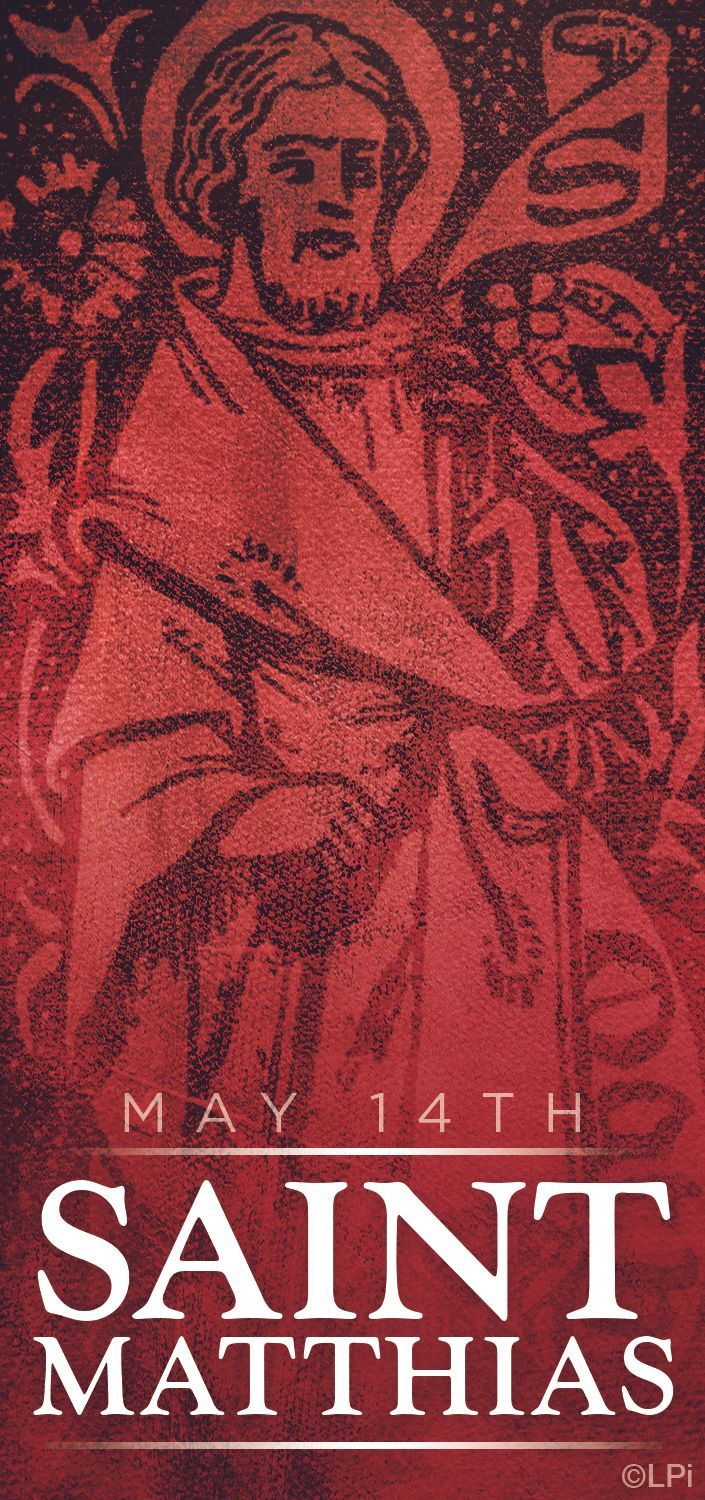
Matthias, whose name means “gift of God”, was the disciple chosen to replace Judas as one of the twelve Apostles. The Acts of the Apostles state that he was also one of the 72 disciples that the Lord Jesus sent out to preach the good news. Matthias was with the Lord since His Baptism, and was “a witness to Christ’s Resurrection,” according to St. Peter in Acts. He remained with Jesus until His Ascension.
According to various traditions, Matthias preached in Cappadocia, Jerusalem, the shores of the Caspian Sea (in modern day Turkey) and Ethiopia. He is said to have met his death by crucifixion in Colchis or by stoning in Jerusalem.
There is evidence cited in some of the early Church fathers that there was a Gospel according to Matthias in circulation, but it has since been lost, and was declared apocryphal by Pope Gelasius.
He is invoked for assistance against alcoholism, and for support by recovered alcoholics.
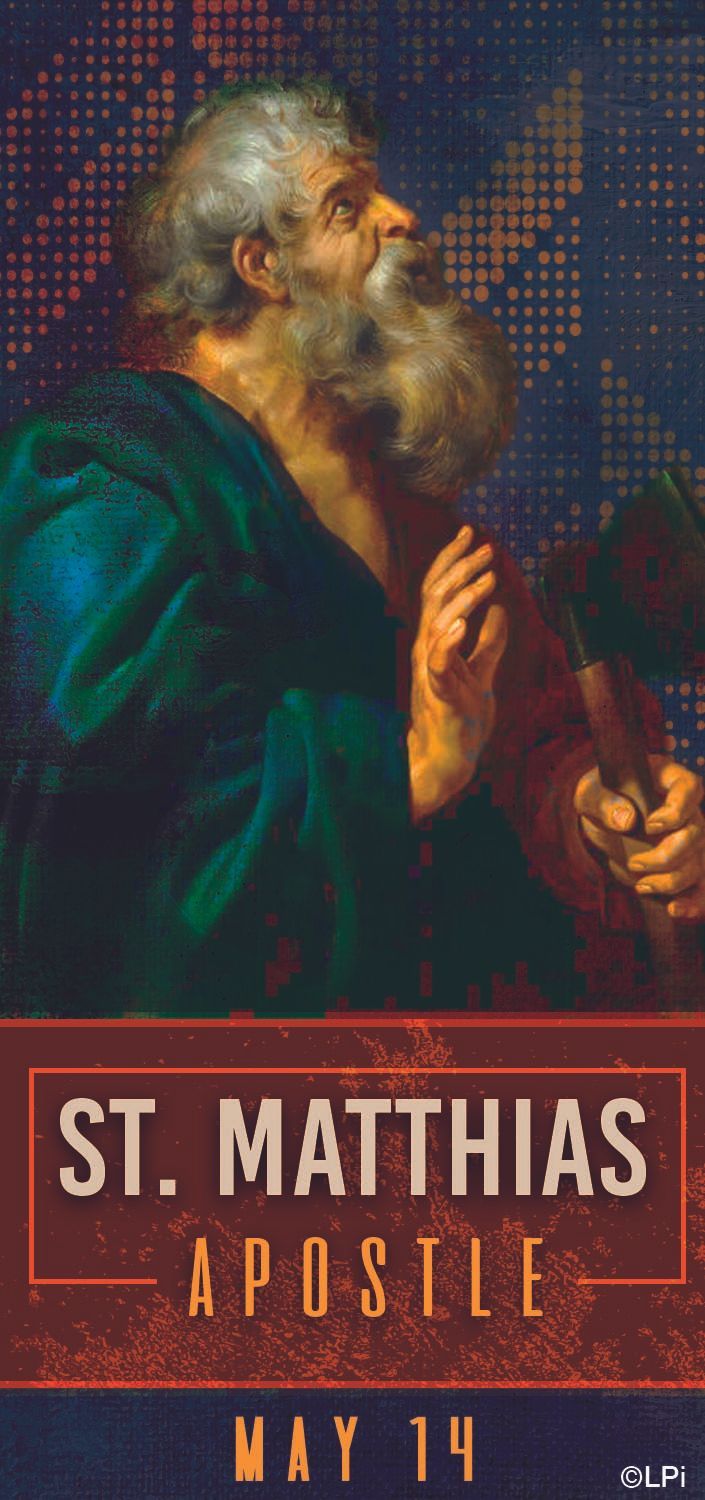
OUR LADY OF FATIMA | MARY MOTHER OF JESUS

Marian Feasts
Question:
Why does Mary have so many feast days and names?
Answer:
Christians first began celebrating feast days in honor of Mary, the Mother of Jesus, in the fifth century. That celebration (originally called the Feast of the Dormition and now known by Roman Catholics as the Solemnity of the Assumption) was celebrated on August 15. Very soon, however, other special days dedicated to Mary began to appear in Jerusalem, Rome, and other major cities of the Christian world. These days of feasting became important parts of the life of the community. But, more importantly, each of these unique celebrations became an opportunity to focus on a different facet of the Christian faith, as believers focused their attention on specific events or mysteries of the lives of Mary and her Son.
Over the centuries, some of these celebrations became universal (such as the Assumption on August 15, the Immaculate Conception on December 8, and the Solemnity of Mary, Mother of God on January 1). Other celebrations were more closely tied to certain religious orders (such as the Carmelites celebration of “Our Lady of Mount Carmel” on July 16 or the Servite Friars feast of the “Seven Sorrows of Mary,” which is now celebrated as the Memorial of Our Lady of Sorrows on September 15).
In more recent times, Marian apparitions (like Guadalupe,
Lourdes, and Fatima) have inspired special liturgical celebrations. Pope Francis has added two new celebrations of Mary to the Church’s calendar: The Memorial of Mary, Mother of the Church (on the Monday after Pentecost) and the Commemoration of Our Lady of Loreto (on December 10). The various titles of Mary (like those we find in the Litany of the Blessed Virgin Mary) help us to reflect on different aspects of Mary’s faith and the ways that the Holy Spirit is at work in her and through her, especially as the Mother of Jesus.
In the end, whatever the event or mystery being celebrated in a particular liturgy or the title of Mary being used, we are invited to always see Mary in connection with the saving work of her Son. She is, of course, a patroness and protector for every Christian,
but she is also a model of discipleship and contemplation:
“Having entered deeply into the history of salvation, Mary, in a way, unites in her person and re-echoes the most important doctrines of the faith: and when she is the subject of preaching and worship she prompts the faithful to come to her Son, to his sacrifice and to the love of the Father” (Lumen Gentium, 65).
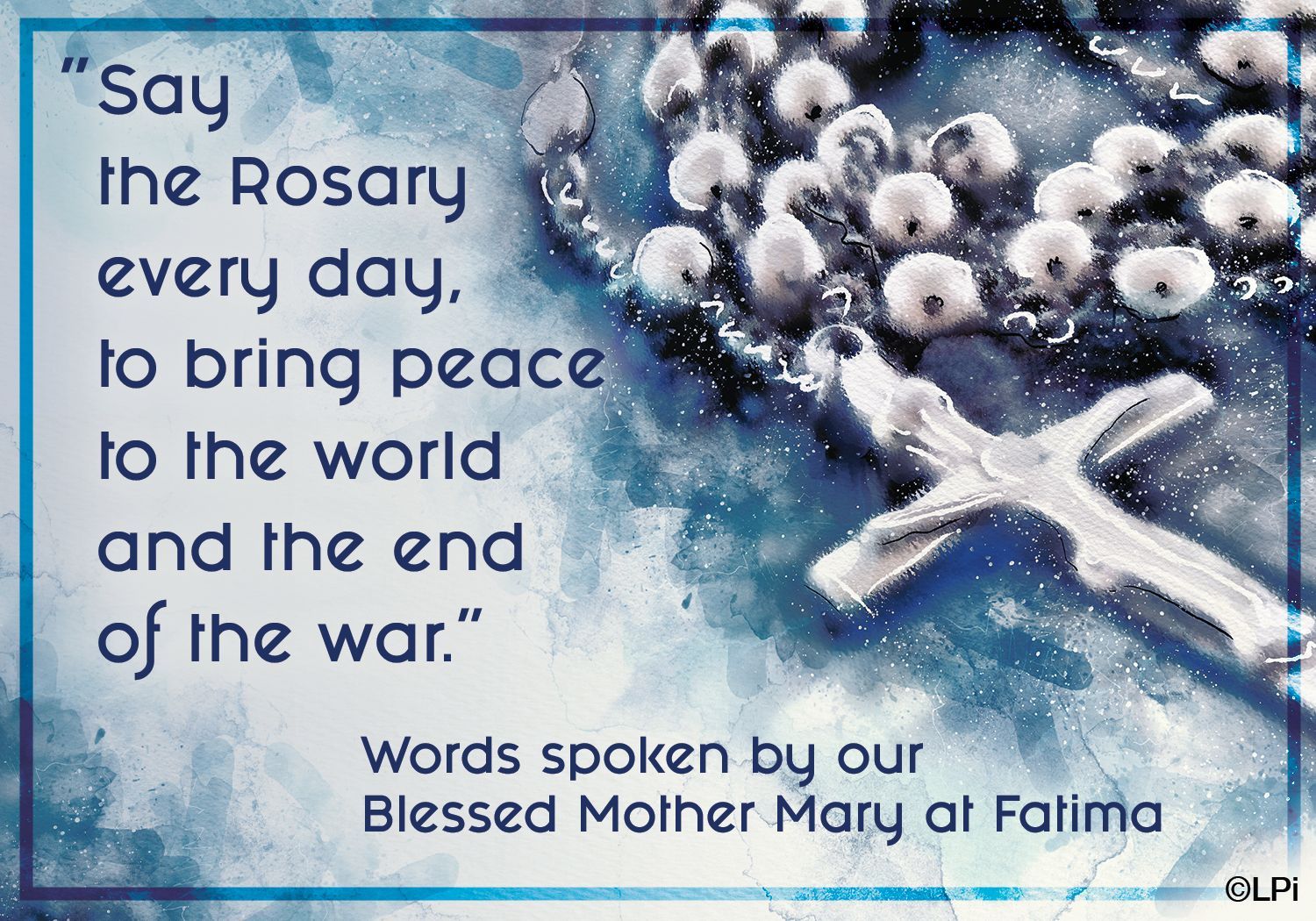
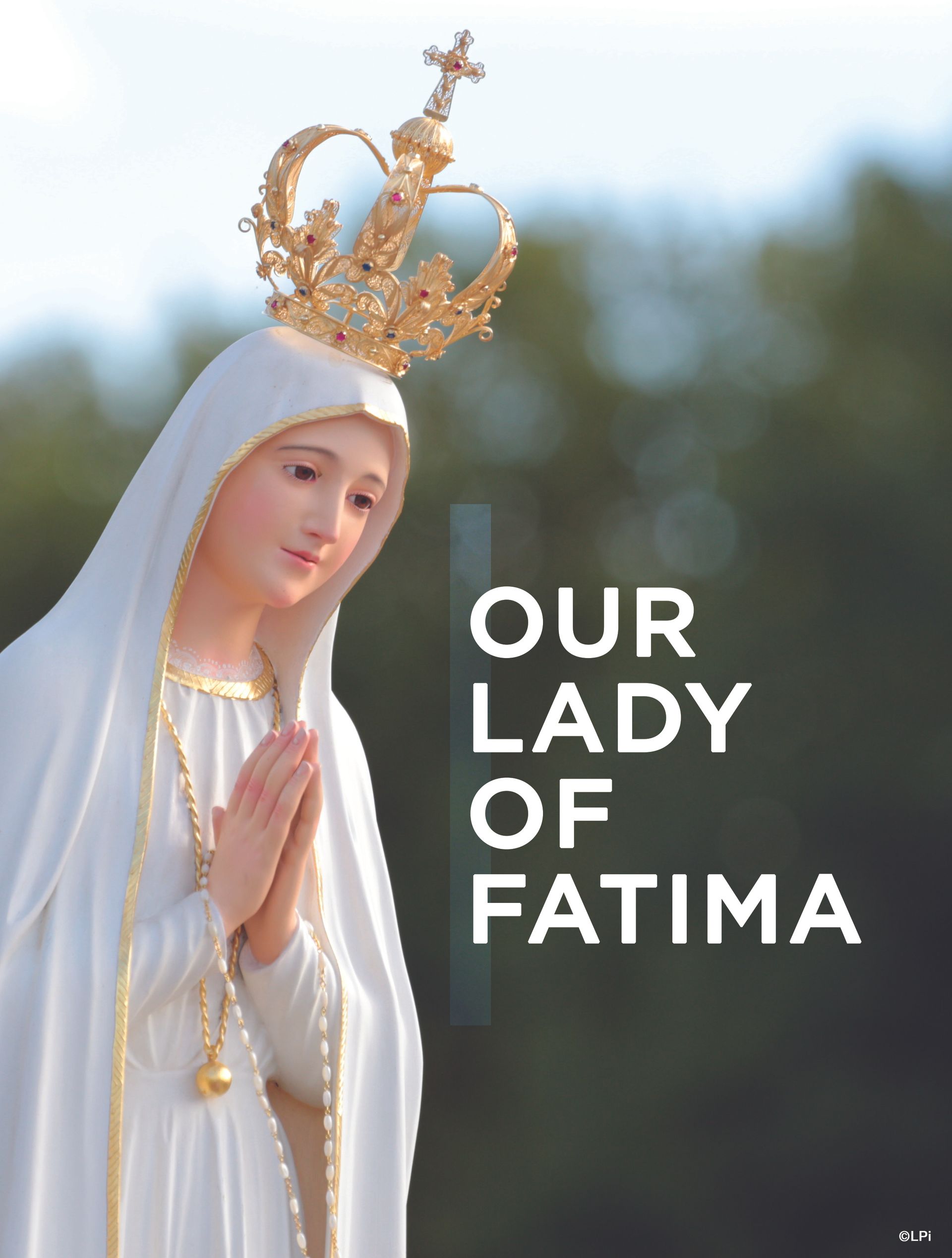

Question: Where did three children witness six apparitions of Mary, Mother of God in 1917?
Question: Where did three children witness six apparitions of Mary, Mother of God in 1917?
Answer: Fátima, Portugal.
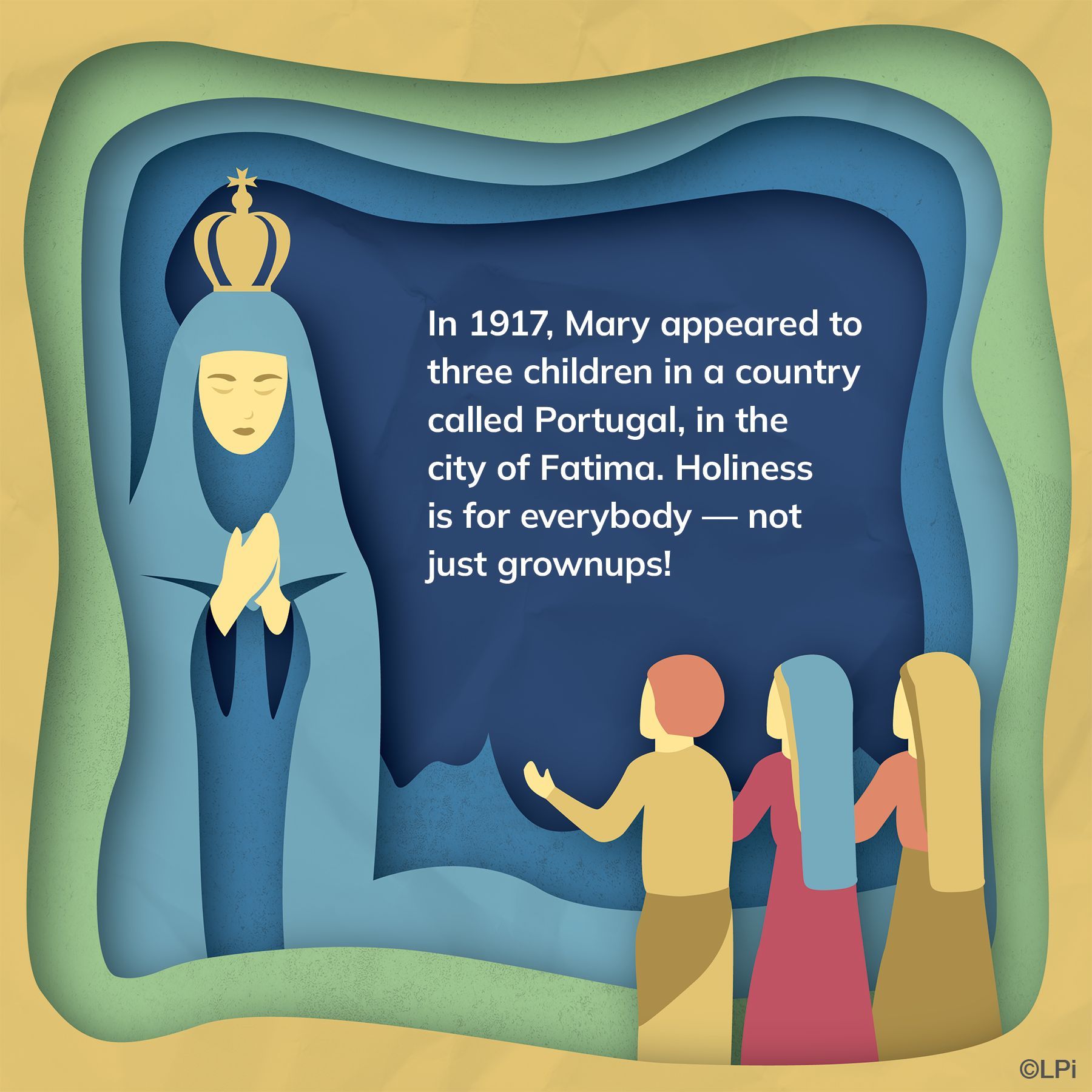
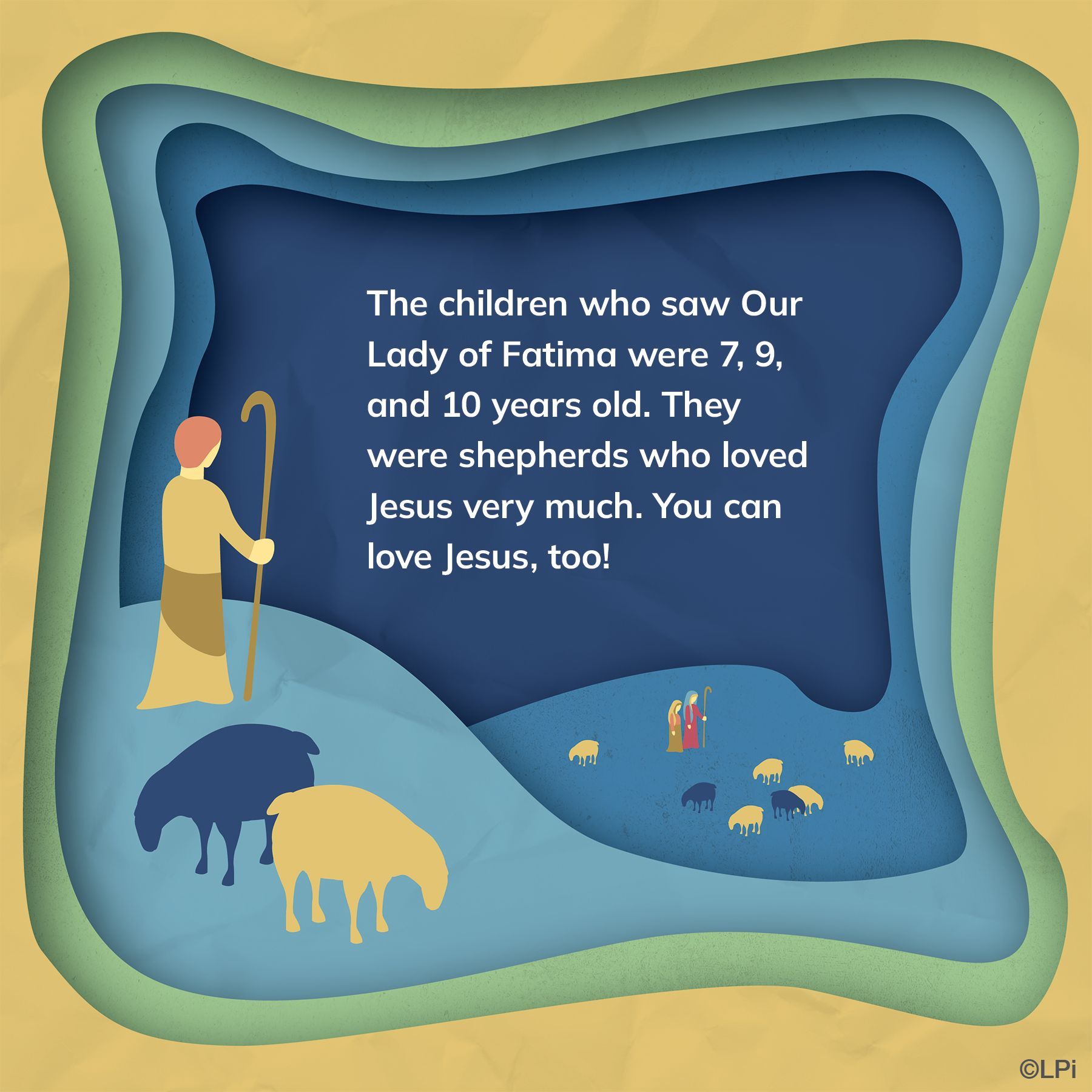
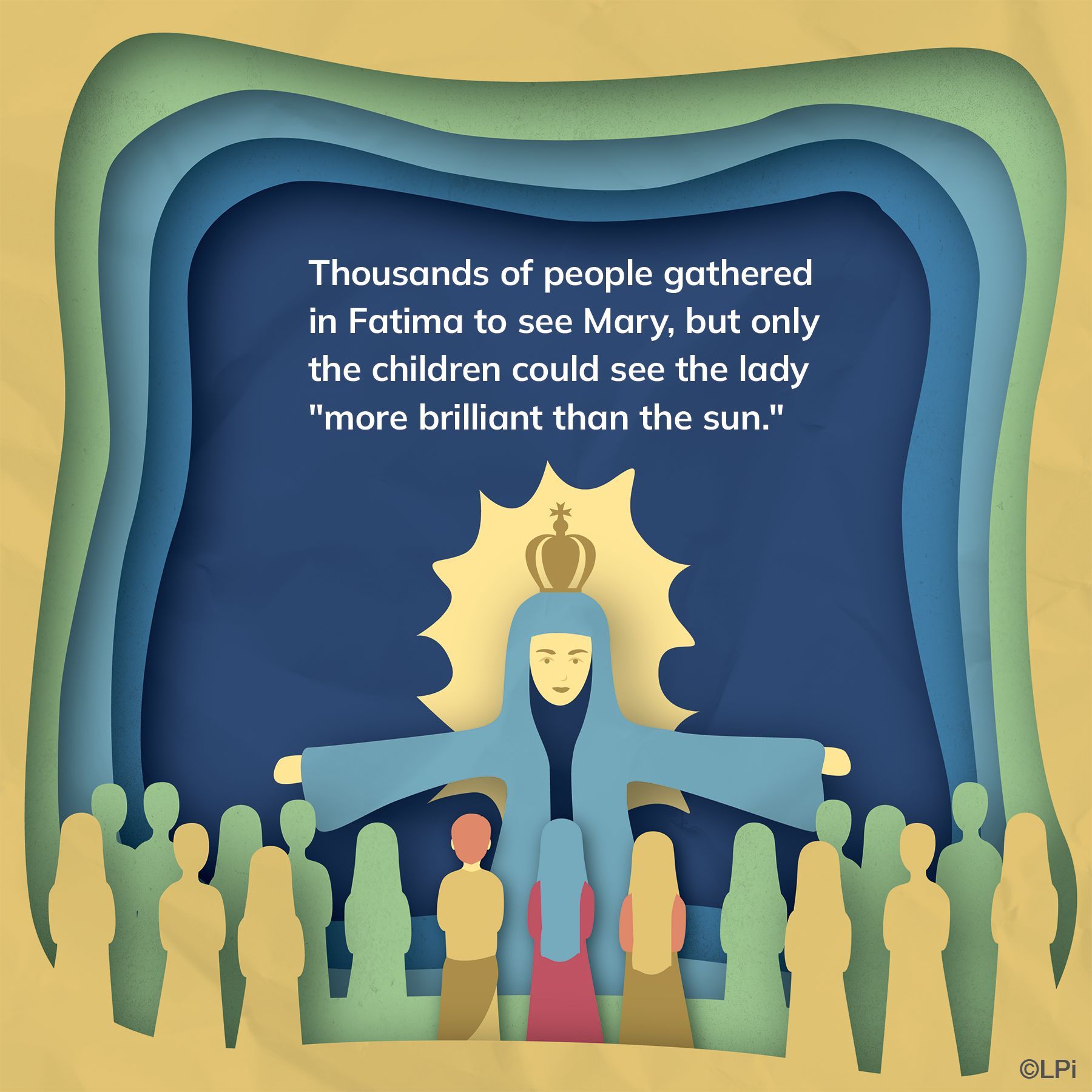
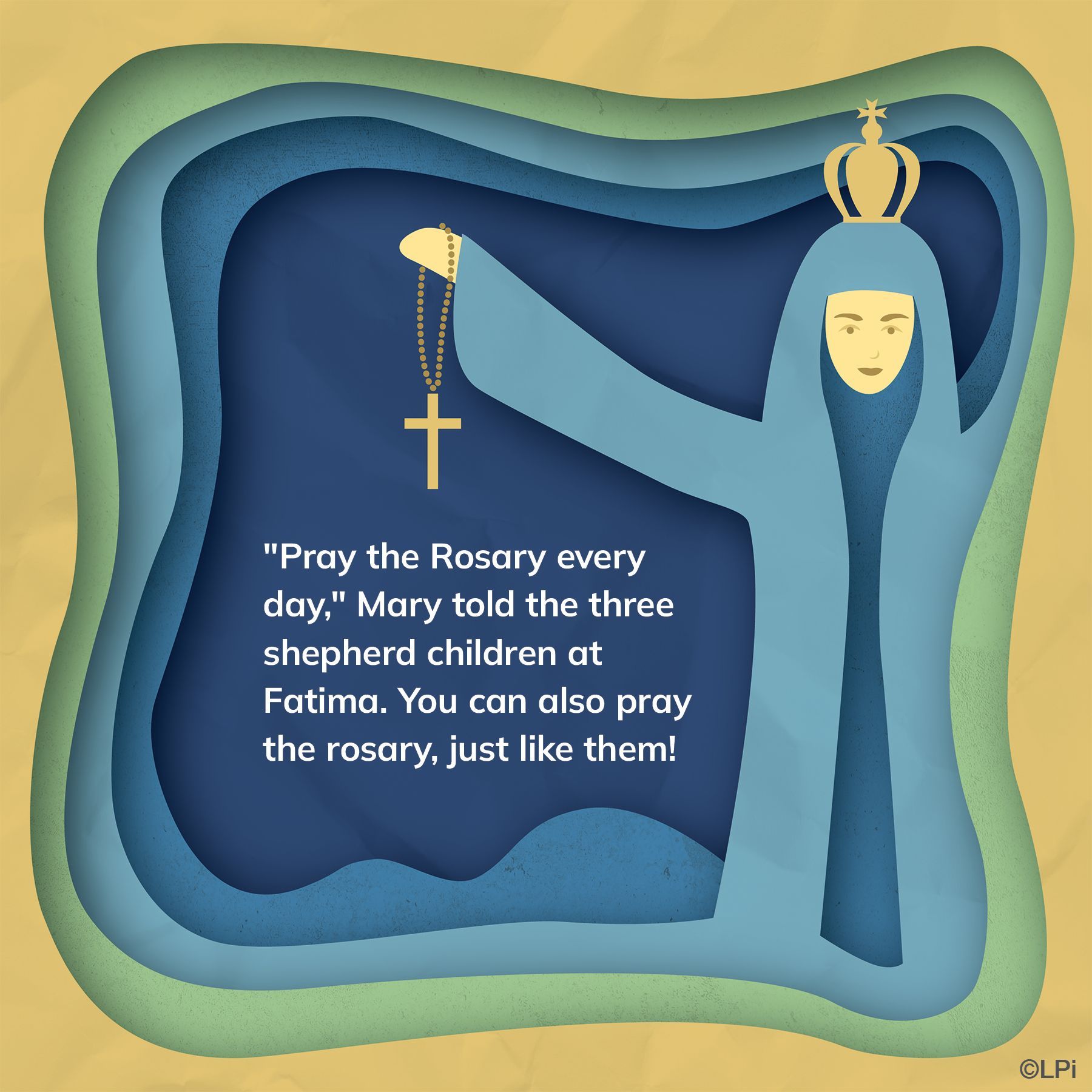
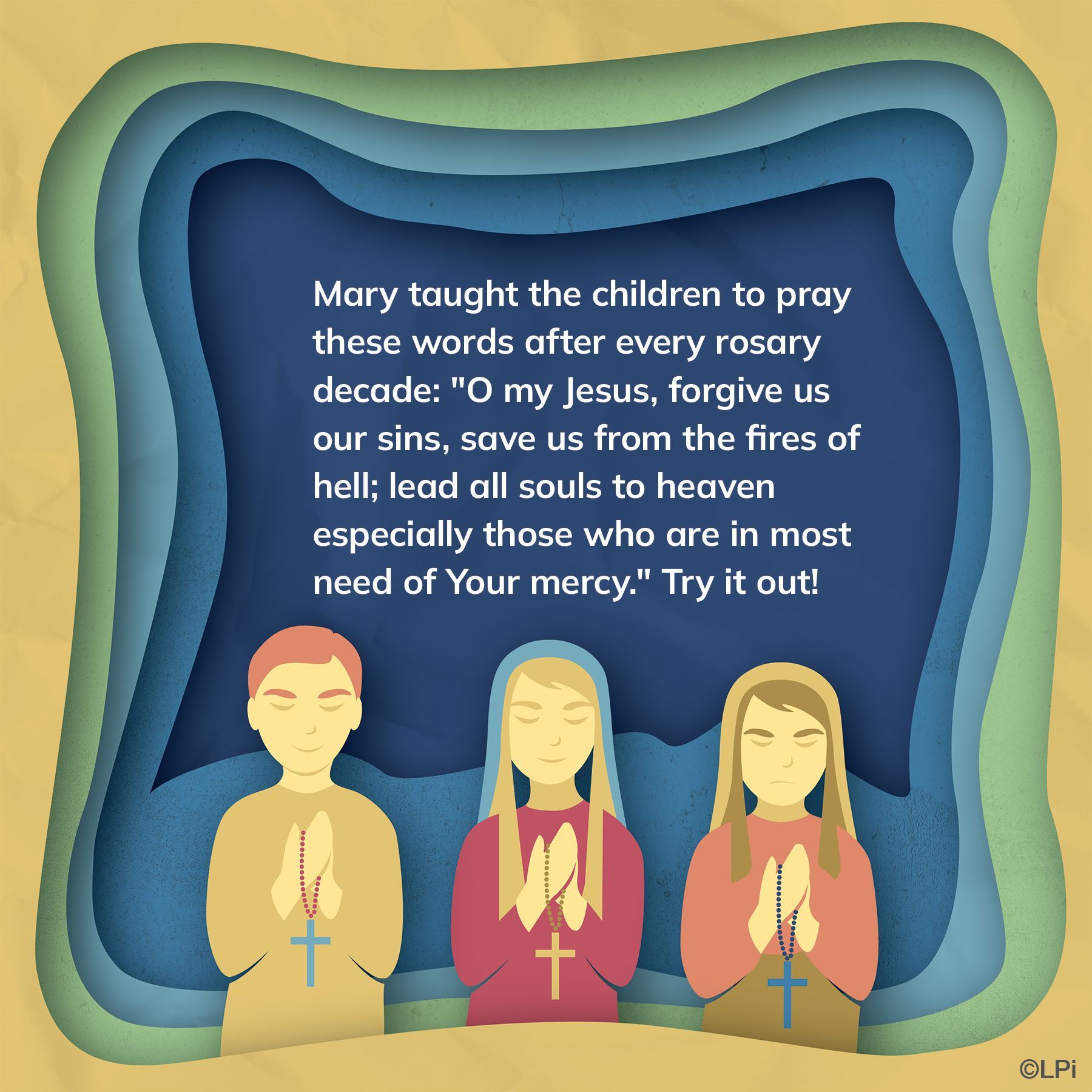
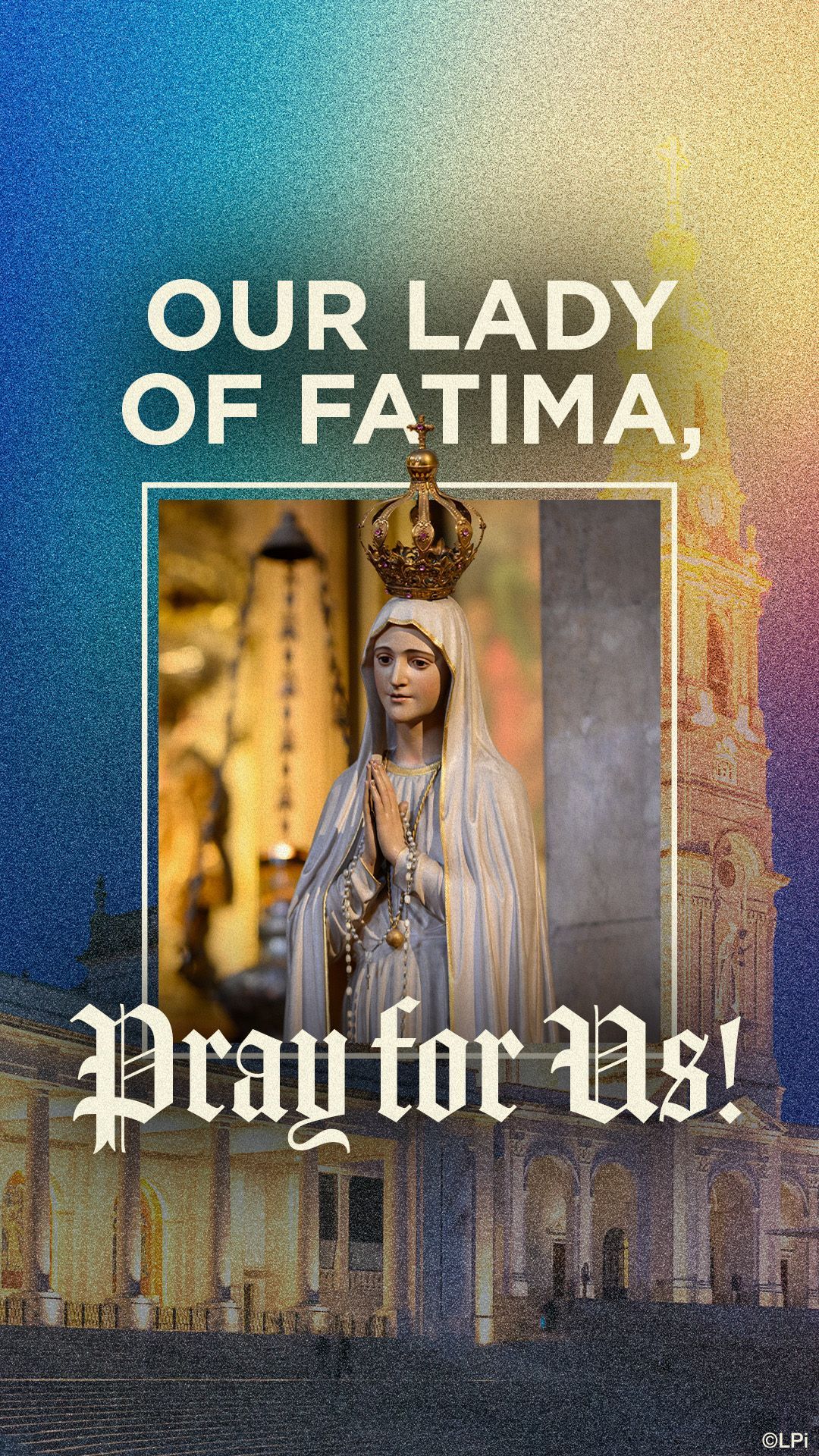
Saints Nereus, Achilleus and Saint Pancras | May 12
Saints Nereus, Achilleus and Pancras have been honored together on May 12 since the fourth century.
Nereus and Achilleus were Roman soldiers of the Praetorian Guard (the emperor’s bodyguards) who were martyred at the end of the first century, and were said to have been baptized by St. Peter himself. When they became Christians they gave up their posts which they saw as immoral and were exiled and then killed under the reign of the emperor Trajan.
St. Pancras, or Pancratius, was a Syrian boy of pagan origin who went to Rome and was converted to Christianity. He was beheaded in 304 at the age of 14 during the persecution of the Emperor Diocletian. He is buried on the Via Aurelia in Rome and the church of St. Pancratius, which still stands today, was built on his grave in the fourth century.
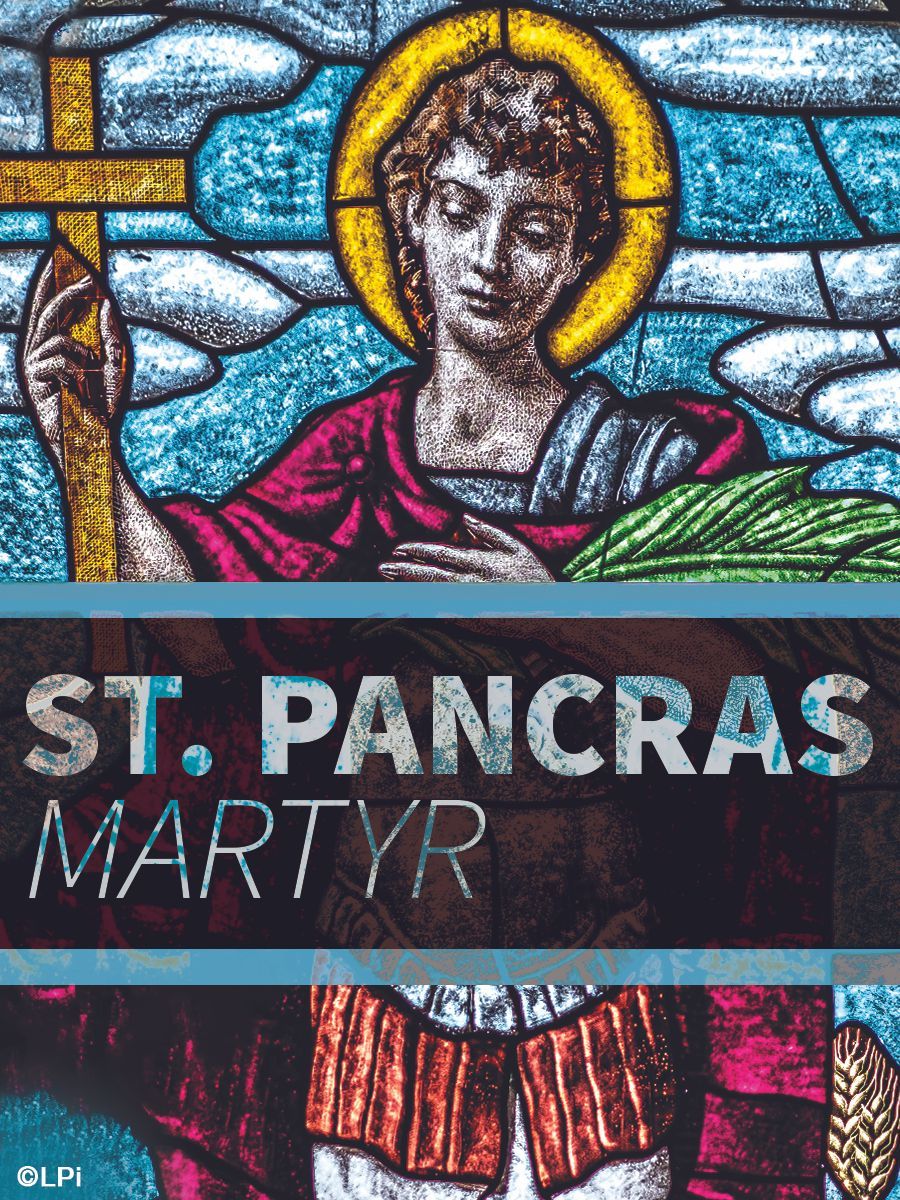
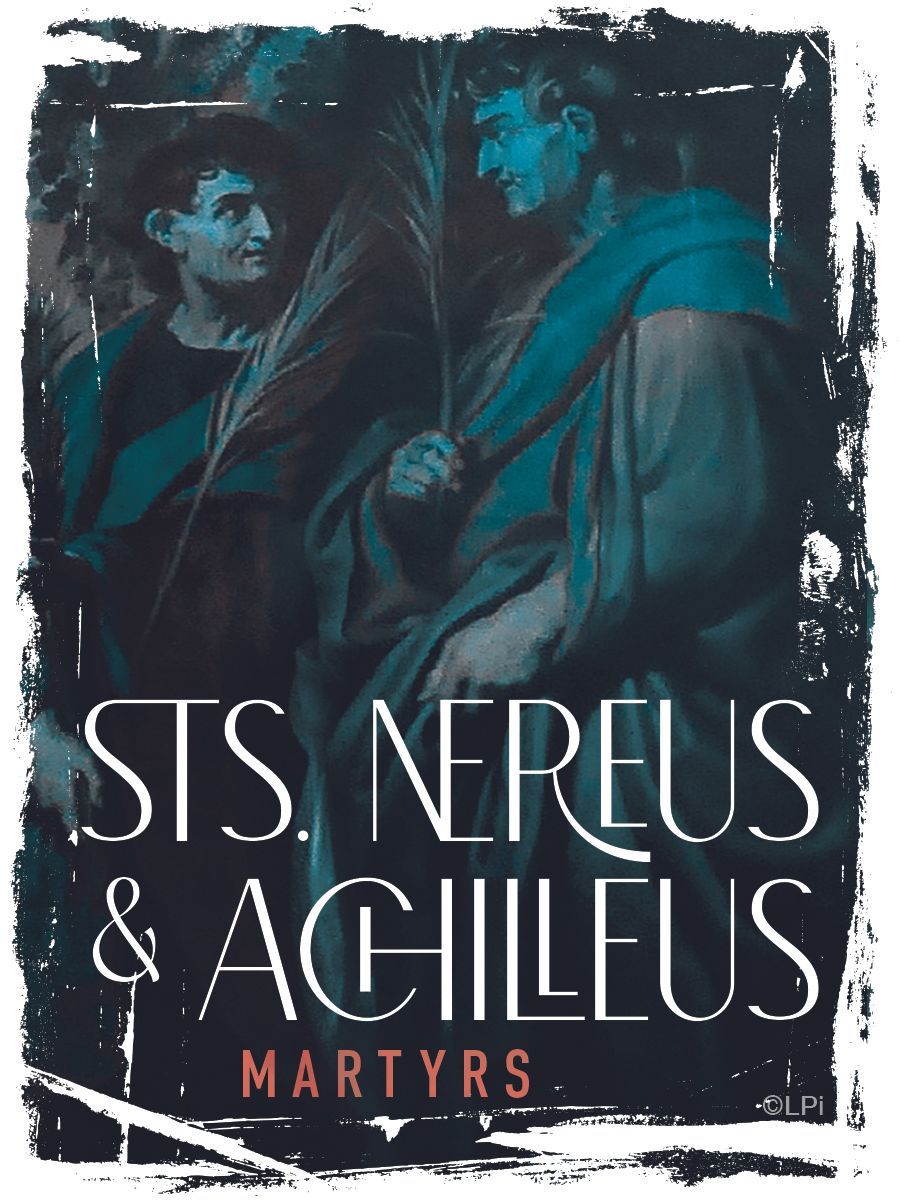
Saint Damien de Veuster of Moloka'I | Feast Day May 10
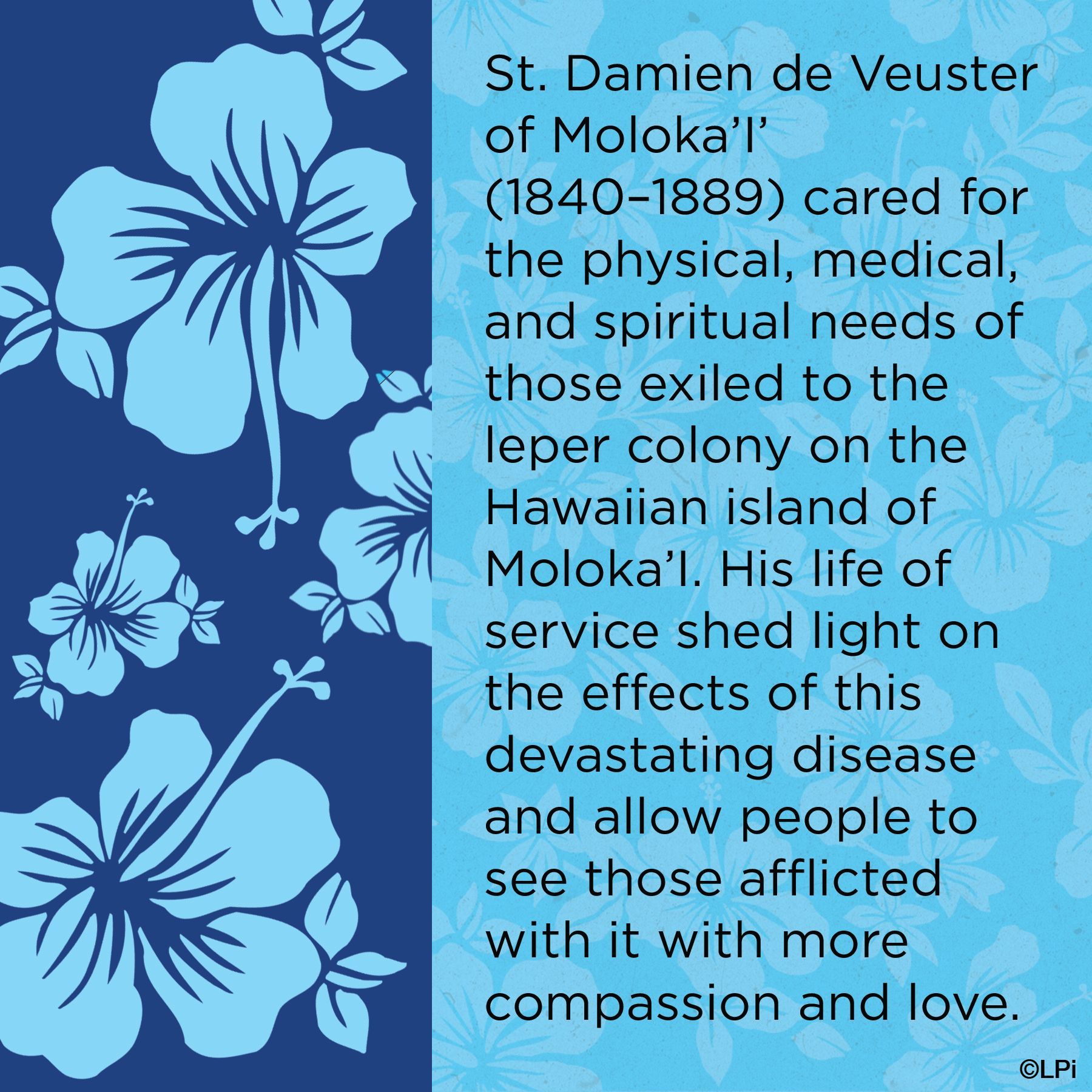
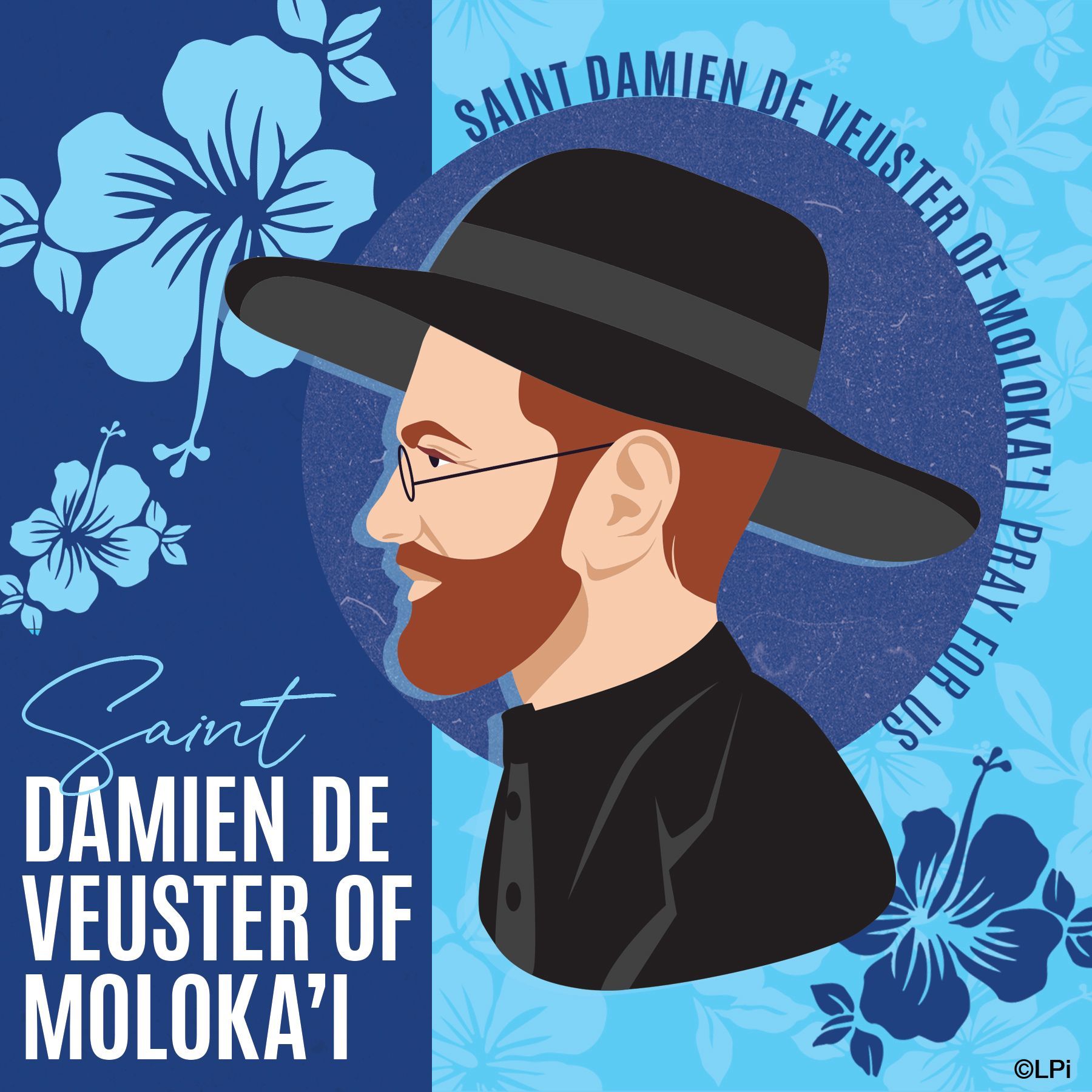
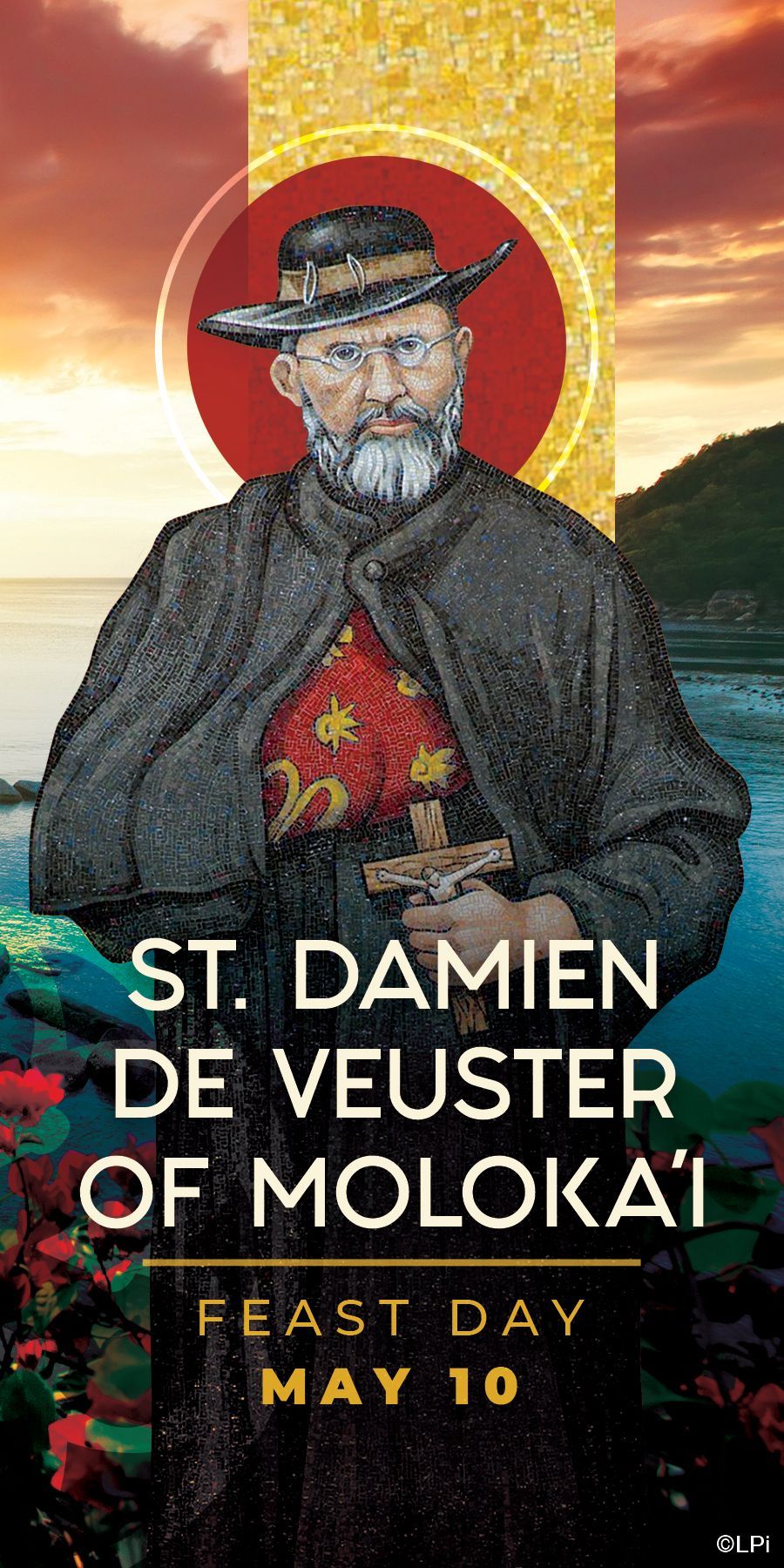
Saint's Philip & James | May 3

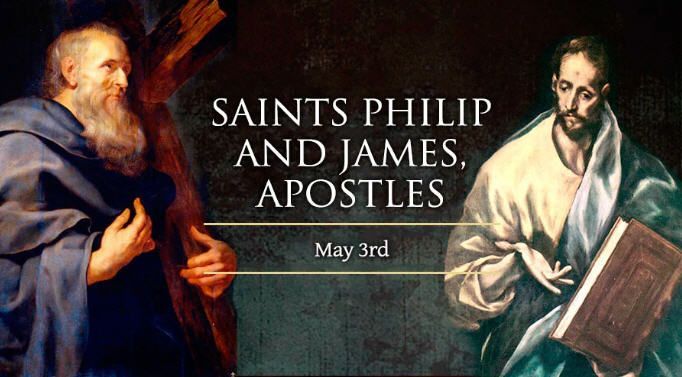
Philip was born in Bethsaida in Galilee and was one of the 12 Apostles that Jesus called. Immediately, Philip began to convert others, finding his friend Nathaniel and telling him that Jesus was the one whom Moses and the other prophets had foretold.
James the Lesser is called “Lesser” because he was younger than the other Apostle by the same name, James the Great. James the less was related in some way to Jesus, and after Jesus’ Ascension into heaven, he became the head of the Church in Jerusalem. He was martyred in the year 62.
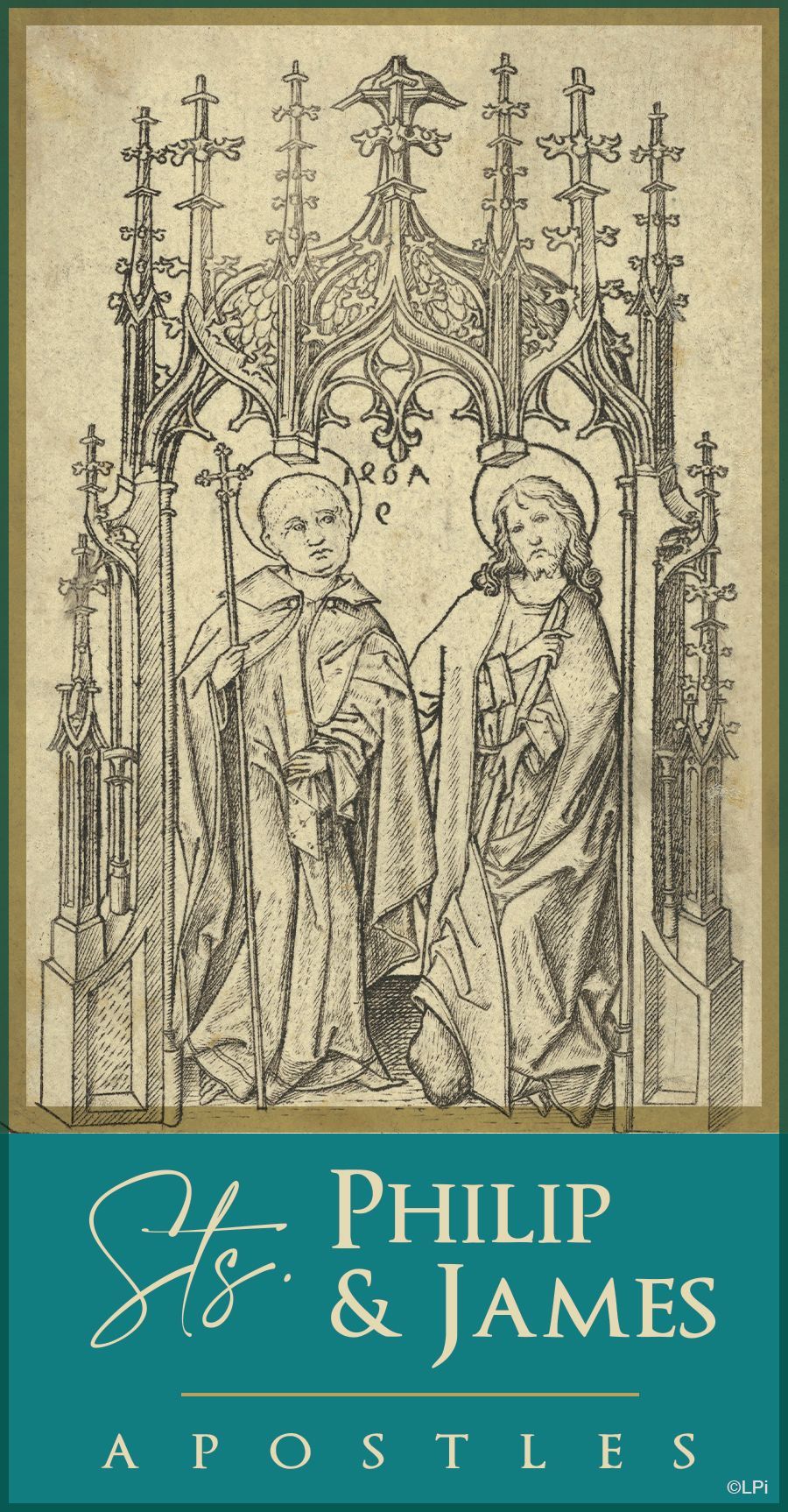
Saint Athanasius | Bishop Doctor of the Church | May 2
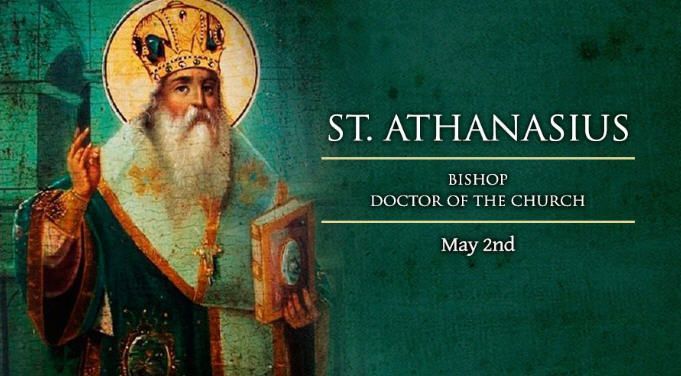
Catholics honor St. Athanasius on May 2. The fourth century bishop is known as “the father of orthodoxy” for his absolute dedication to the doctrine of Christ's divinity.
St. Athanasius was born to Christian parents living in the Egyptian city of Alexandria in 296. His parents took great care to have their son educated, and his talents came to the attention of a local priest who was later canonized as St. Alexander of Alexandria. The priest and future saint tutored Athanasius in theology, and eventually appointed him as an assistant.
Around the age of 19, Athanasius spent a formative period in the Egyptian desert as a disciple of St. Anthony in his monastic community. Returning to Alexandria, he was ordained a deacon in 319, and resumed his assistance to Alexander who had become a bishop. The Catholic Church, newly recognized by the Roman Empire, was already encountering a new series of dangers from within.
The most serious threat to the fourth-century Church came from a priest named Arius, who taught that Jesus could not have existed eternally as God prior to his historical incarnation as a man. According to Arius, Jesus was the highest of created beings, and could be considered “divine” only by analogy. Arians professed a belief in Jesus' “divinity,” but meant only that he was God's greatest creature.
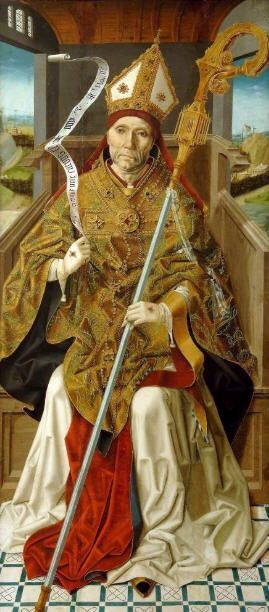
Saint Joseph The Worker | May 1
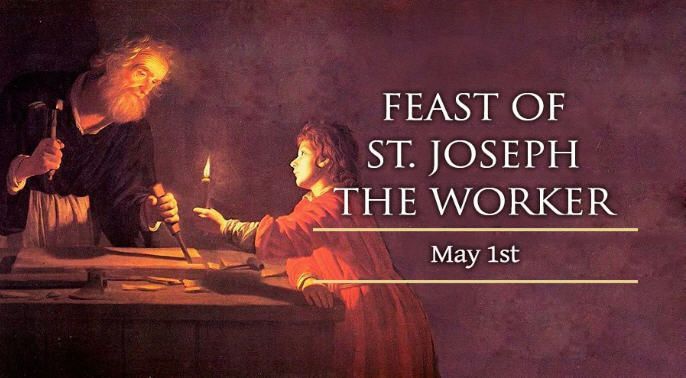
St. Joseph has two feast days on the liturgical calendar. The first is March 19—Joseph, the Husband of Mary. The second is May 1—Joseph, the Worker.
“Saint Joseph is a man of great spirit. He is great in faith, not because he speaks his own words, but above all because he listens to the words of the Living God. He listens in silence. And his heart ceaselessly perseveres in the readiness to accept the Truth contained in the word of the Living God,” Pope John Paul II had once said.
There is very little about the life of Joseph in Scripture but still, we know that he was the chaste husband of Mary, the foster father of Jesus, a carpenter and a man who was not wealthy. We also know that he came from the royal lineage of King David.
We can see from his actions in scripture that Joseph was a compassionate man, and obedient to the will of God. He also loved Mary and Jesus and wanted to protect and provide for them.
Since Joseph does not appear in Jesus' public life, at his death, or resurrection, many historians believe Joseph had probably died before Jesus entered public ministry.
Joseph is the patron of many things, including the universal Church, fathers, the dying and social justice.
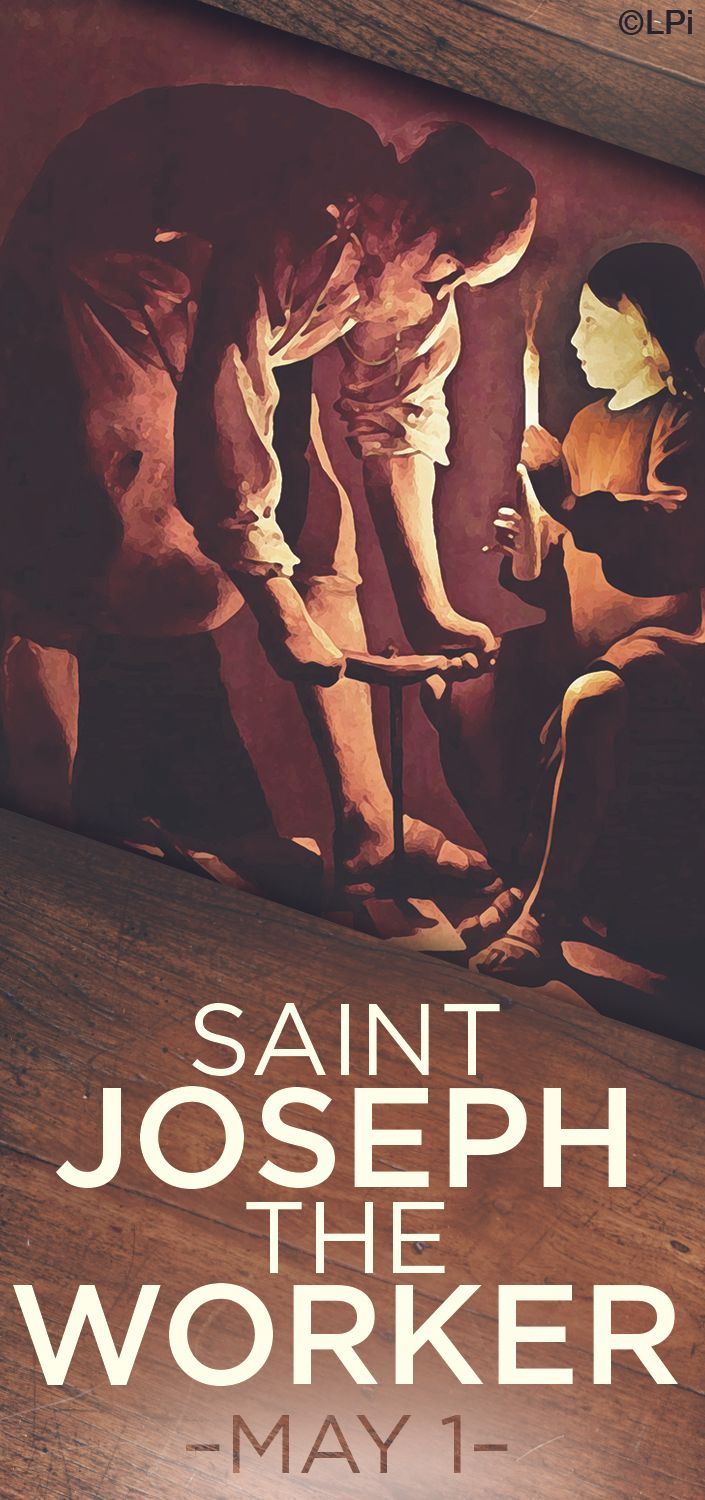
Saint Pius V | Pope | April 30
St. Pius V was born Michele Ghislieri in 1504 to poor parents of noble lineage at Bosco, near Alexandria, Lombardy on January 17, 1504. He worked as a shepherd until the age of 14 when he encountered two Dominicans who recognized his intelligence and virtue. He joined the Dominicans and was ordained a priest at 24. He taught philosophy and theology for 16 years during which he was elected prior of many houses. He was known for his austere penances, his long hours of prayer and fasting, and the holiness
of his speech.
He was elected Bishop of Sutri in 1556, and served as an inquisitor in Milan and Lombardi, and then as inquisitor general of the Church and a cardinal in 1557. He was known in this capacity as an able, yet unflinching man who rigorously fought heresy and corruption wherever he encountered it.
He was elected Pope on January 7, 1566, with the influential backing of his friend St. Charles Borromeo, and took the name
Pius V. He immediately put into action his vast program of reform by getting rid of many of the extravagant luxuries then prevalent
in his court. He gave the money usually invested in these luxuries to the poor whom he personally cared for, washing their feet, consoling those near death, and tending to lepers and the very sick. He spent long hours before the Blessed Sacrament despite
his heavy workload.
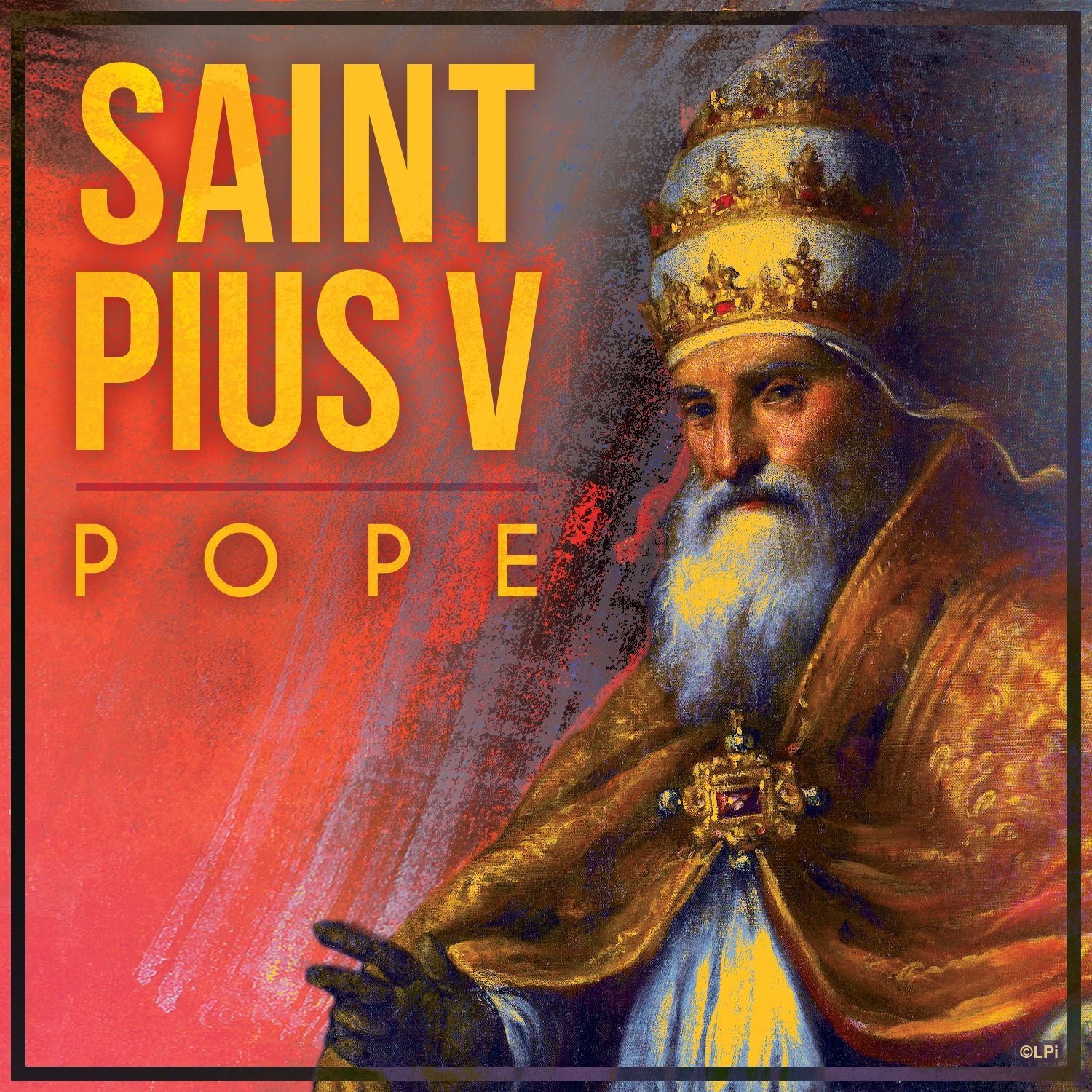
Saint Catherine of Siena | April 29
On the feast of St. Catherine of Siena in 2021, Pope Francis expressed his hope that the “great female figure of faith” would continue to inspire a more joyful and fervent witness.
“The Holy Father hopes that, especially in the context of the 560th anniversary of the canonization of the Sienese saint, the example of such a generous disciple of Christ will foster in all an ever more joyful and fervent witness to faith and charity to promote the civilization of love,” Cardinal Pietro Parolin wrote in a telegram on behalf of the pope, published April 29, 2021.
The Vatican secretary of state sent the telegram to Cardinal Augusto Paolo Lojudice, the archbishop of Siena-Colle di Val d’Elsa-Montalcino, expressing the pope’s good wishes to Catholics in the archdiocese during their three-day celebration of their hometown saint.
St. Catherine of Siena is a doctor of the Church and co-patron of Europe. She played a pivotal role in ending the Avignon exile of the successors of Peter in the 14th century.
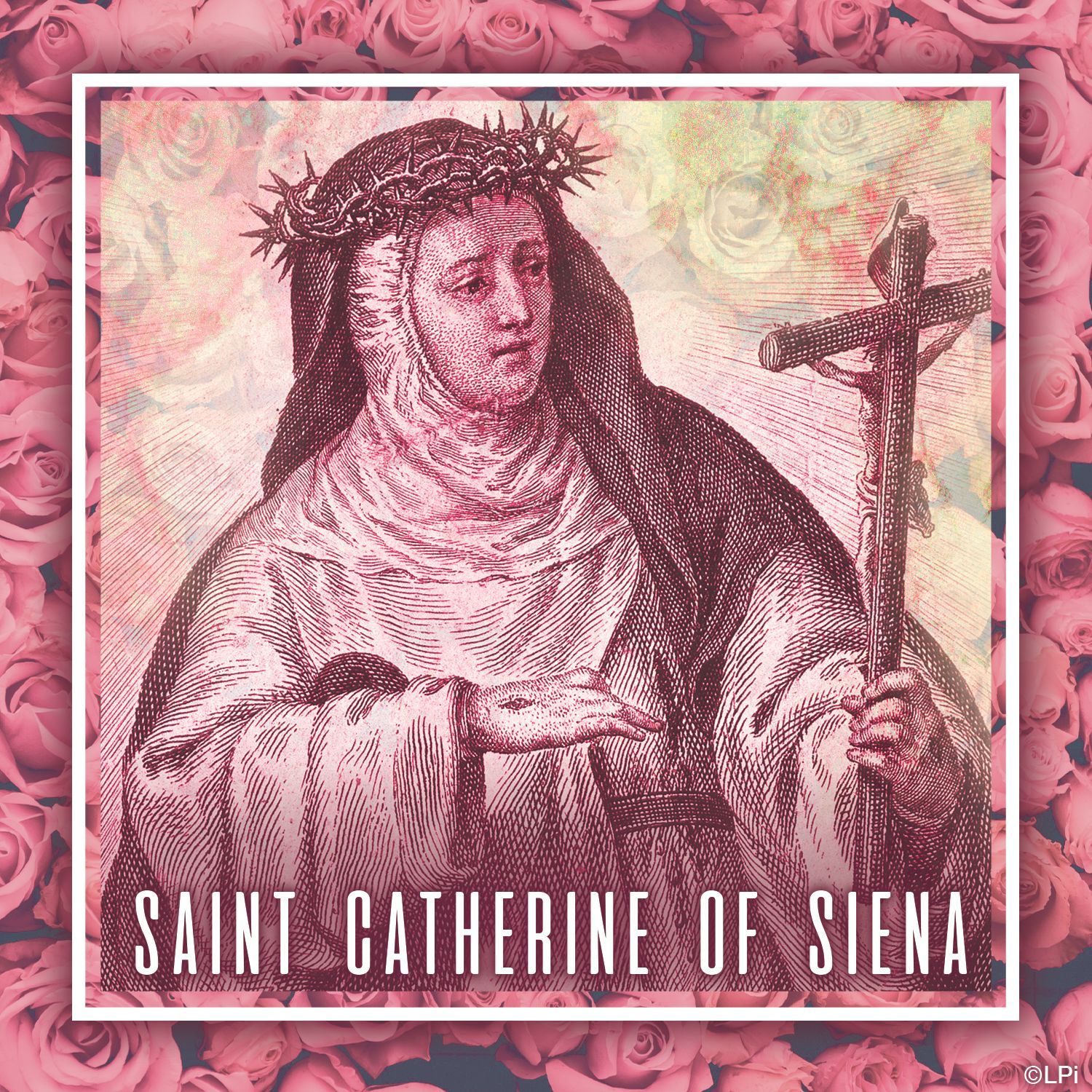
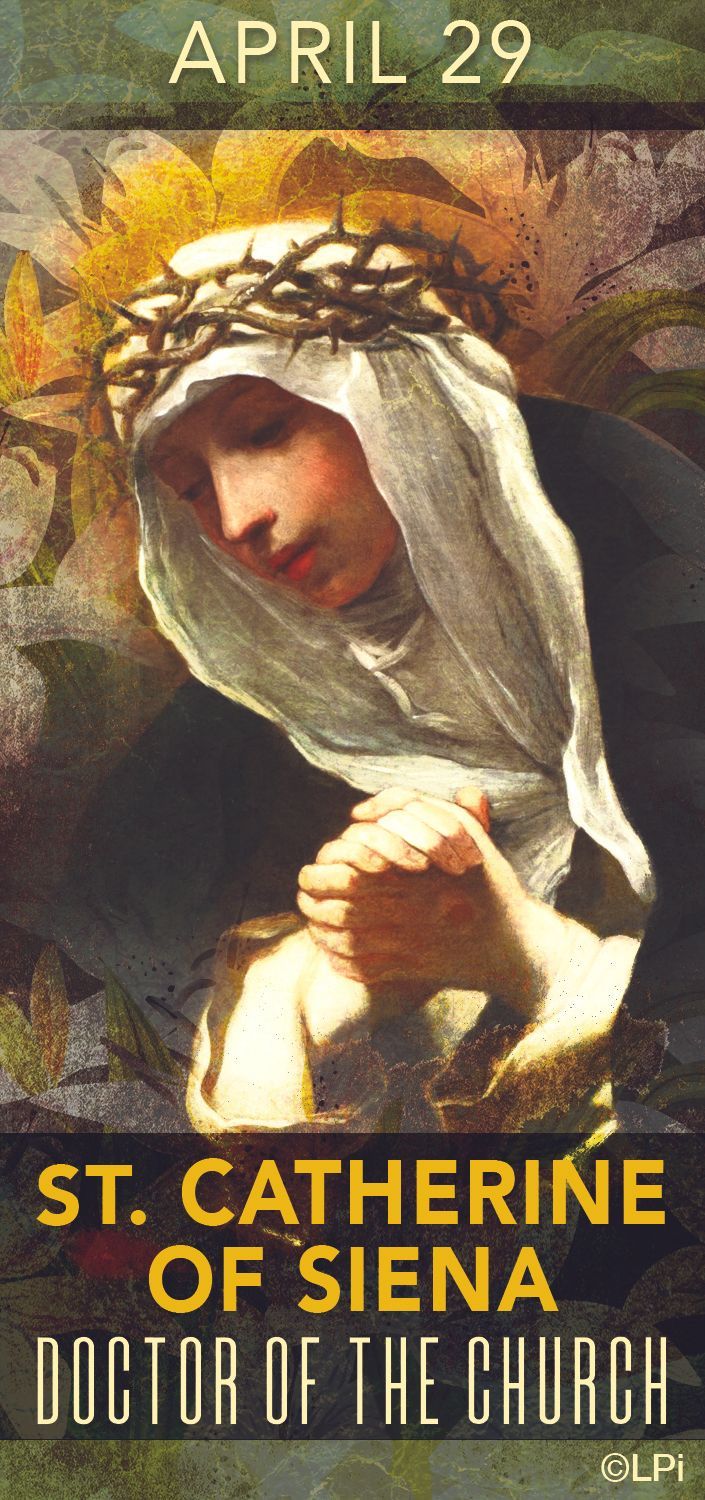
Saint Peter Chanel
Priest & Martyr
Feast Day April 28th
In St. Peter Chanel, Priest and Martyr (Feast day - April 28) The protomartyr of the South Seas, St. Peter Chanel was born in 1803 at Clet in the diocese of Belley, France. His intelligence and simple piety brought him to the attention of the local priest, Father Trompier, who saw to his elementary education. Entering the diocesan Seminary, Peter won the affection and the esteem of both students and professors. After his ordination he found himself in a rundown country parish and completely revitalized it in the three year span that he remained there. However, his mind was set on missionary work; so, in 1831, he joined the newly formed Society of Mary (Marists) which concentrated on missionary work at home and abroad. To his dismay, he was appointed to teach at the seminary at Belley and remained there for the next five years, diligently performing his duties.
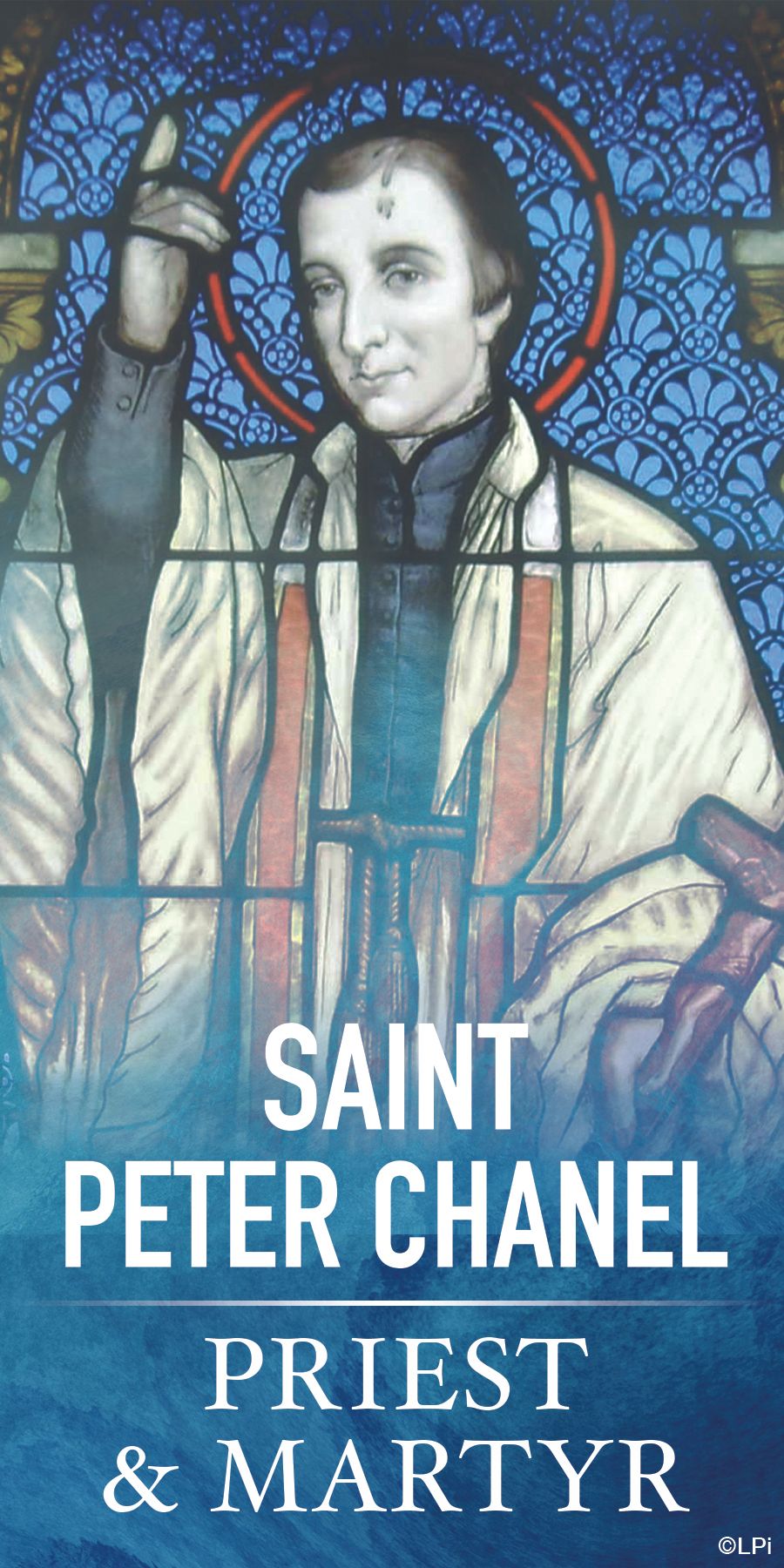
Saint Stanislaus | April 11
Stanislaus was born of noble parents on July 26th at Szczepanow near Cracow, Poland. He was educated at Gnesen and was ordained there. He was given a canonry by Bishop Lampert Zula of Cracow, who made him his preacher, and soon he became noted for his preaching. He became a much sought after spiritual adviser. He was successful in his reforming efforts, and in 1072 was named Bishop of Cracow. He incurred the enmity of King Boleslaus the Bold when he denounced the King's cruelties and injustices and especially his kidnapping of the beautiful wife of a nobleman. When Stanislaus excommunicated the King and stopped services at the Cathedral when Boleslaus entered, Boleslaus himself killed Stanislaus while the Bishop was saying Mass in a chapel outside the city on April 11. Stanislaus has long been the symbol of Polish nationhood. He was canonized by Pope Innocent IV in 1253 and is the principle patron of Cracow. His feast day is April 11th.
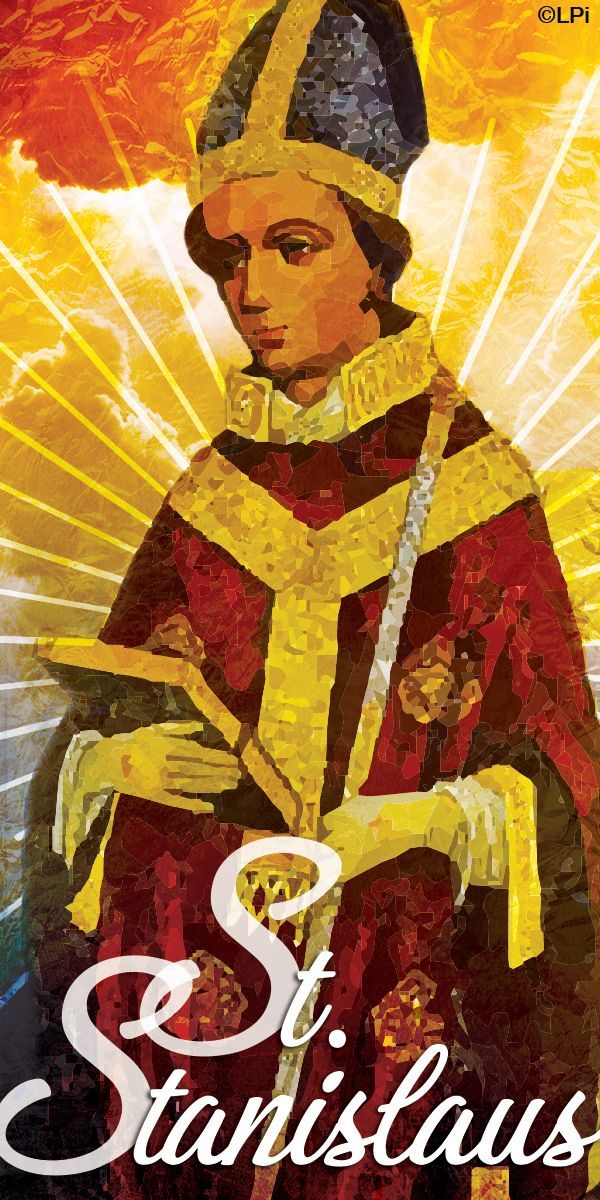
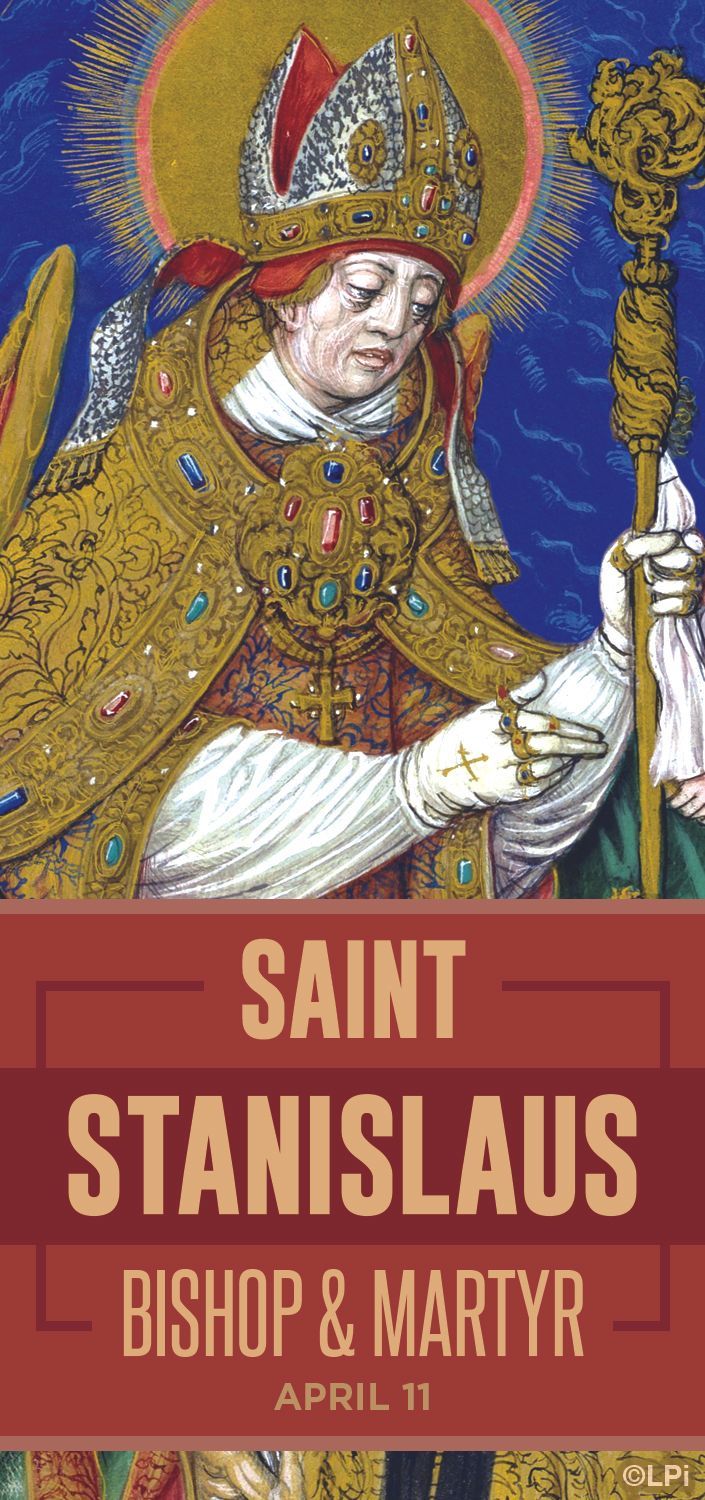
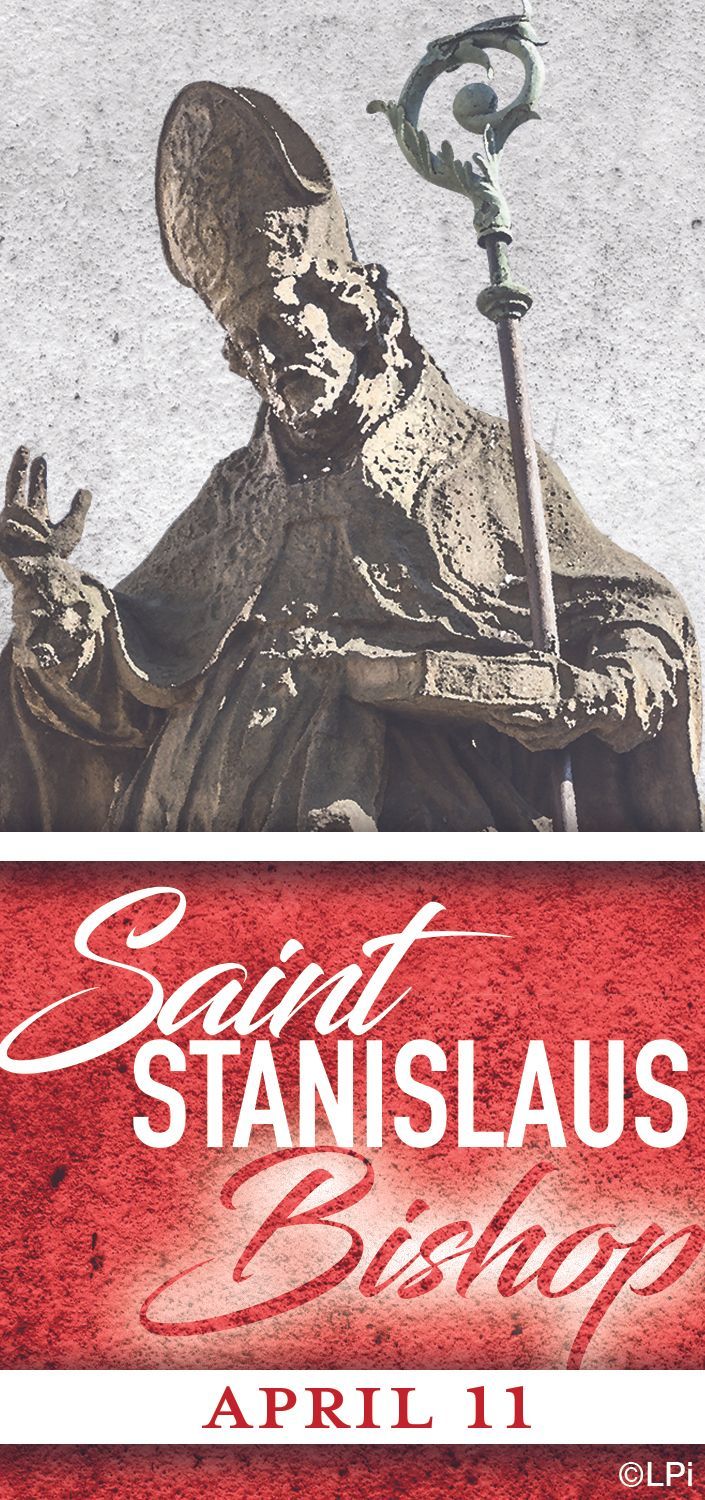

Saint Vincent Ferrer | April 5
Sometimes it can be easy to idealize past ages in the Church. But a look at history shows that the Bride of Christ has never had it easy! In the days of St. Vincent Ferrer, two, then three men claimed to be the legitimate pope. Vincent found himself swept up in the drama. One of his old friends was elected a false pope. While initially supportive, Vincent became disillusioned by the division in the Church. He spent 20 years going back to the basics. He avoided Church politics and traveled Europe as a missionary preacher. Eventually, St. Vincent publicly denounced the man who had once been his friend. Sometimes drama, scandal, and disappointment in the Church can drive us away from our faith. Rather than leave, Vincent clung to Christ. During tumultuous times in the Church, St. Vincent Ferrer, pray for us!
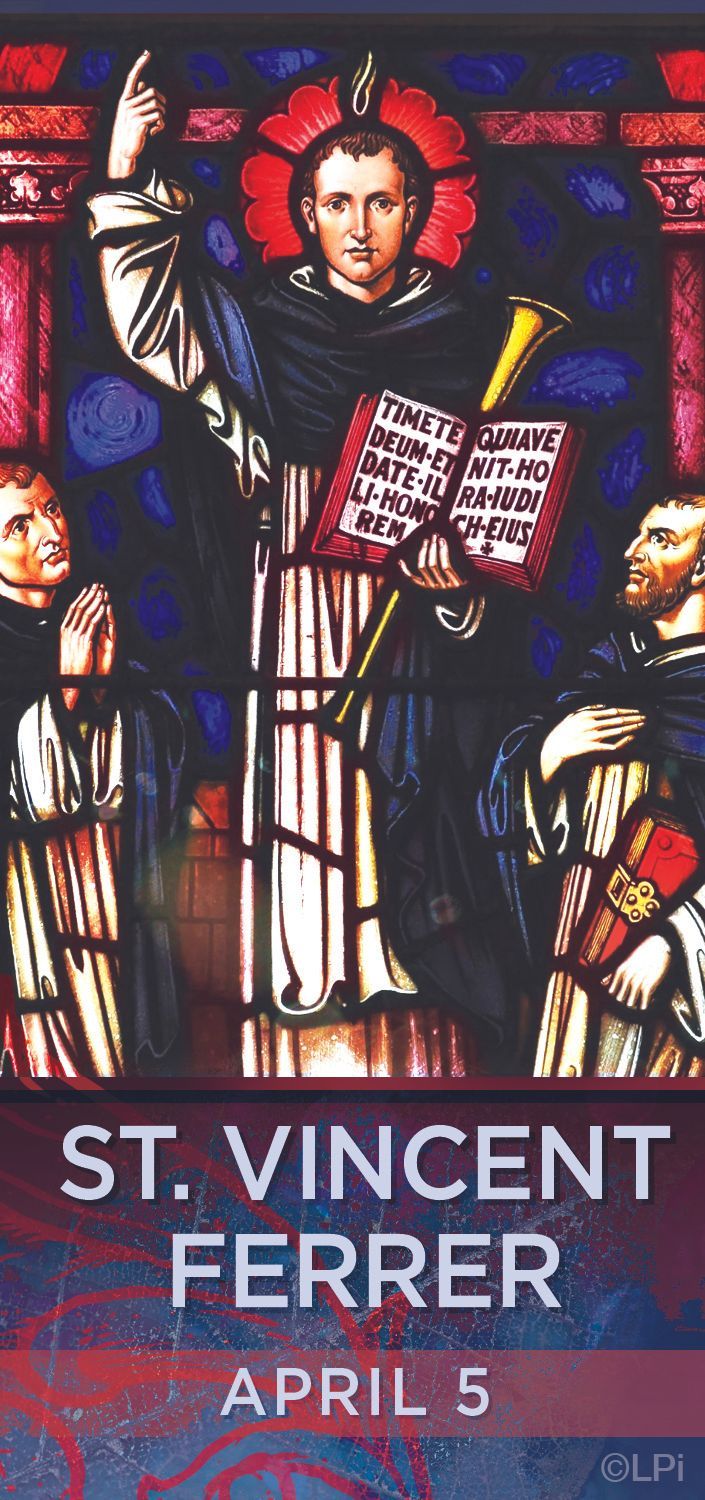
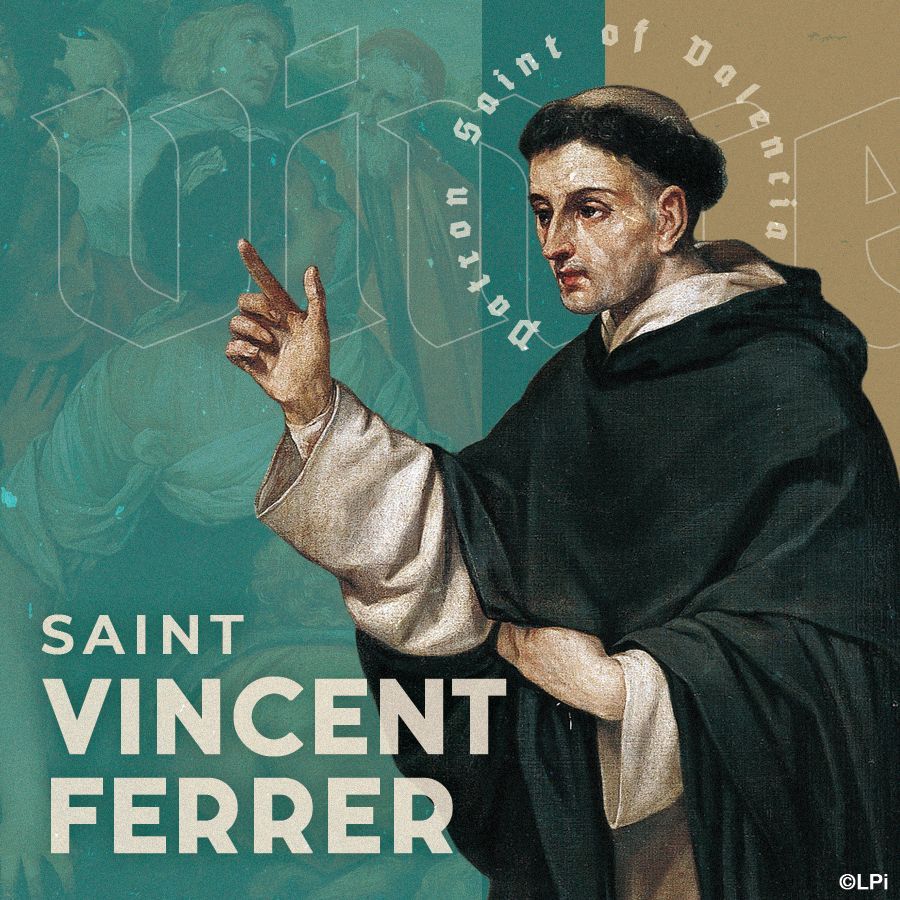
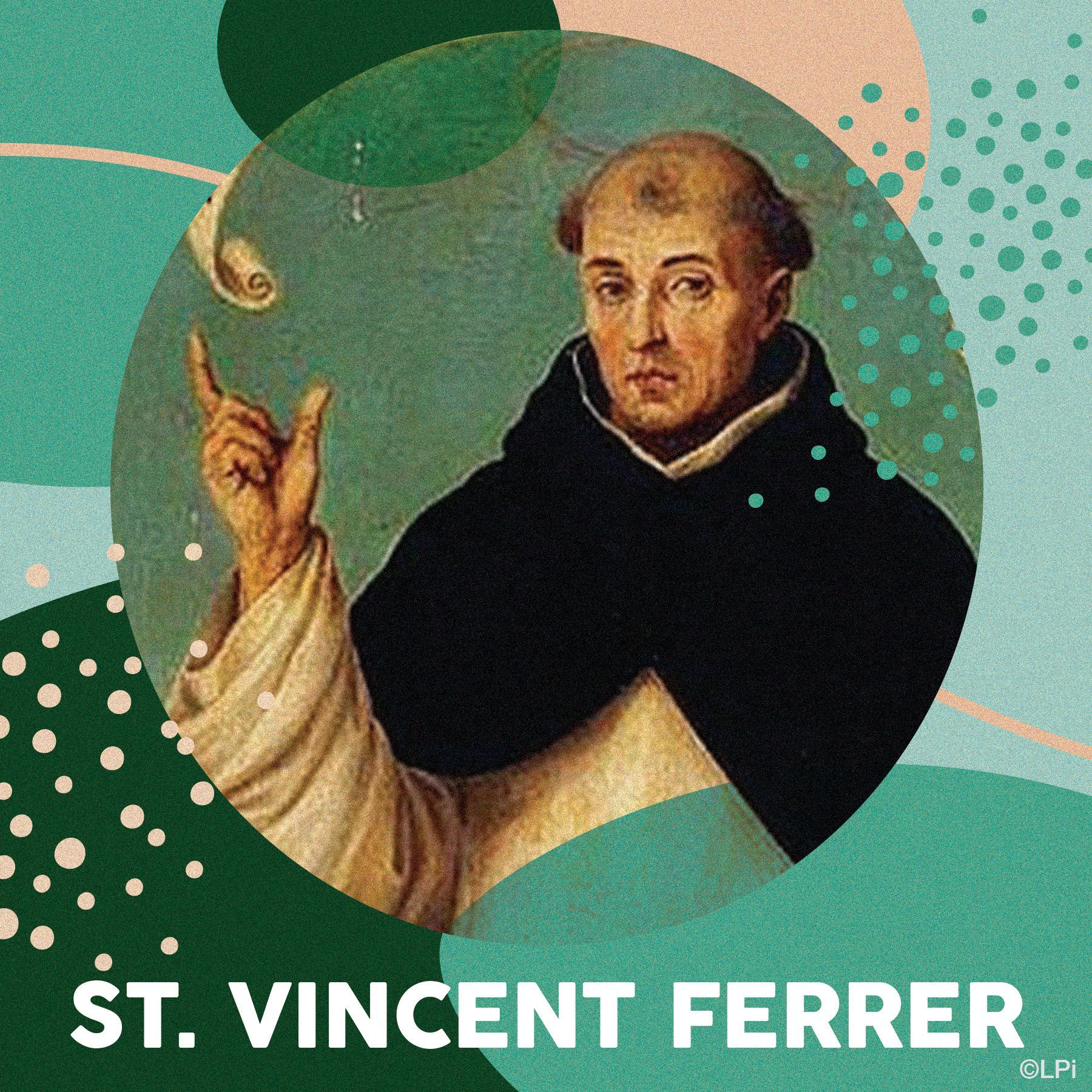
Saint Isidore | April 4
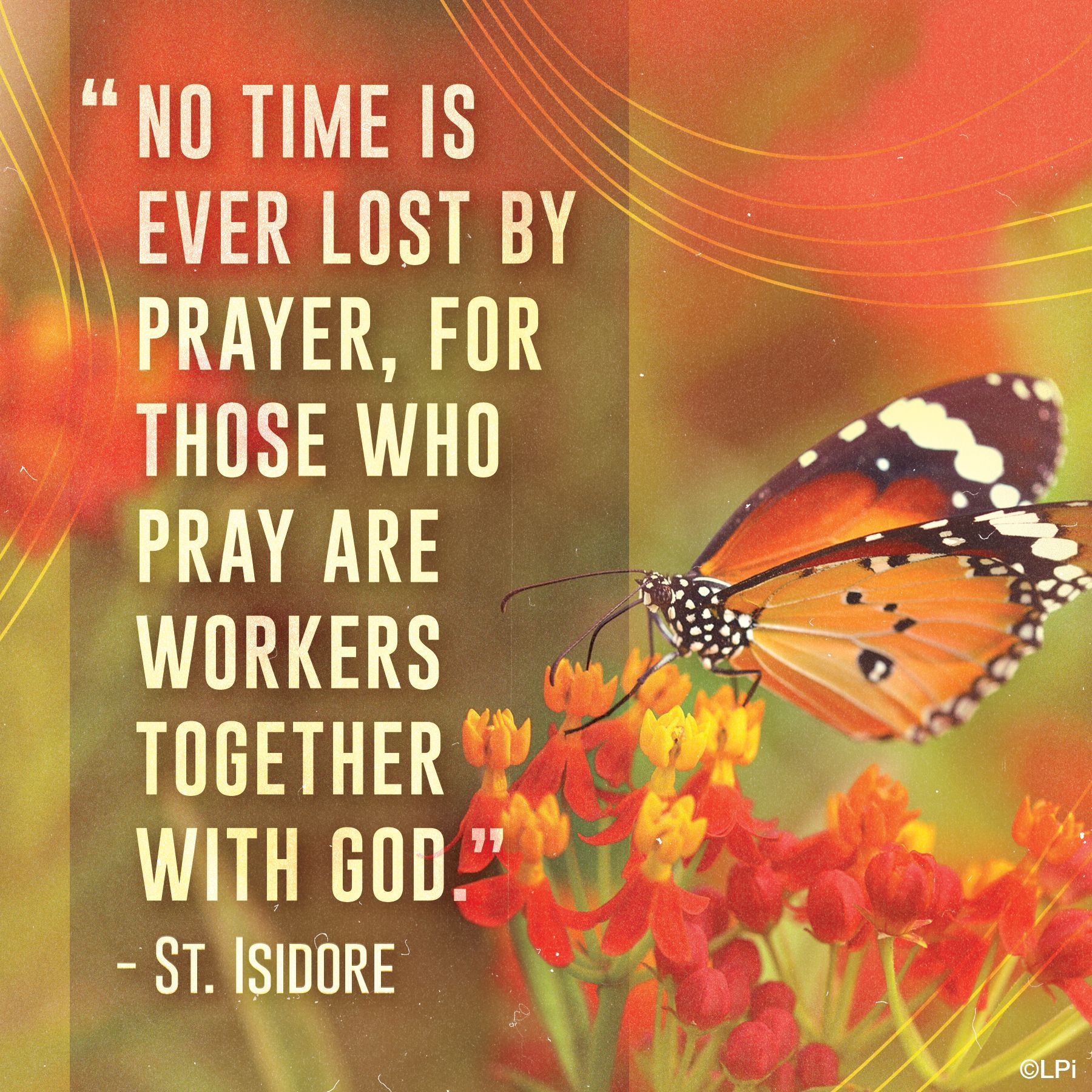
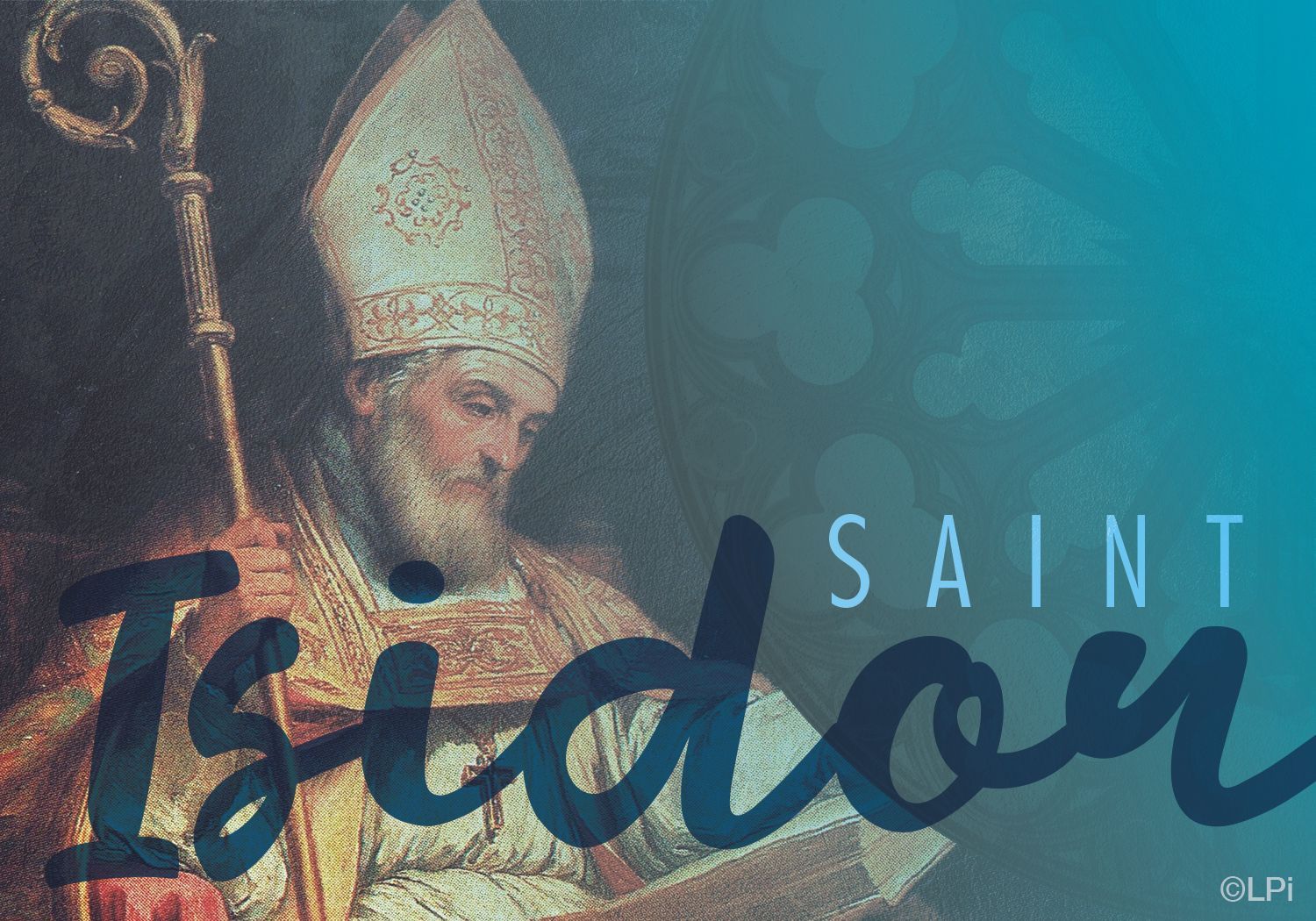
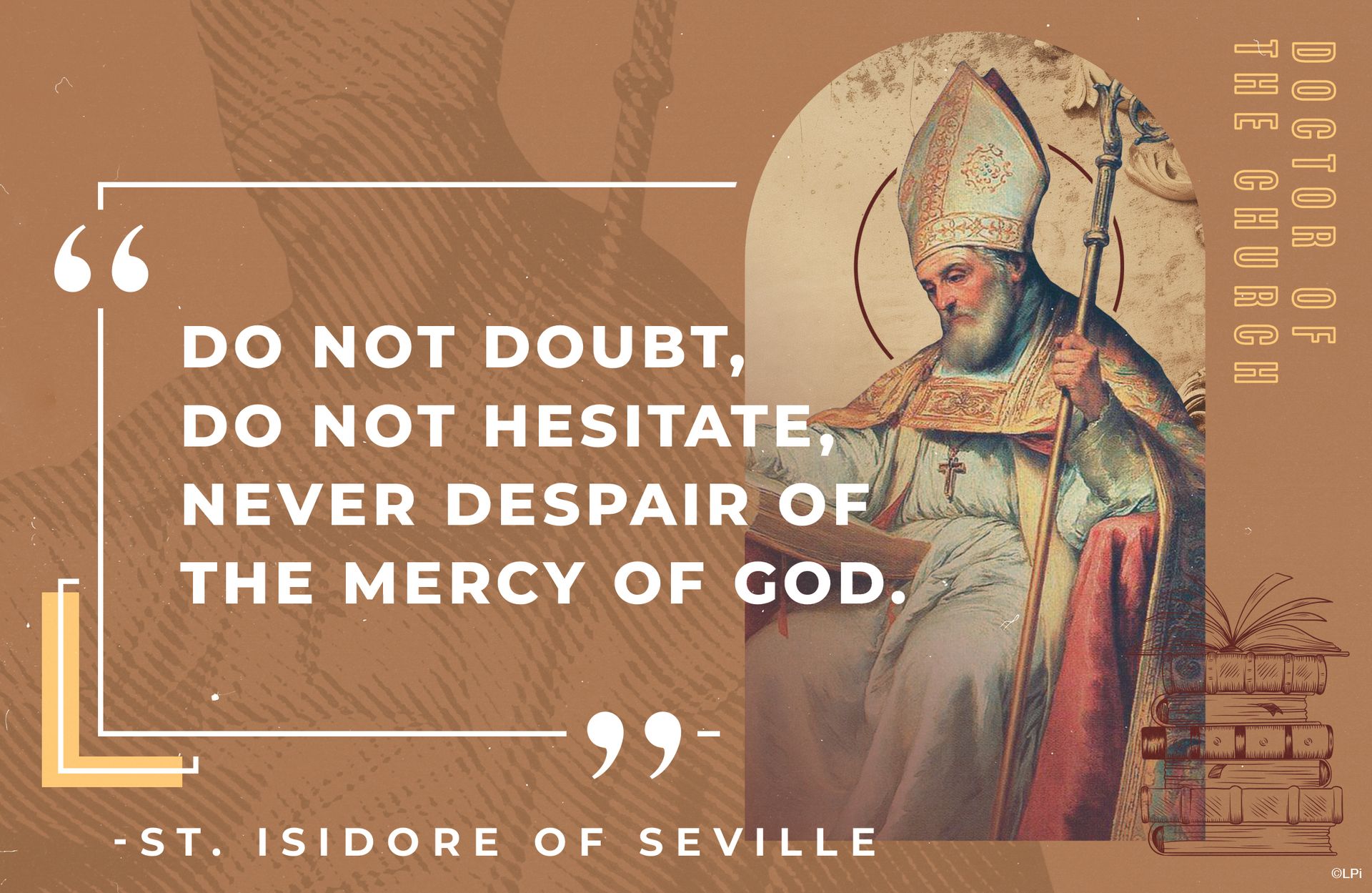
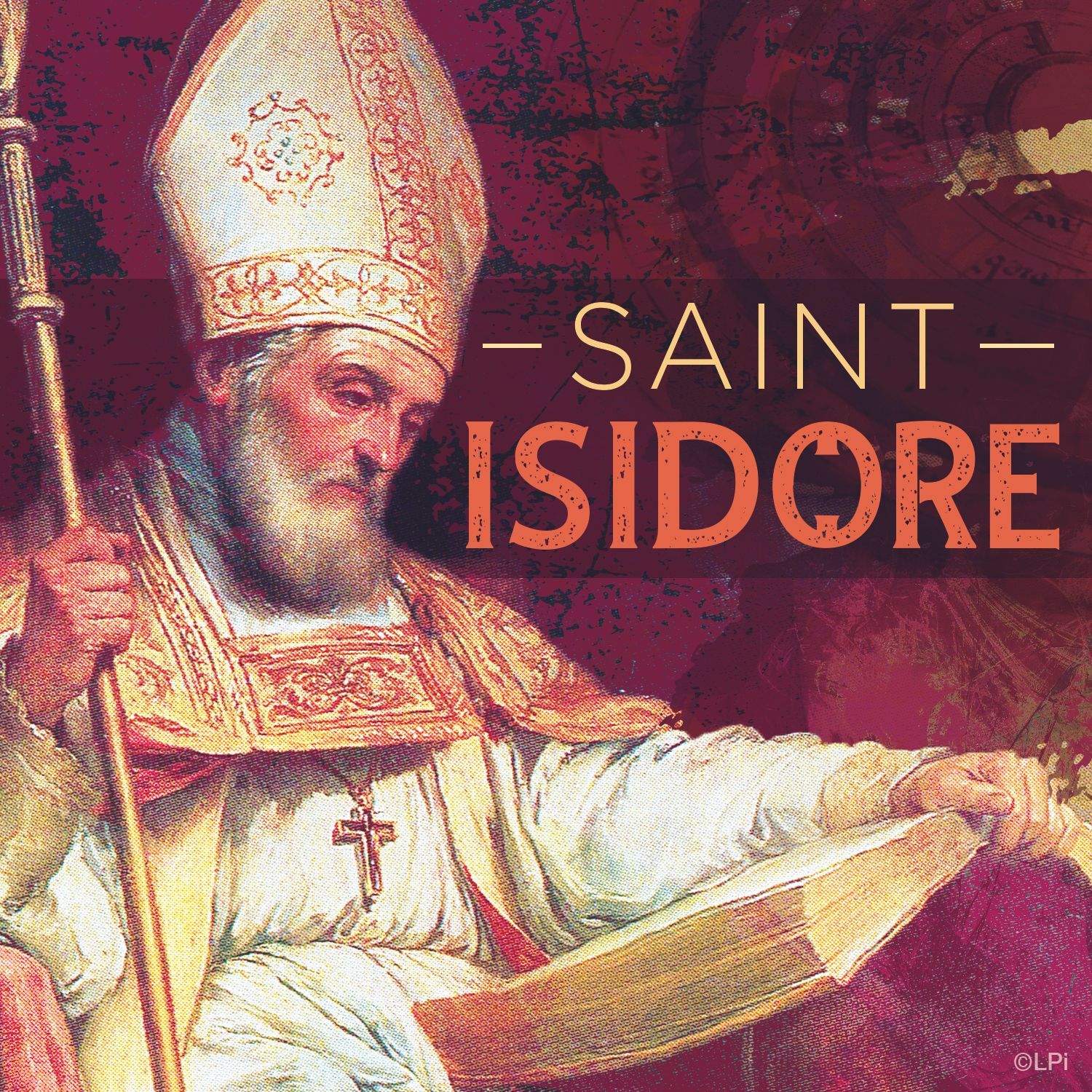
Saint Frances of Paola | April 2
Francis was born at Paola, Italy and was educated at the Franciscan friary of San Marco there, and when fifteen became a hermit near Paola. In 1436, he and two companions began a community that is considered the foundation of the Minim Friars. He built a monastery where he had led his eremitical life some fifteen years later and set a Rule for his followers emphasizing penance, charity, and humility, and added to the three monastic vows, one of fasting and abstinence from meat; he also wrote a rule for tertiaries and nuns.
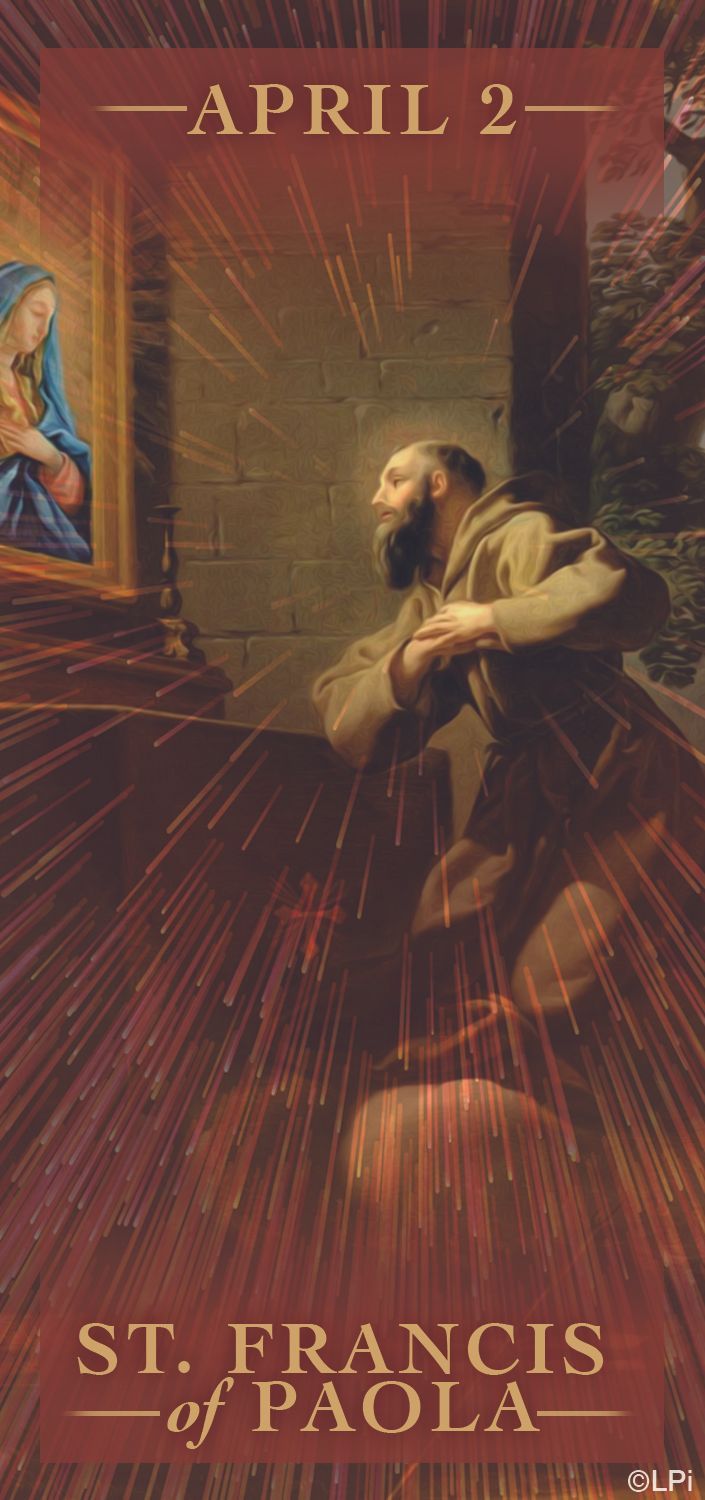
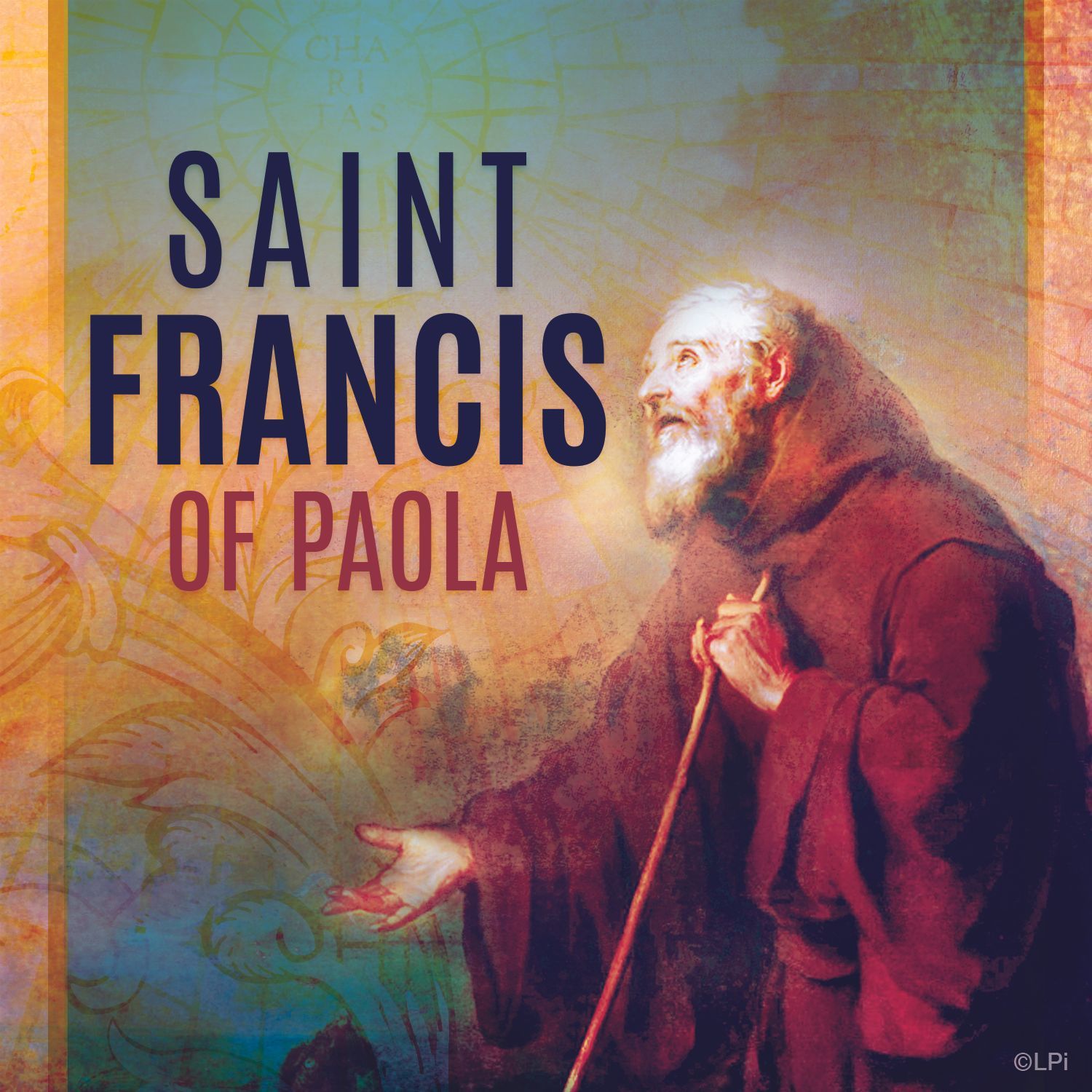
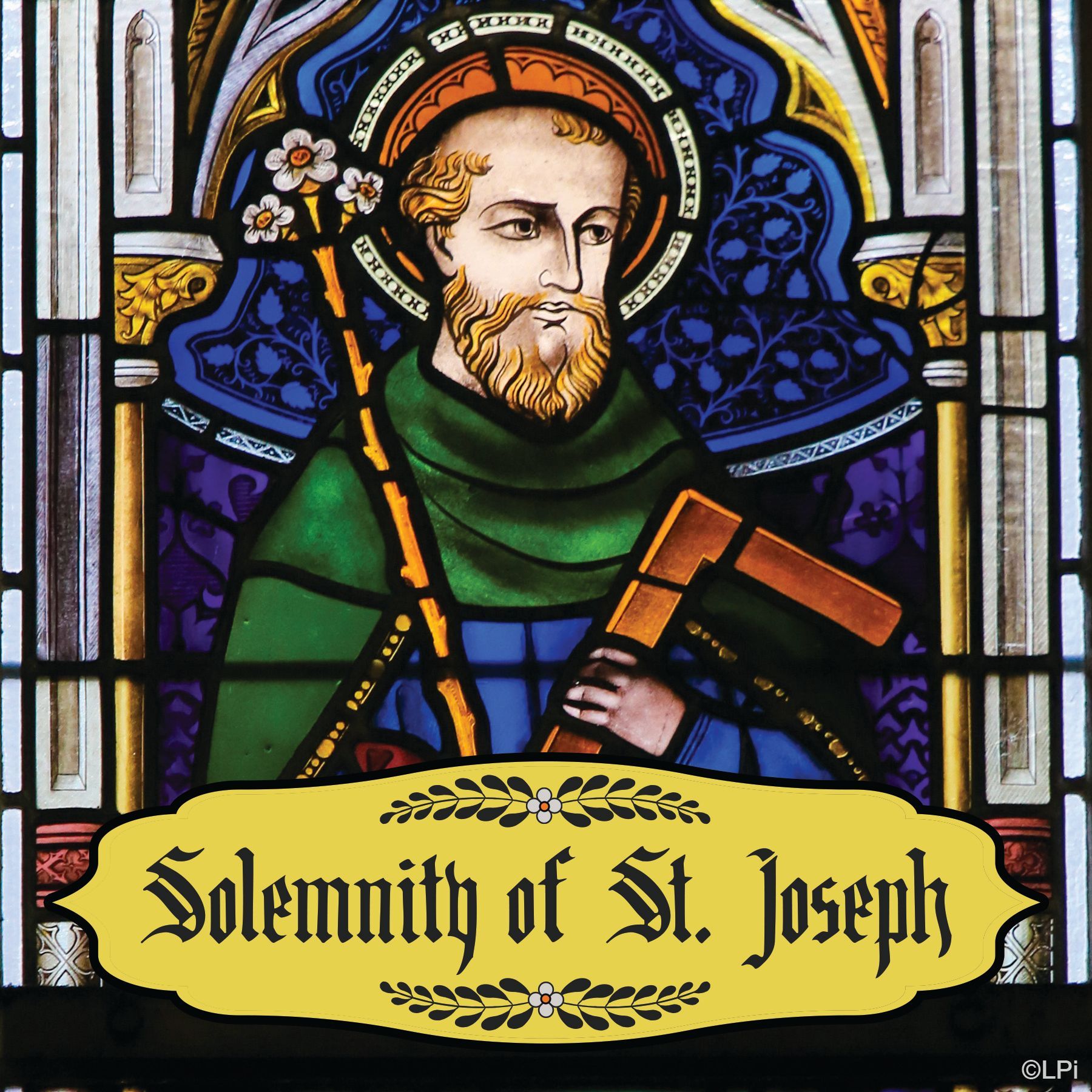
Saint Joseph's Day, also called the Feast of Saint Joseph or the Solemnity of Saint Joseph, is in Western Christianity the principal feast day of Saint Joseph, husband of the Virgin Mary and legal father of Jesus Christ, celebrated on 19 March. It has the rank of a solemnity in the Catholic Church.
It is a feast or commemoration in many places. Saint Joseph's Day is the Patronal Feast day for Poland as well as for Canada, persons named Joseph, Josephine, etc., for religious institutes, schools and parishes bearing his name, and for carpenters. It is also Father's Day in some Catholic countries, mainly Spain, Portugal, and Italy. It is not a holy day of obligation for Catholics in the United States.
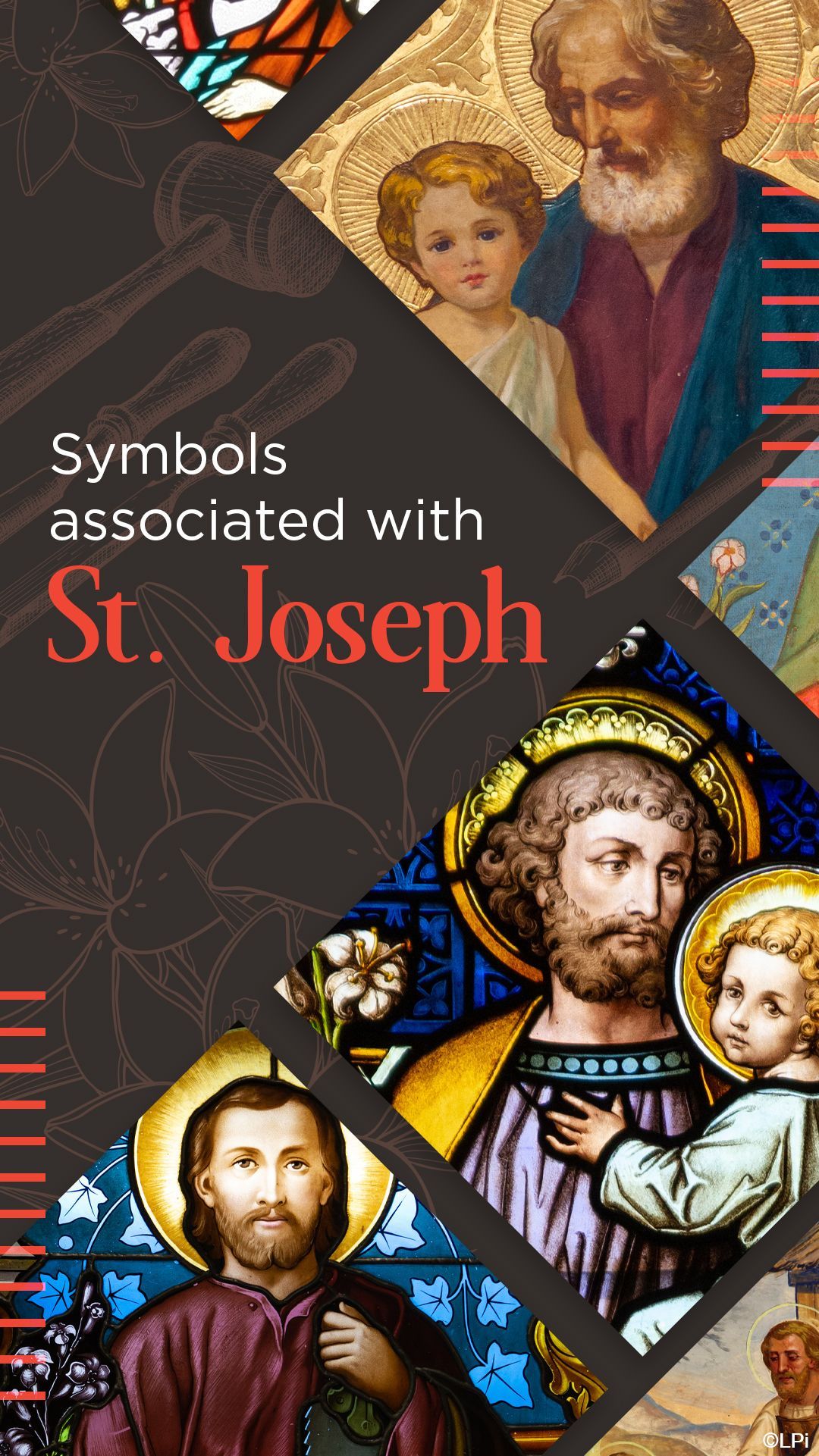
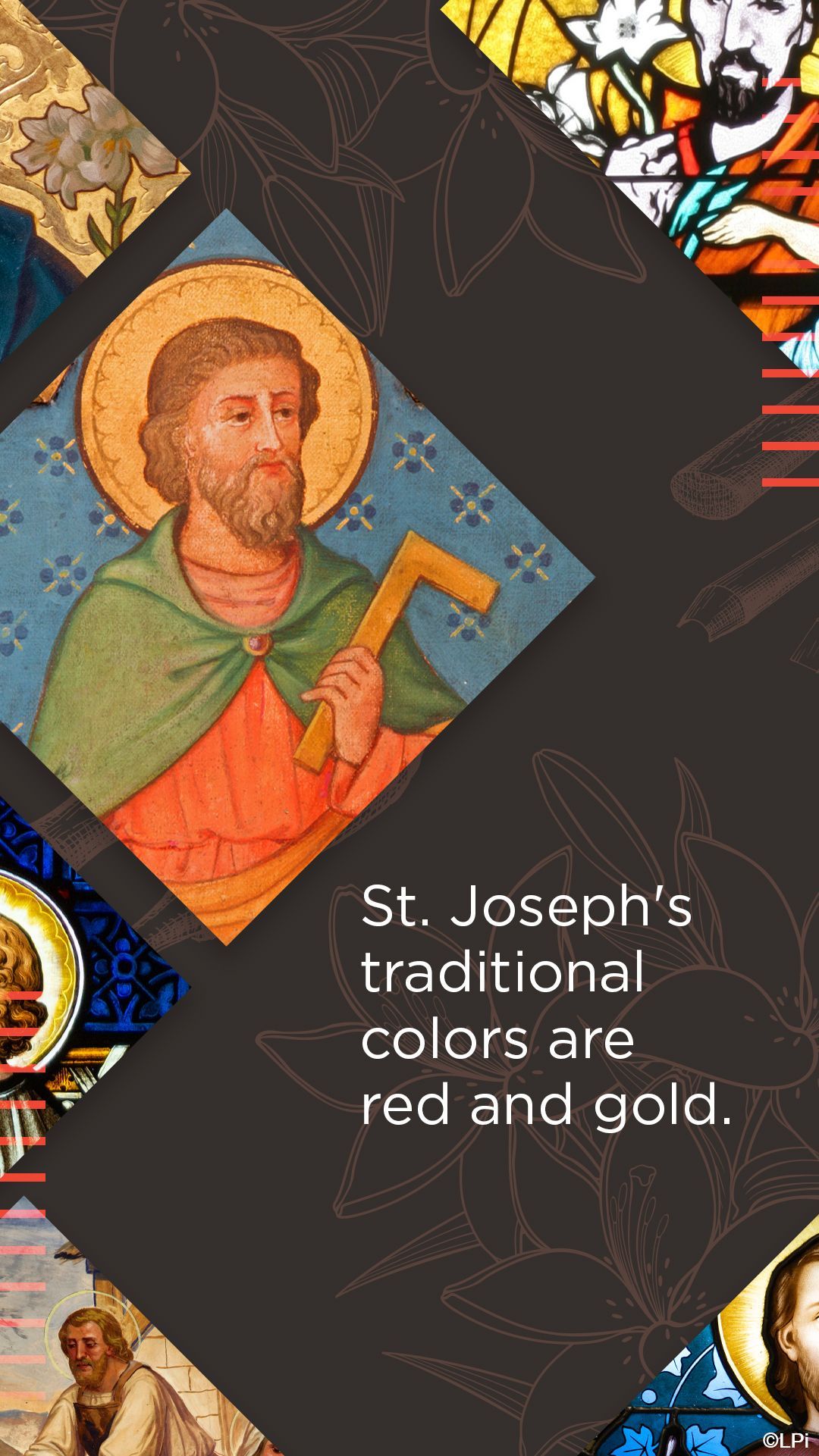
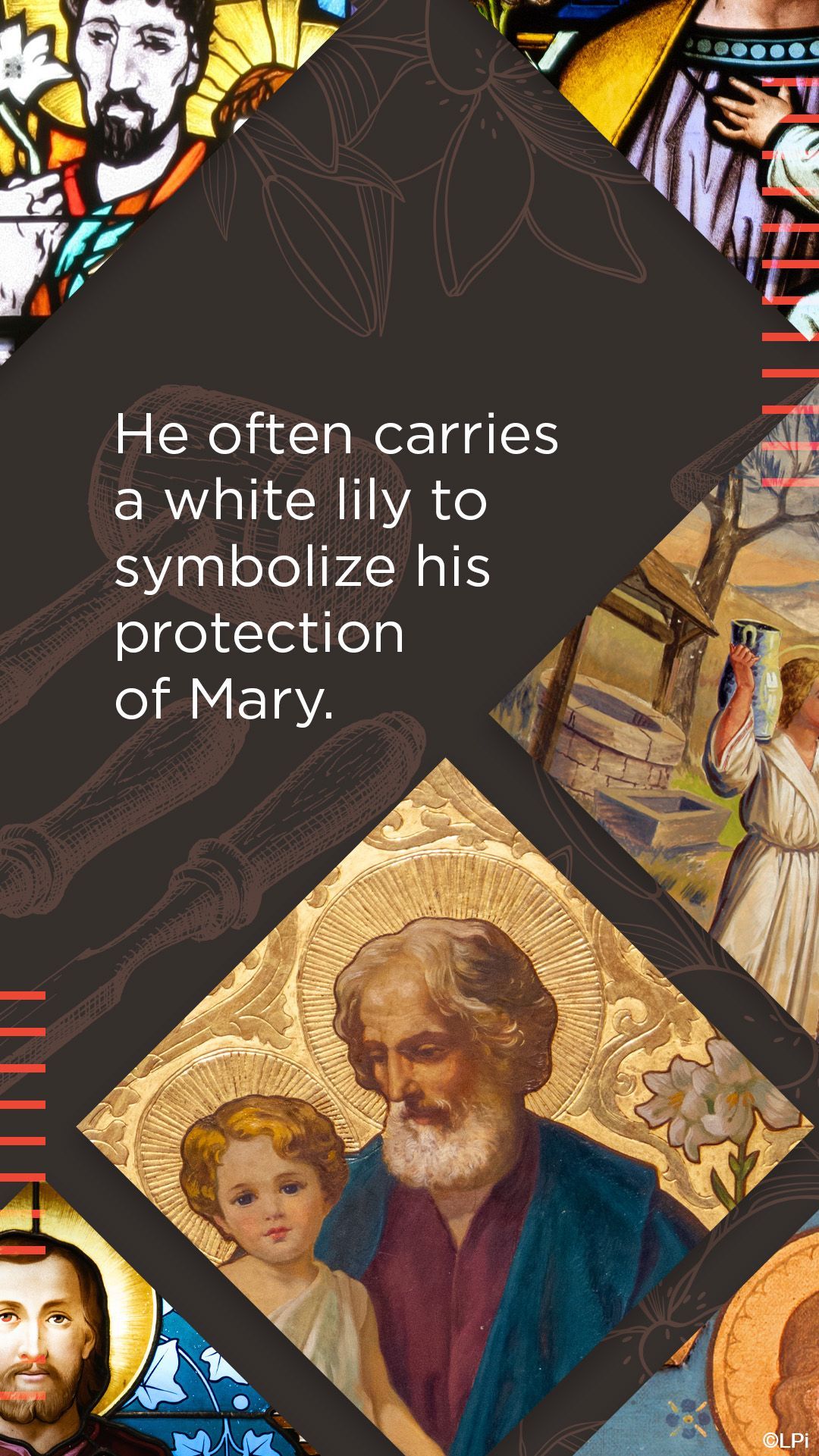
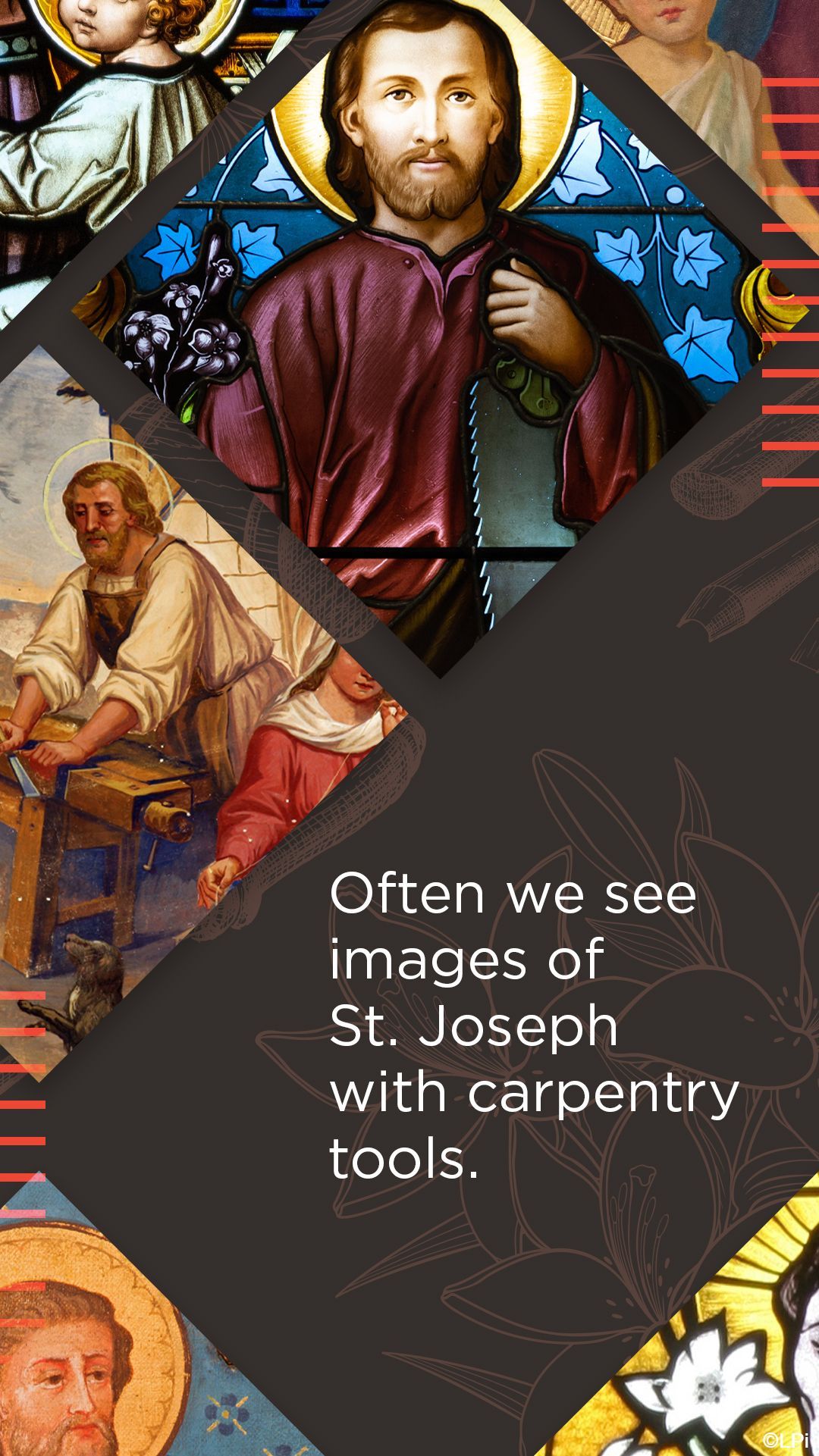
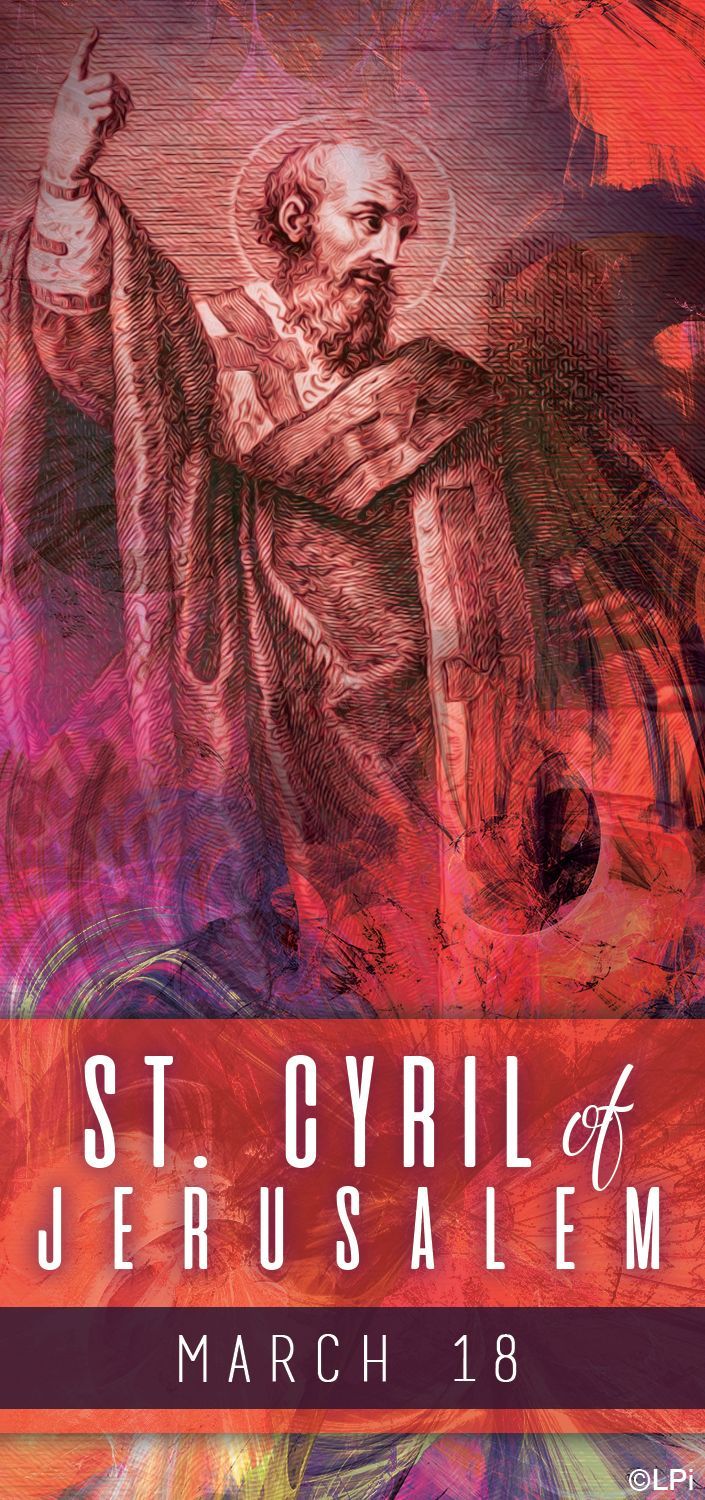
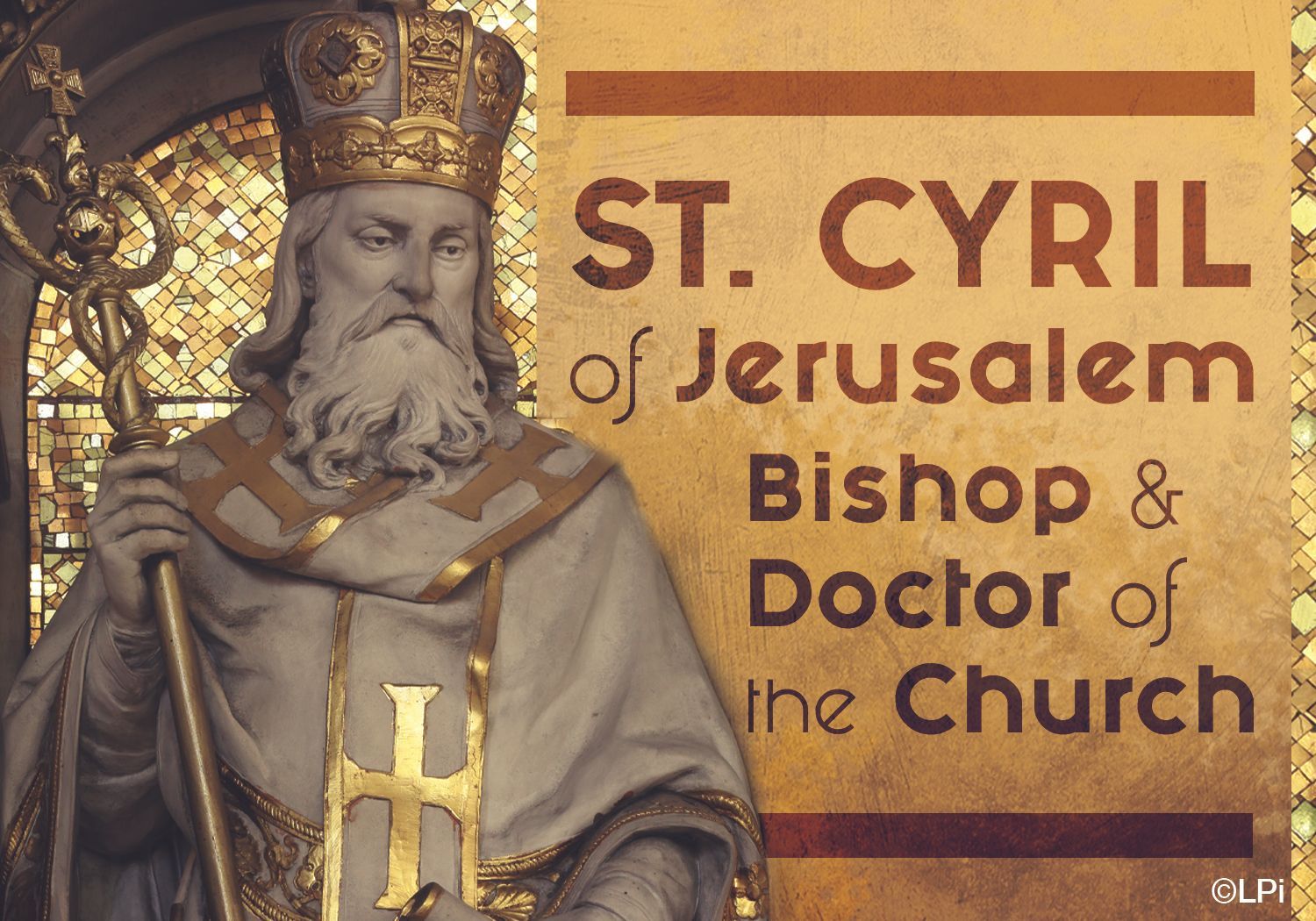
St. Cyril of Jerusalem
Short Bio
St. Cyril of Jerusalem was a bishop in the fourth century. His teachings on the Eucharist, among other topics, secured his place as a Doctor of the Church. Though his ministry was marked by estrangement, exile, and ultimately, reconciliation, he never lost his faith!
Biography
St. Cyril of Jerusalem (c.315-386) was born and raised in Jerusalem. He was educated in the Faith and had a love of Scripture at an early age that guided him toward the priesthood.
After he was ordained a priest by the bishop of Jerusalem, he went on to serve as a catechist for those newly baptized in his congregations. The writings he produced during the early years of his priesthood have gone on to help give the modern Church a clear example of how the Church of the East did things during those first few centuries of Christianity. They included teachings on the real presence of Christ in the Eucharist, prerequisites for Baptism, the Eucharistic liturgy, and more.
During the fourth century the Arian heresy, which denied the divinity of Christ, was threatening to tear the young Church apart. It was during this time that Cyril was ordained Bishop of Jerusalem and accused by his contemporaries of Arianism. They exiled him from his homeland on three different occasions, but he was ultimately acquitted of the accusations both in his own time and a thousand years later when he was named a Doctor of the Church in 1822.
Once back in Jerusalem, he and a bishop named Gregory, who would become St. Gregory, attended the Council of Constantinople, where the Nicene Creed was officially adopted. During this time, he publicly accepted and promoted the word “consubstantial,” the word the Council of Nicaea chose to describe Christ’s divinity and the relationship between God the Father and the Son.
His life reminds us that even a prominent theologian of the Church can suffer pain from controversy. Despite this, he never gave up and went on to be recognized as a Doctor of the Church. St. Cyril, pray for us!

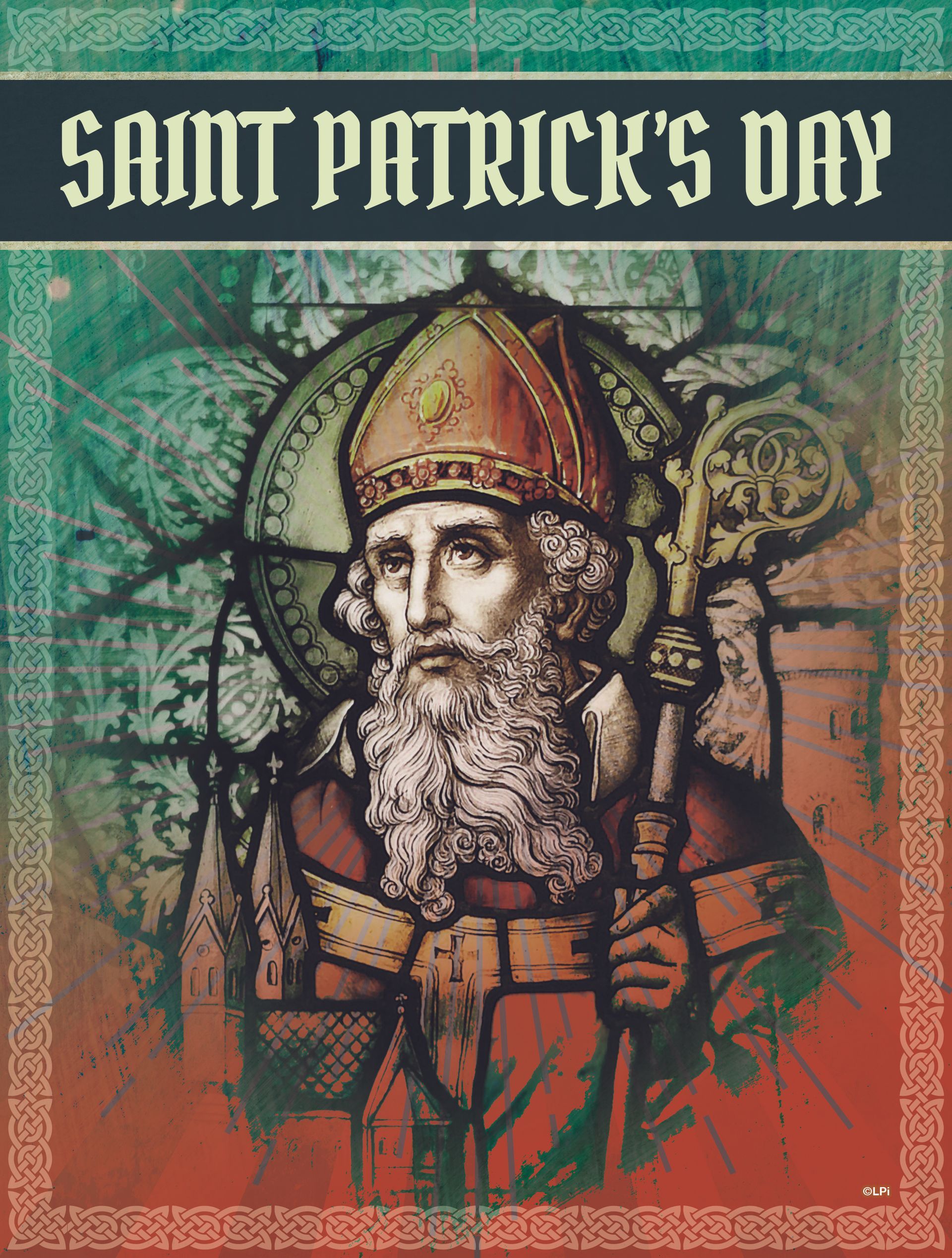
Saint Patrick's Day, or the Feast of Saint Patrick (is a religious and cultural holiday held on 17 March, the traditional death date of Saint Patrick
Saint Patrick's Day, or the Feast of Saint Patrick is a religious and cultural holiday held on 17 March, the traditional death date of Saint Patrick.
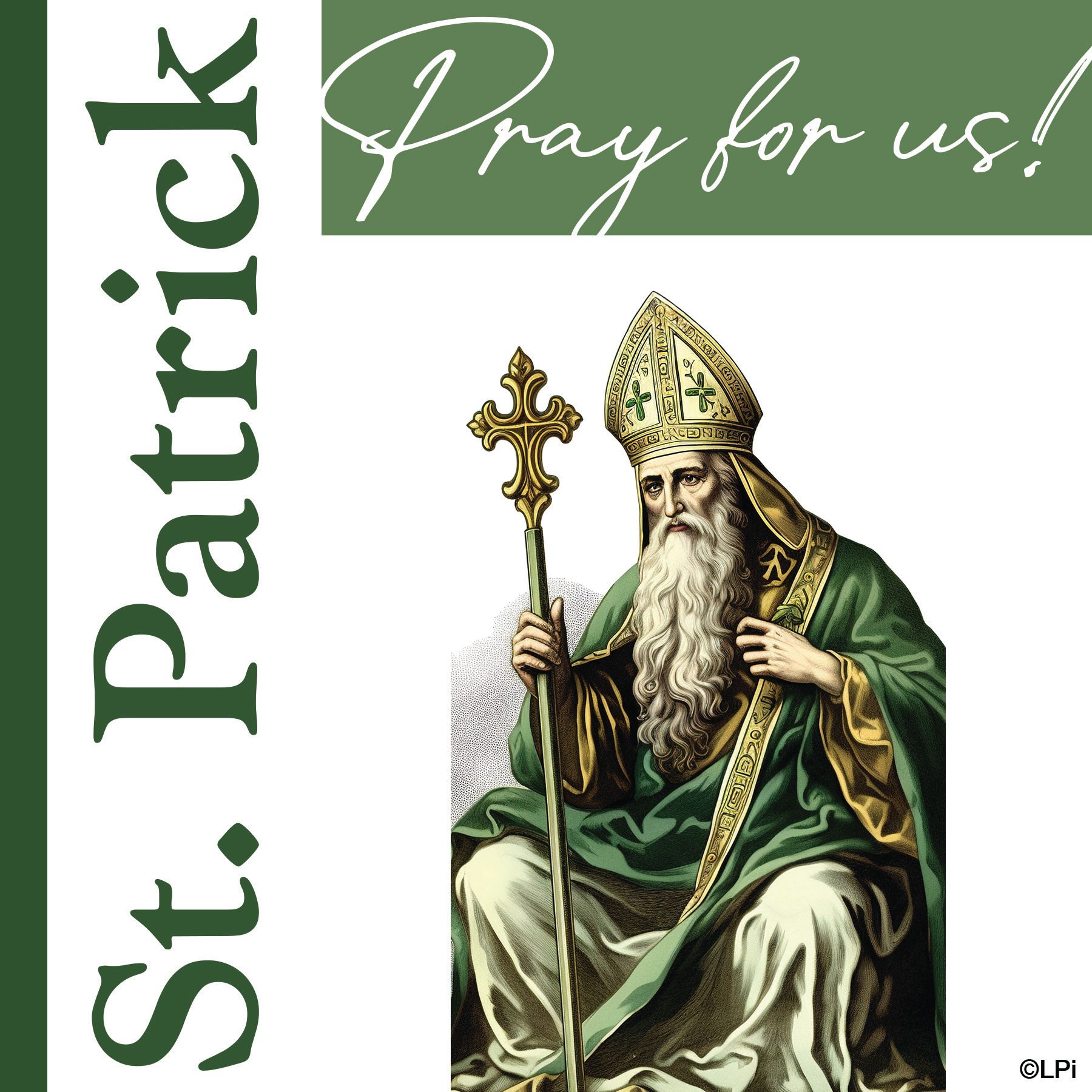
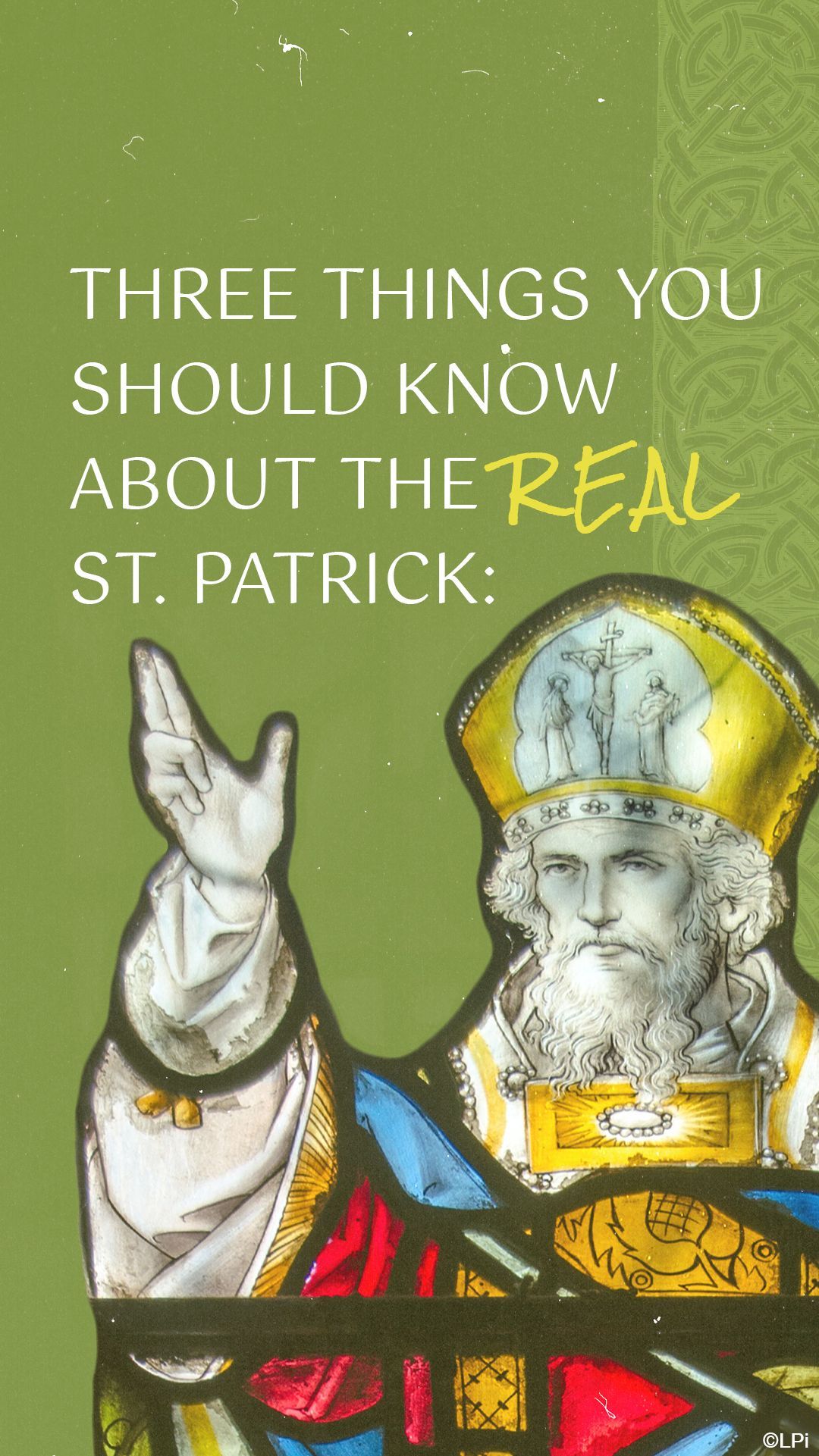
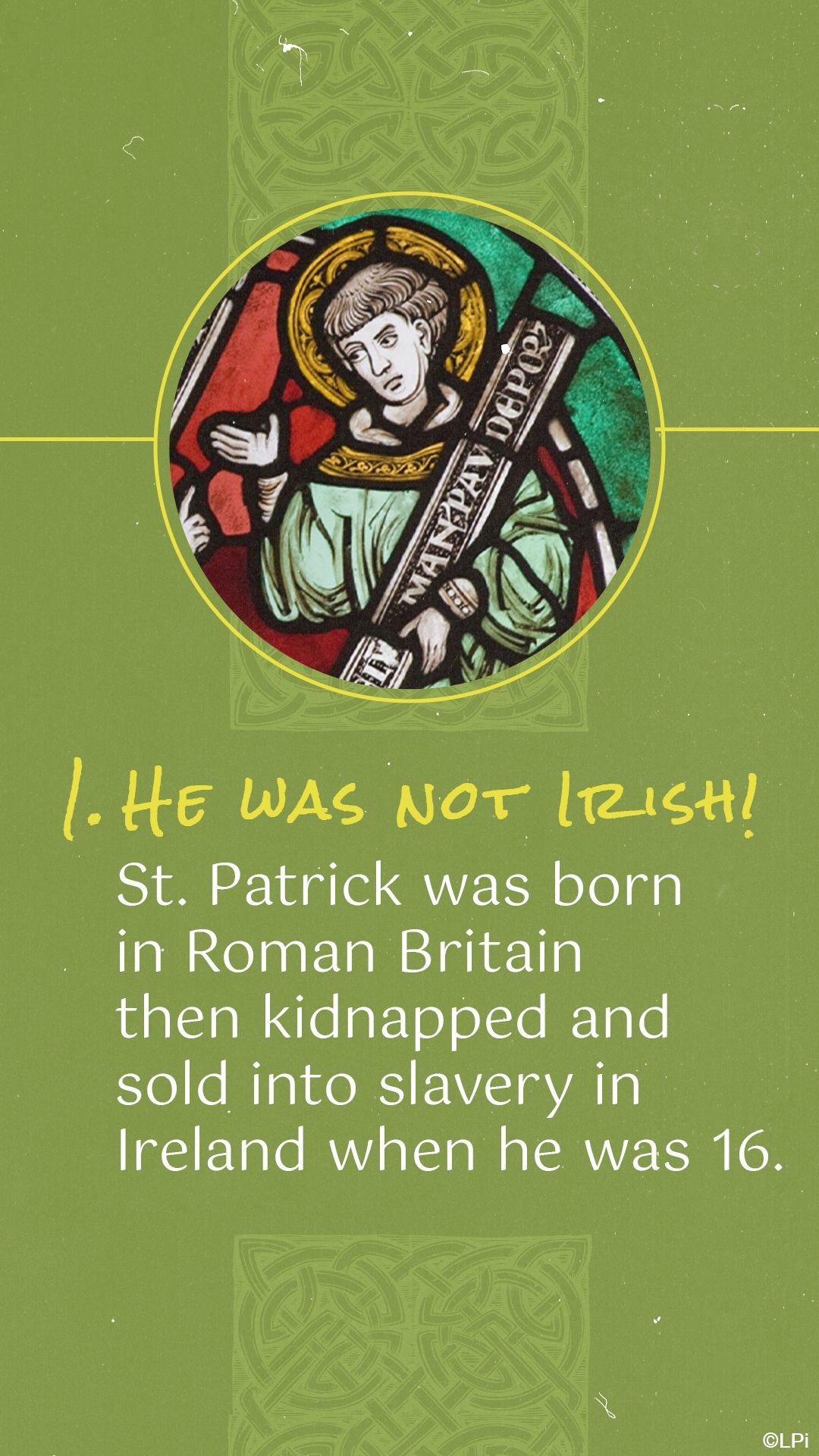
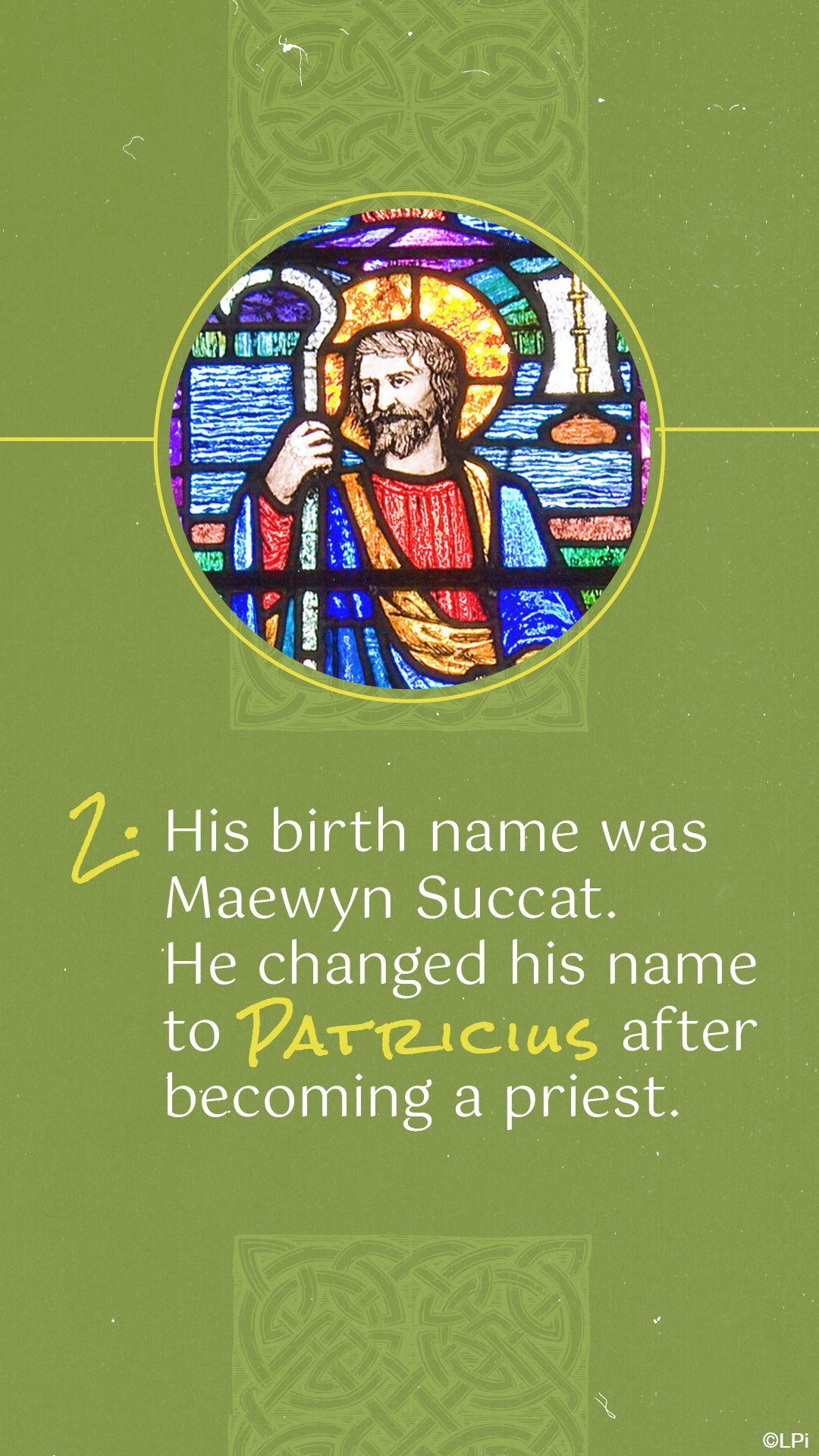
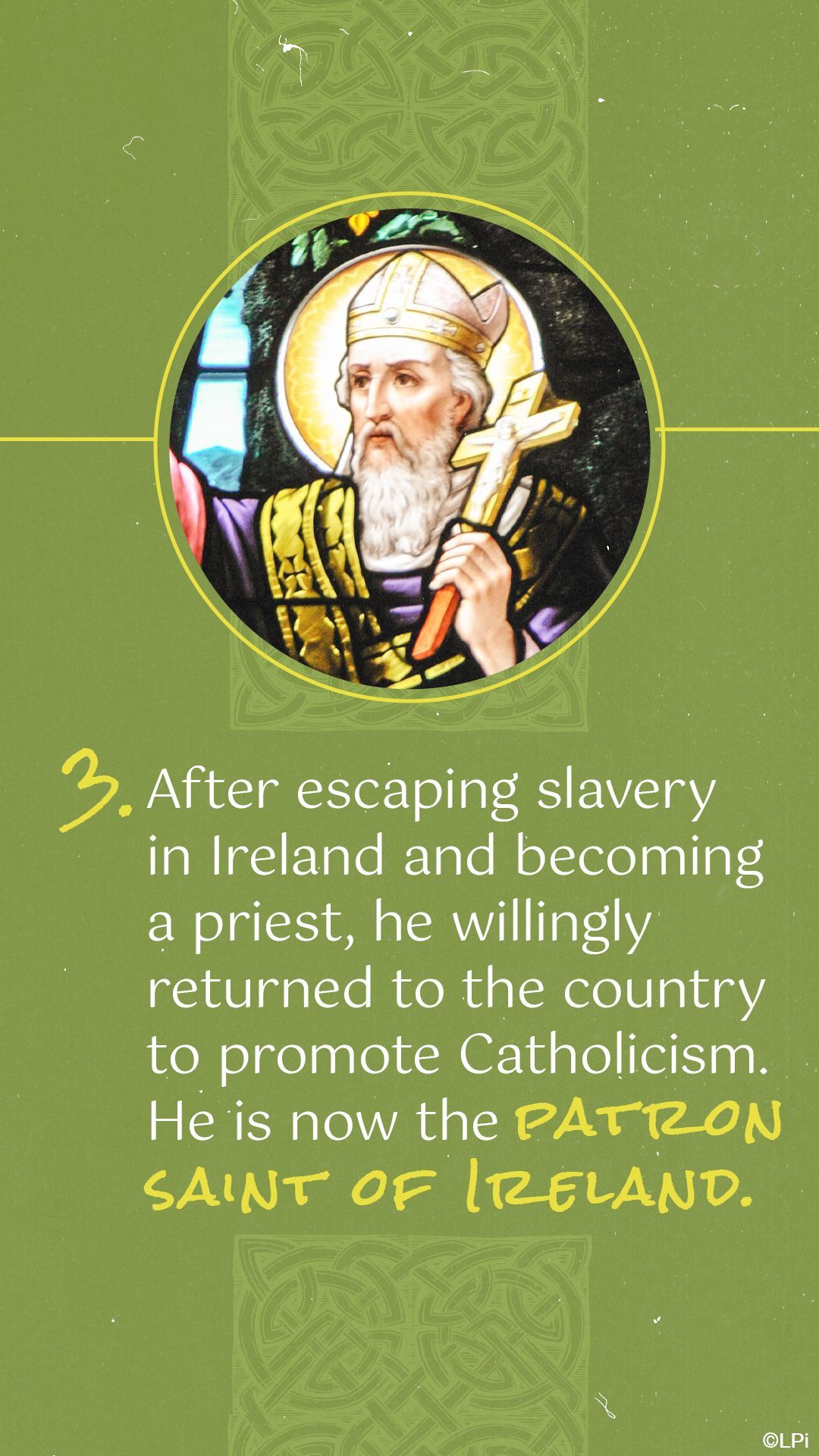
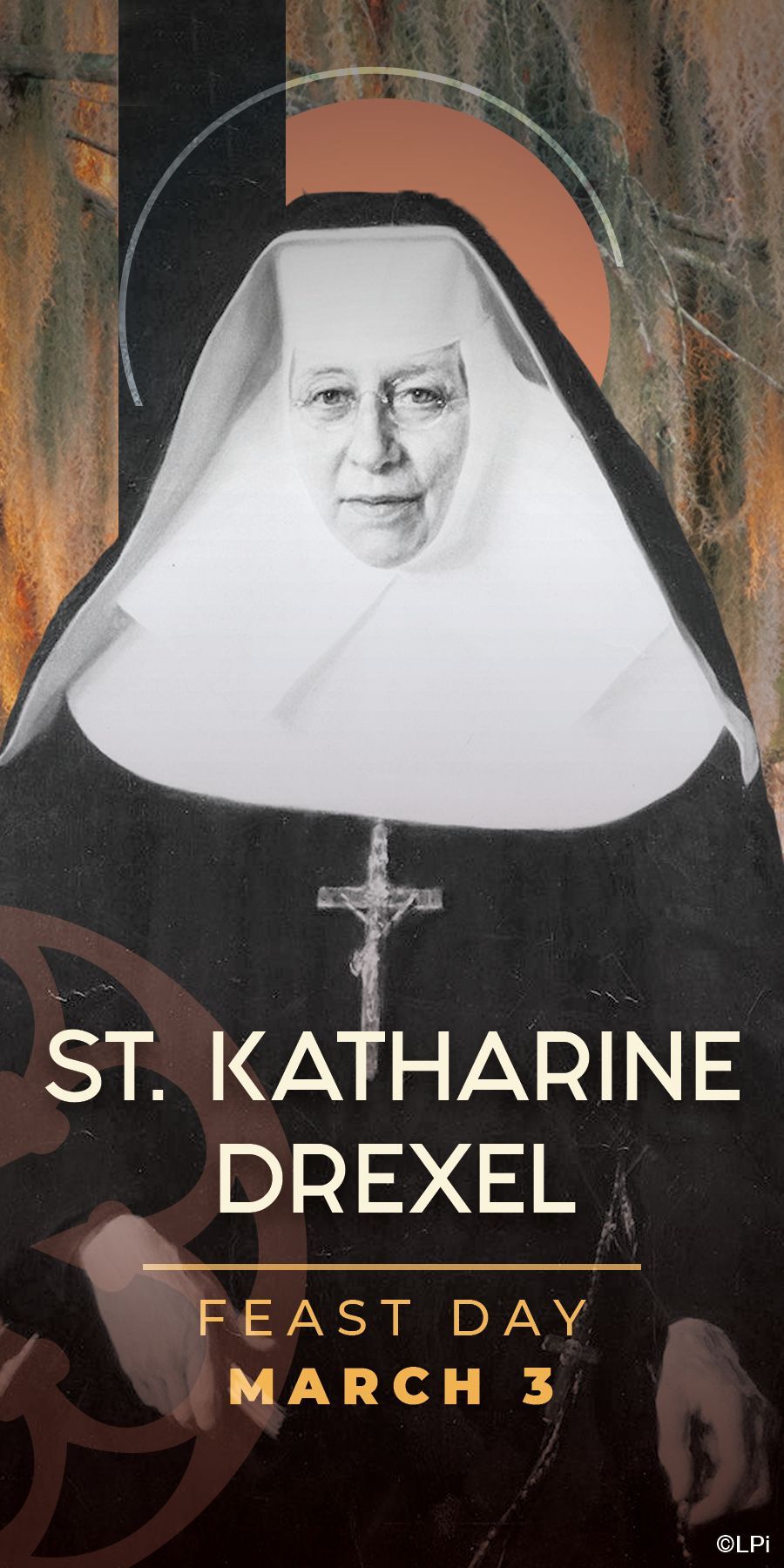
St. Katharine Drexel | March 3
Short Bio
St. Katharine Drexel (1858–1955), is one of the first American-born saints. Giving up her inheritance, she founded a religious order which established 63 schools and 50 missions for African and Native Americans, including Xavier University of Louisiana.
Biography
Born in Philadelphia, St. Katharine Drexel (November 26, 1858 – March 3, 1955), grew up to become one of the first American-born saints. Her mother passed away when she was only five weeks old. Her father, a renowned banker, remarried a wonderful woman, and together they raised St. Katherine Drexel and her two sisters in a life of privilege. Both financially and spiritually well-endowed, the Drexels were devout Catholics and set an excellent example of true Christian servitude with prayer and care for the poor.
After her father’s death, St. Katharine considered joining a contemplative order. However, during an audience with the Pope while on a trip to Rome with her sister, when she asked for more missionaries to be sent to the American West, the Pope asked her to become a missionary herself! Now known as the Apostle for Social Justice, St. Katharine gave up her inheritance and instead devoted her life to the material and spiritual well-being of Black and Native Americans. She established the Sisters of the Blessed Sacrament for Indians and Colored, and together they opened a boarding school in Santa Fe, the first of 50 missions for Native Americans in 16 states. At the time of her death, she had also established a system of 63 schools, including Xavier University in New Orleans, the first Catholic university in the United States for African Americans. Believing that education was the key to opportunity, her love of the Blessed Sacrament sustained her mission.
At 77, she suffered a heart attack and was forced to retire from active ministry. She spent the next 20 years of her life in quiet yet intense prayer. She died at the age of 96 and was canonized in 2000 by Pope John Paul II. St. Katharine Drexel, pray for us!
St. Casimir - March 2
We live in a culture that tells children, "Follow your dreams! Be who you want to be!" It might be hard to imagine the courage it took to be St. Casimir. A prince second in line for the throne of Poland, the young man had great expectations placed upon him. Inspired by a devout tutor, St. Casimir developed a deep faith. As a teenager, he would often sleep on the ground, reject courtly finery for plain clothes, and dedicate long hours to prayer. He even made a private commitment to celibacy. Casimir's avoidance of a military engagement made his father furious. The king imprisoned his own son. The episode confirmed to St. Casimir that he served a higher King, Jesus Christ. He would spend the rest of his life in prayer, study, and service to the poor. When we need courage to do what is right, St. Casimir, pray for us!

St. Polycarp of Smyrna | February 23
As a disciple of St. John, the Evangelist, St. Polycarp was able to hear about Jesus’ life, death, and resurrection directly from those who witnessed it. Because Polycarp was ordained as Bishop of Smyrna by St. John, he is one of three chief Apostolic Fathers, along with Clement of Rome and Ignatius of Antioch.
During his life Polycarp defended the Church against heresies. His important writing, the Letter to the Philippians, quoted the Gospels and Acts of the Apostles, stressing Paul’s authority in the Church and setting out clear arguments against the gnostic heresy that denied Christ’s divinity.
The early period of the Church was a dangerous time to be a Christian and like many, St. Polycarp was martyred. He was captured by Romans and sentenced to burn at the stake. However, the fire did not touch him, instead rising up like sails around him. Seeing that the flames would not injure Polycarp, the Romans stabbed him instead. The Martyrdom of Polycarp is perhaps the earliest fully preserved account of a Christian martyr.
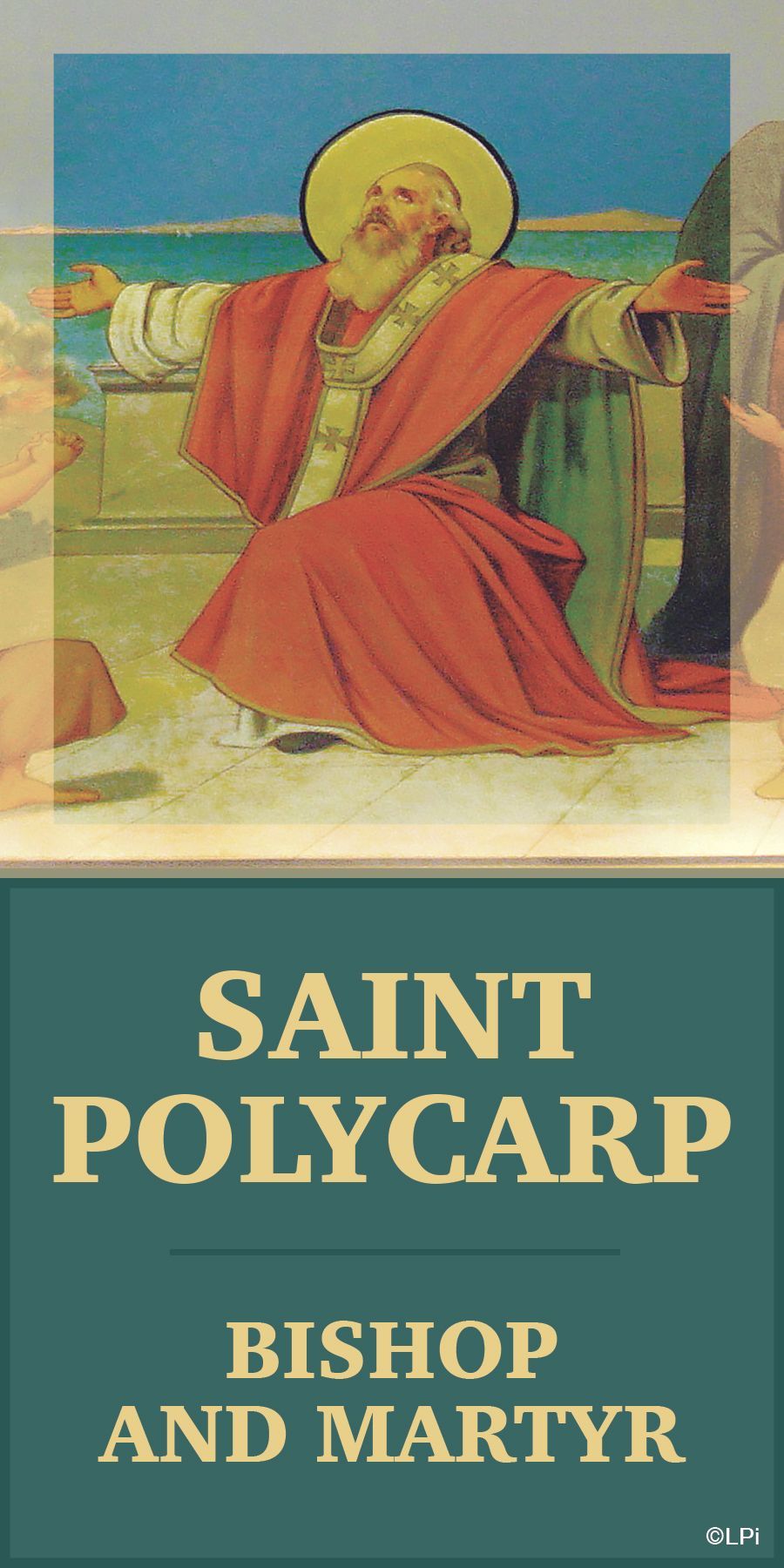

Saint Gregory of Narek | February 27
St. Gregory was raised in a monastery and eventually entered the Narek Monastery, known as Narekavank in what is now Turkey, as a monk and lived there for nearly the entirety of his life.
At the time, Armenia was experiencing a literature, painting, architecture, and theological renaissance, in which Gregory participated.
As an Armenian monk, Gregory lived humbly and taught at the monastic school. He wrote his prayers in the encyclopedia of prayer for all nations in hopes the book would one day guide people of all stations around the world to prayer.
He was a leader of the well-developed school of Armenian mysticism at the Monastery and was asked to answer the question, "What can one offer to God, our creator, who already has everything and knows everything better than we could ever express it?"
In his Book of Prayer, also called the Book of Lamentations or the Song of Songs, Gregory wrote that the answer to the question is "the sighs of the heart." The book contains 91 prayers and was completed one year before he died.
Several miracles and traditions have been traced back to Gregory and he is known as "the watchful angel in human form."
Gregory of Narek was venerated as a saint by the Armenian Catholic Church and is also recognized as a saint of the Roman Catholic church. On April 12, 2015, Pope Francis officially proclaimed Gregory of Narek as a Doctor of the Church.

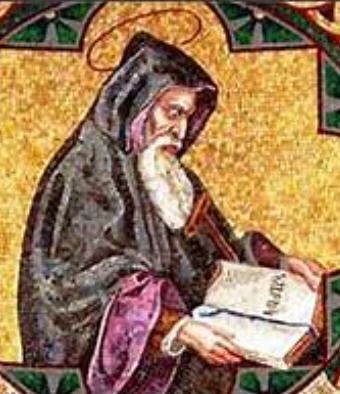

Saint Peter Damian | February 21
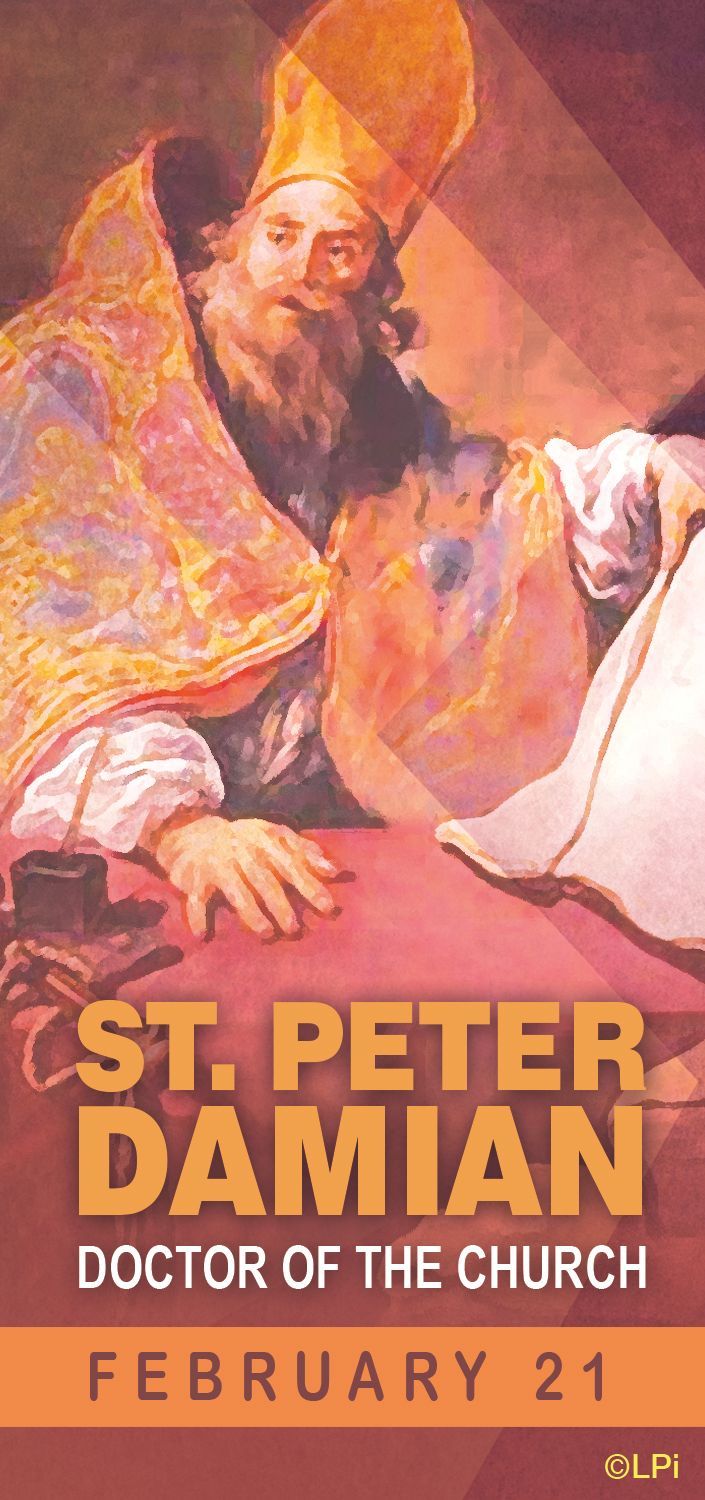
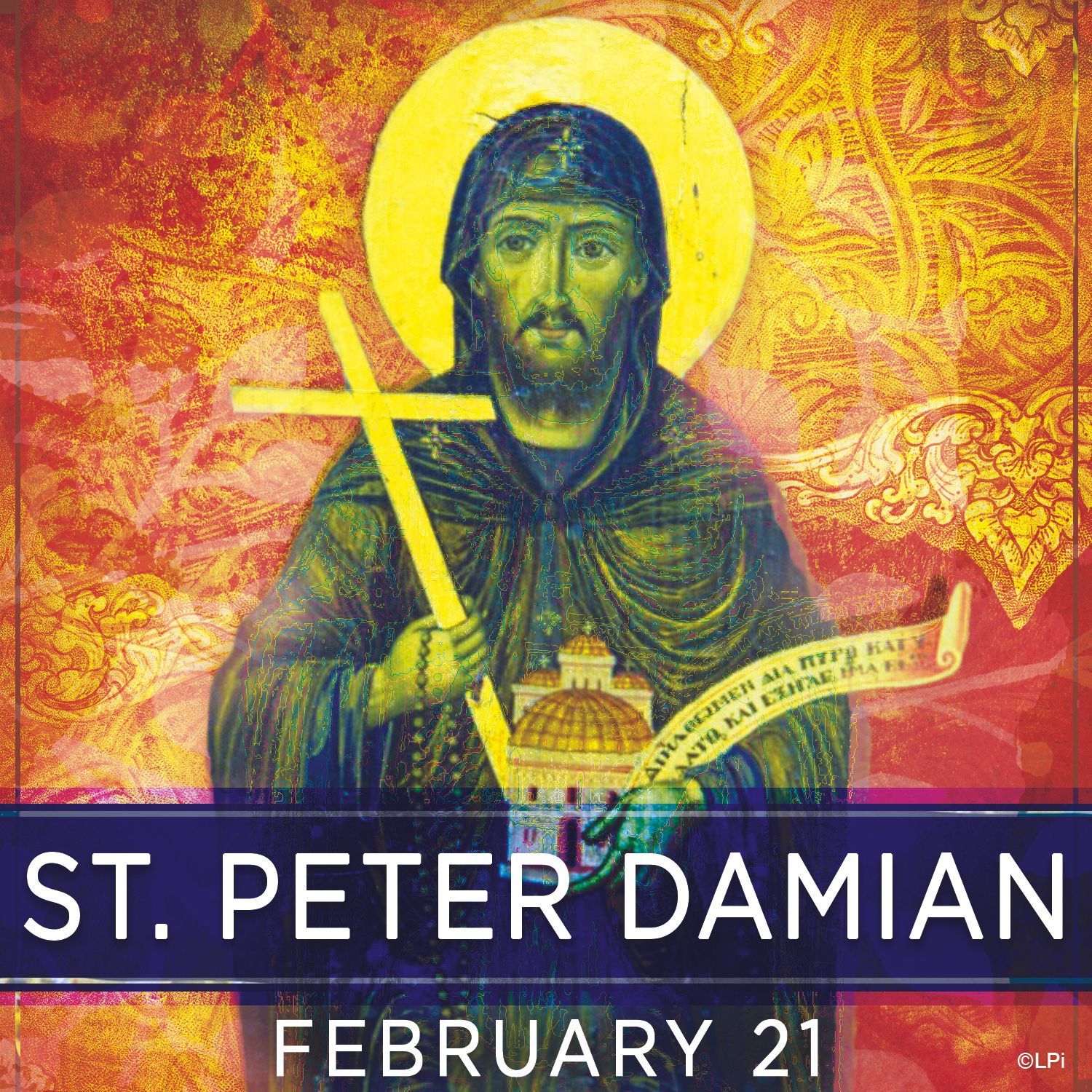
St. Peter Damian is one of those stern figures who seem specially raised up, like St. John Baptist, to recall men in a lax age from the error of their ways and to bring them back into the narrow path of virtue. He was born at Ravenna and, having lost his parents when very young, he was left in the charge of a brother in whose house he was treated more like a slave than a kinsman.
As soon as he was old enough he was sent to tend swine. Another brother, who was archpriest of Ravenna, took pity on the neglected lad and undertook to have him educated. Having found a father in this brother, Peter appears to have adopted from him the surname of Damian.
Damian sent the boy to school, first at Faenza and then at Parma. He proved an apt pupil and became in time a master and a professor of great ability. He had early begun to inure himself to fasting, watching and prayer, and wore a hairshirt under his clothes to arm himself against the alurements of pleasure and the wiles of the devil. Not only did he give away much in alms, but he was seldom without some poor persons at his table, and took pleasure in serving them with his own hands.
